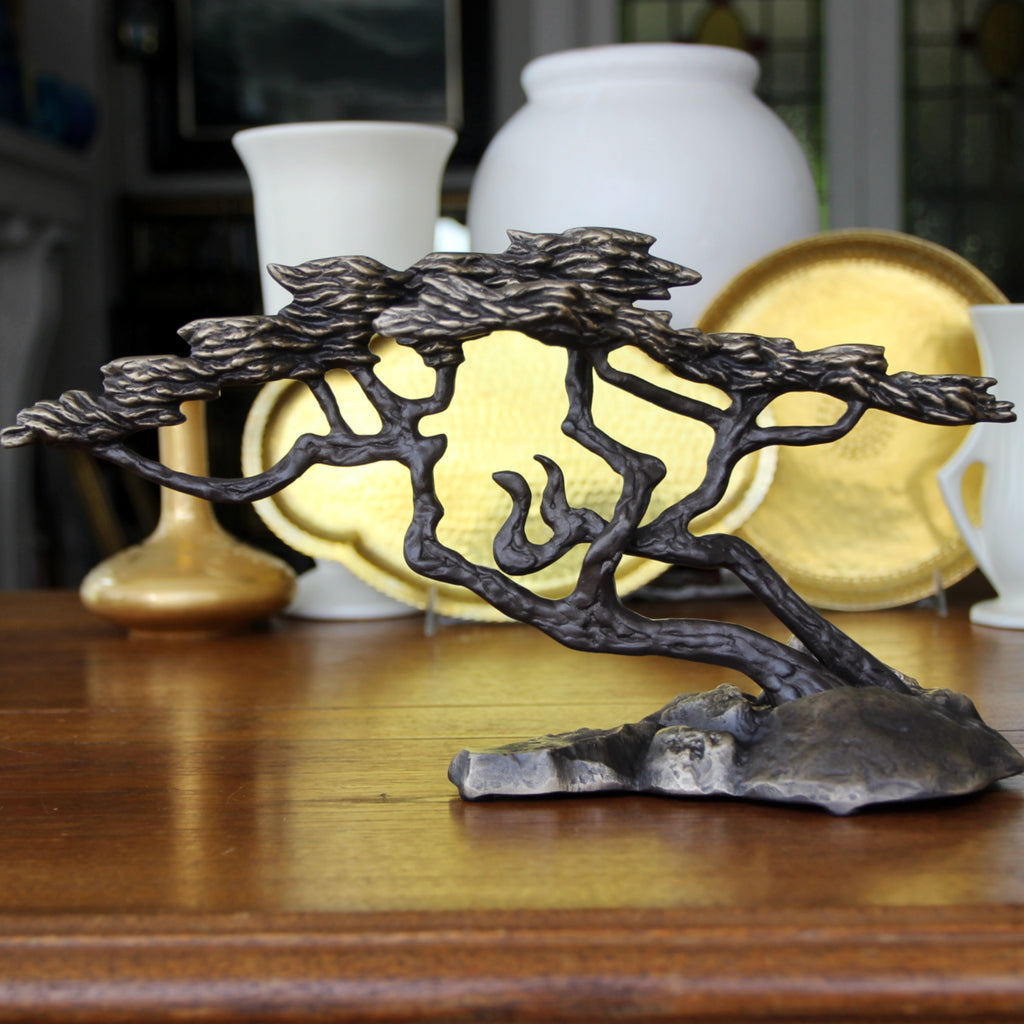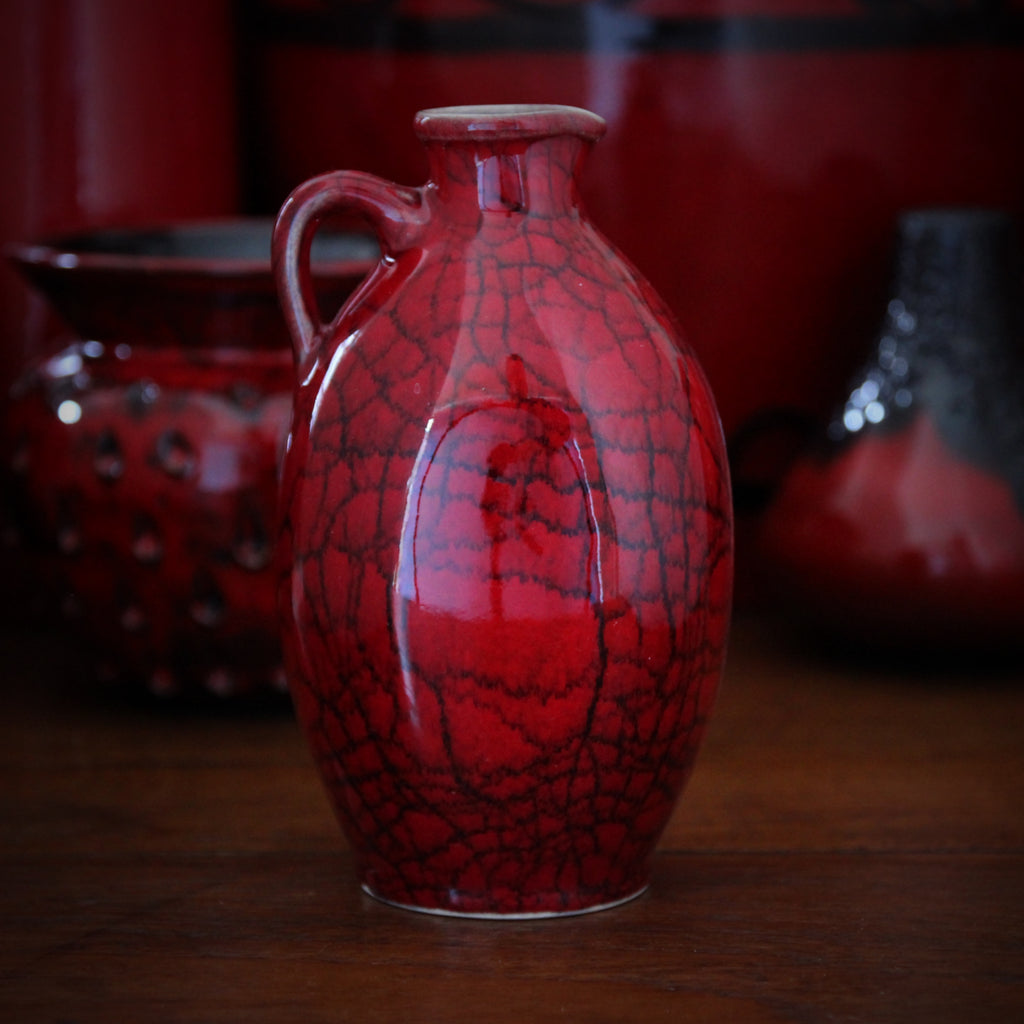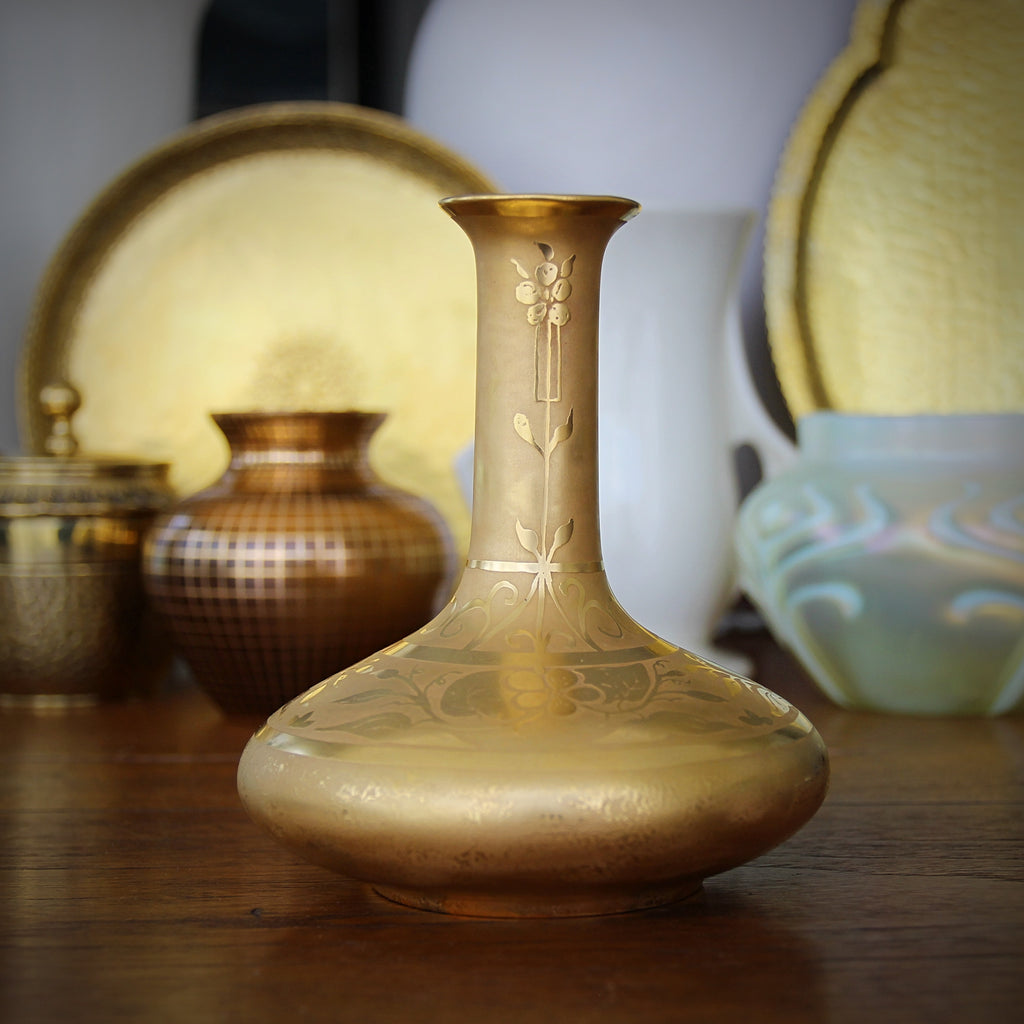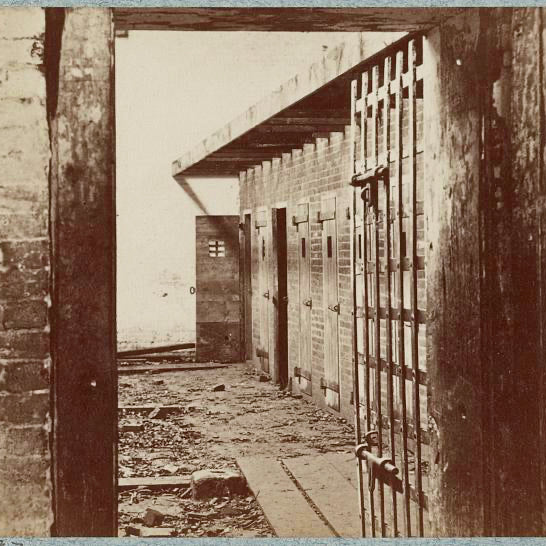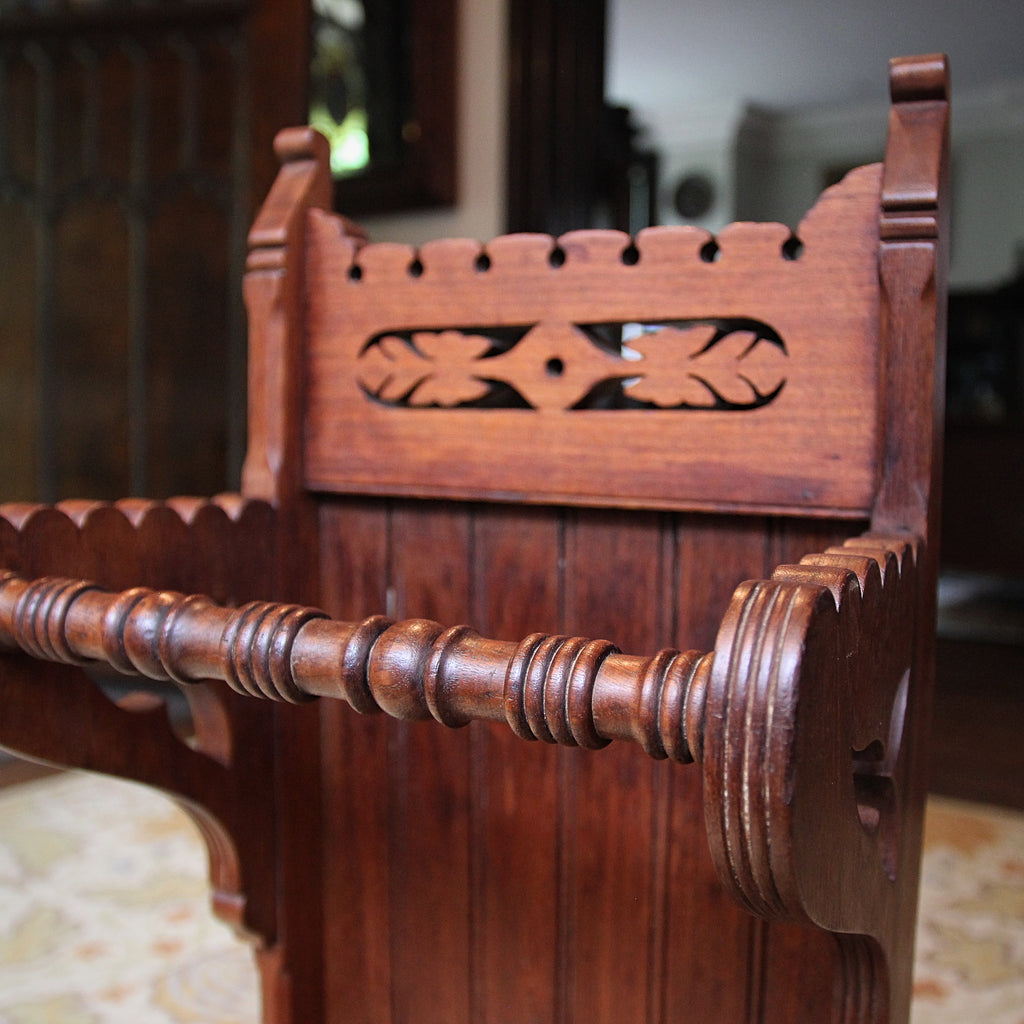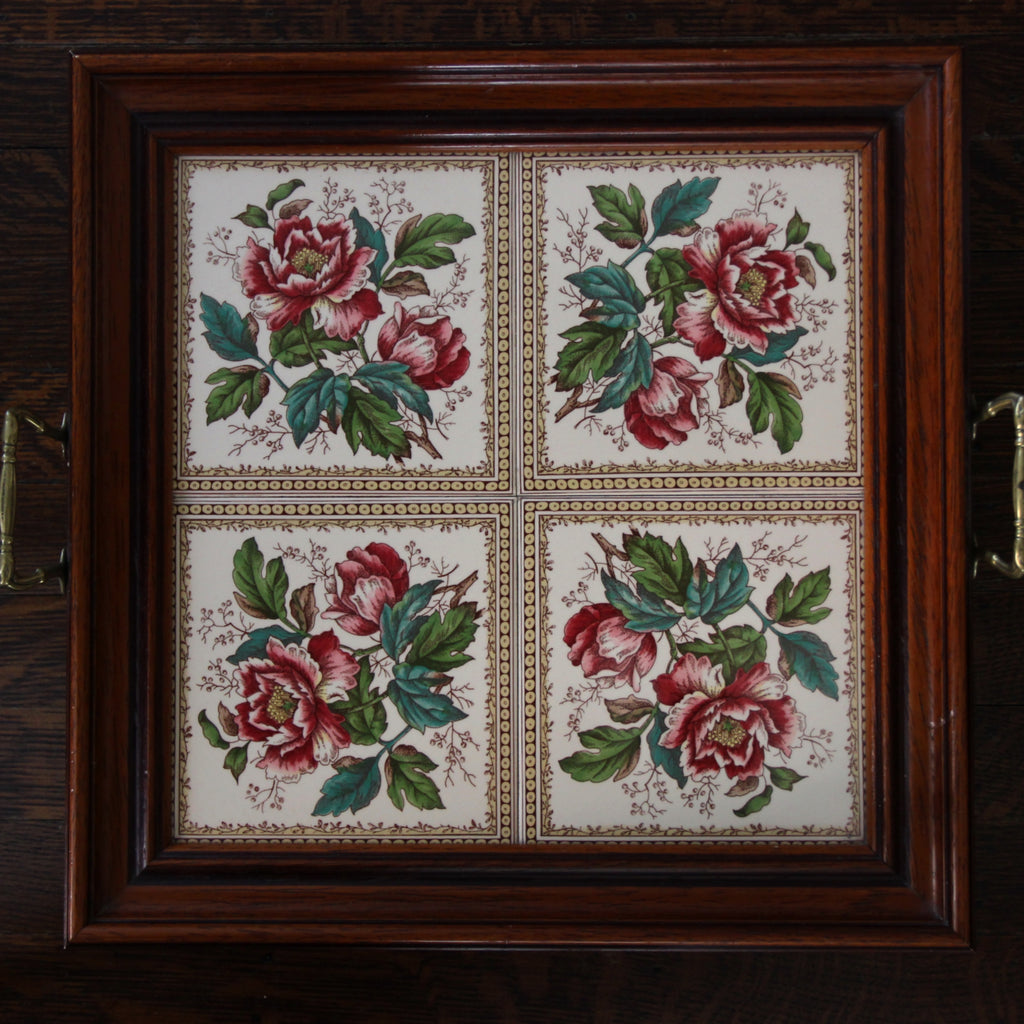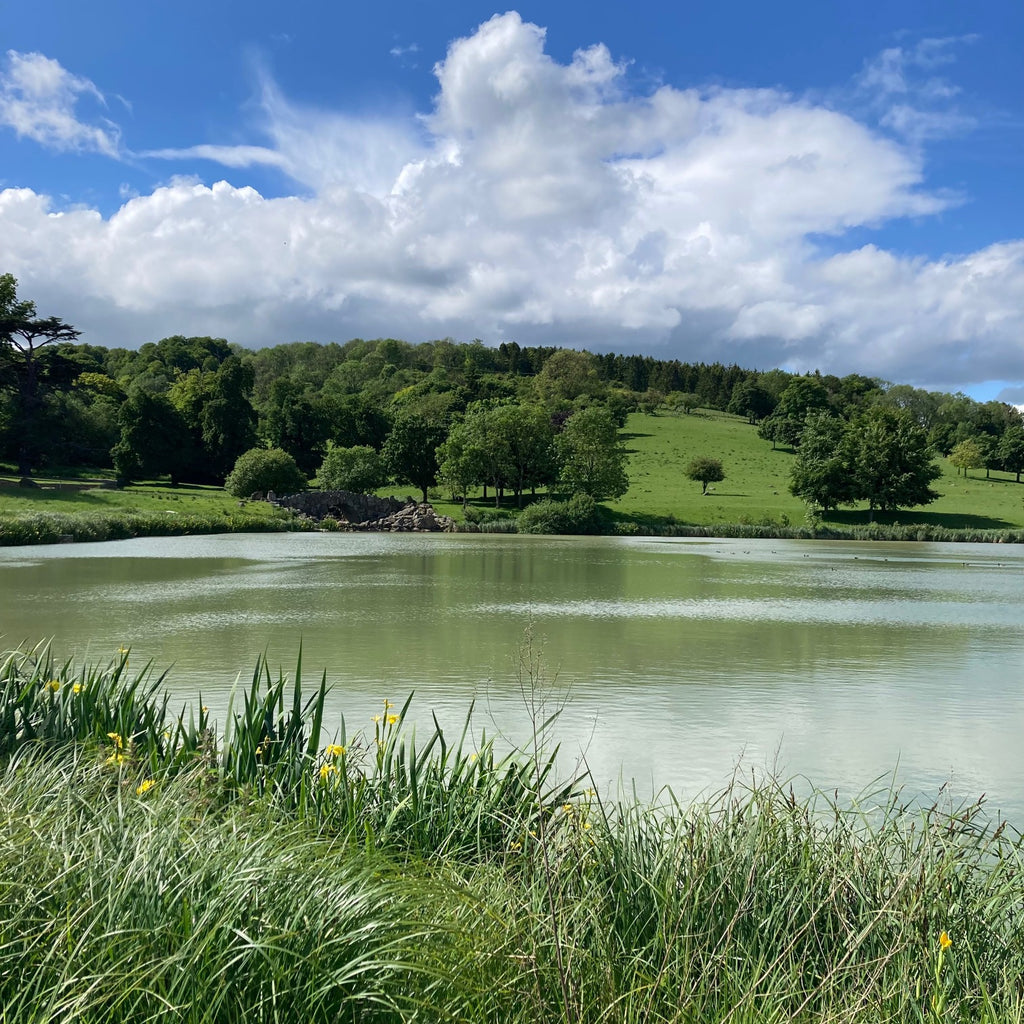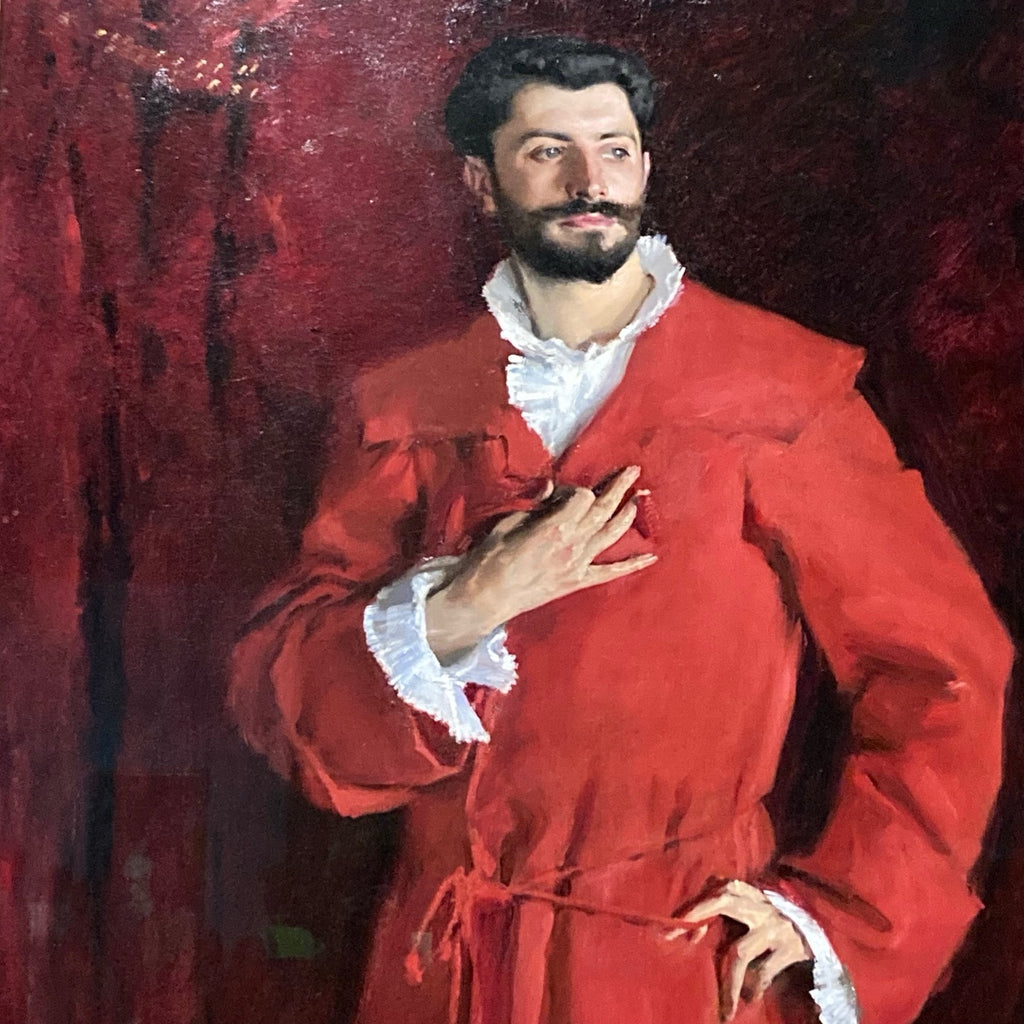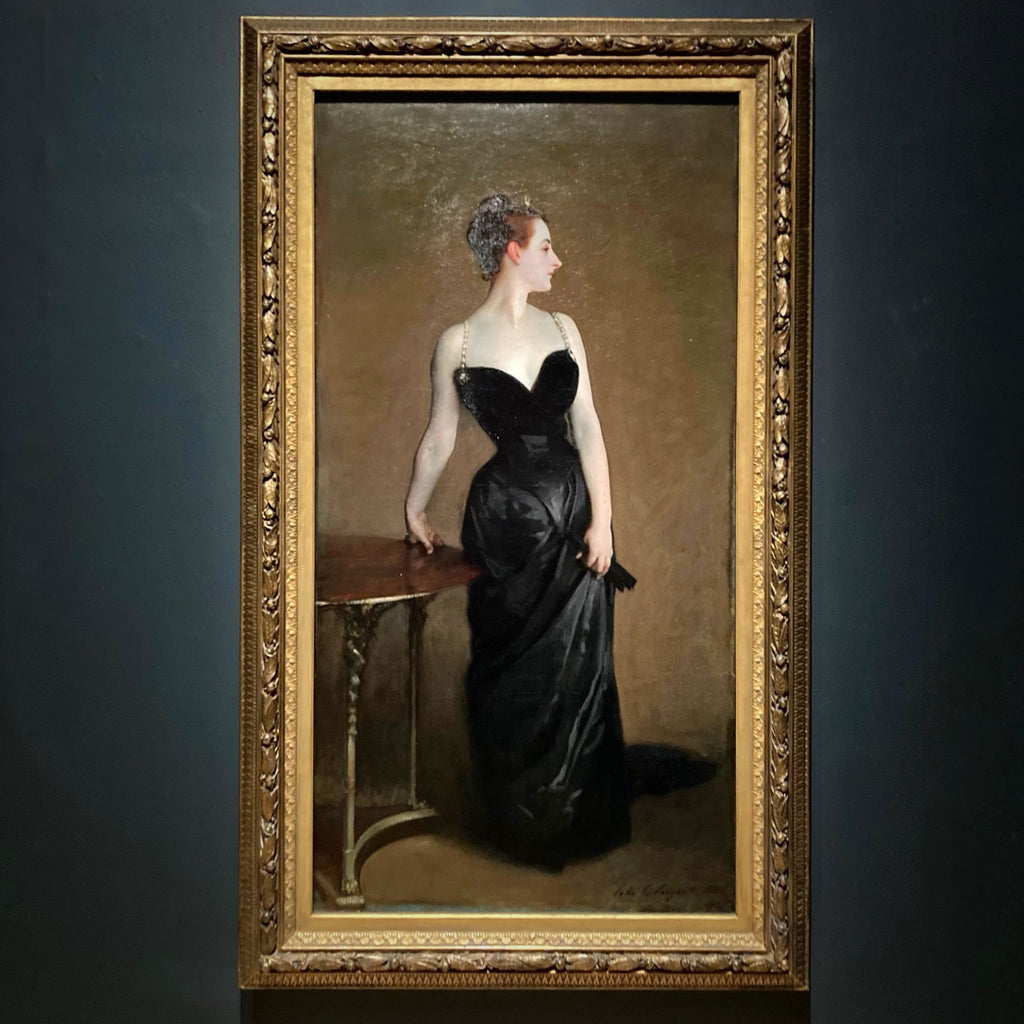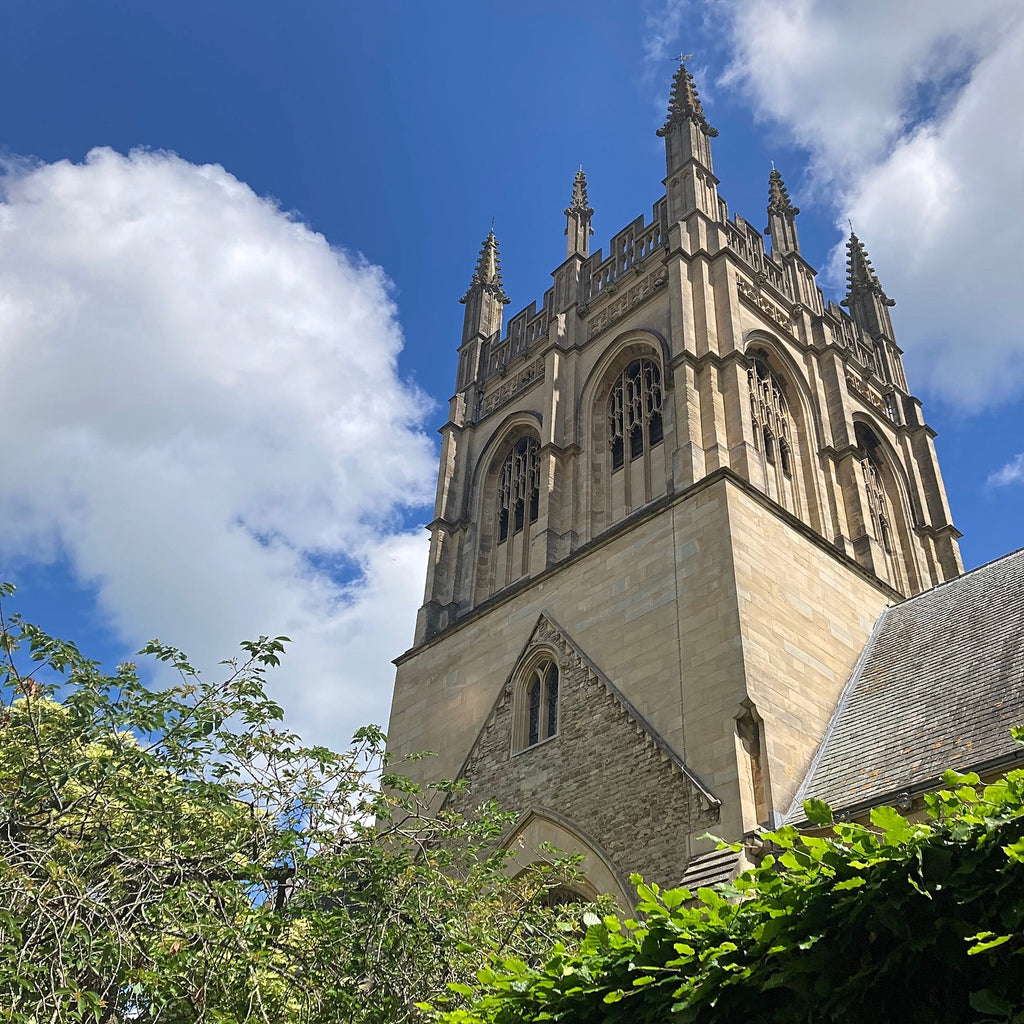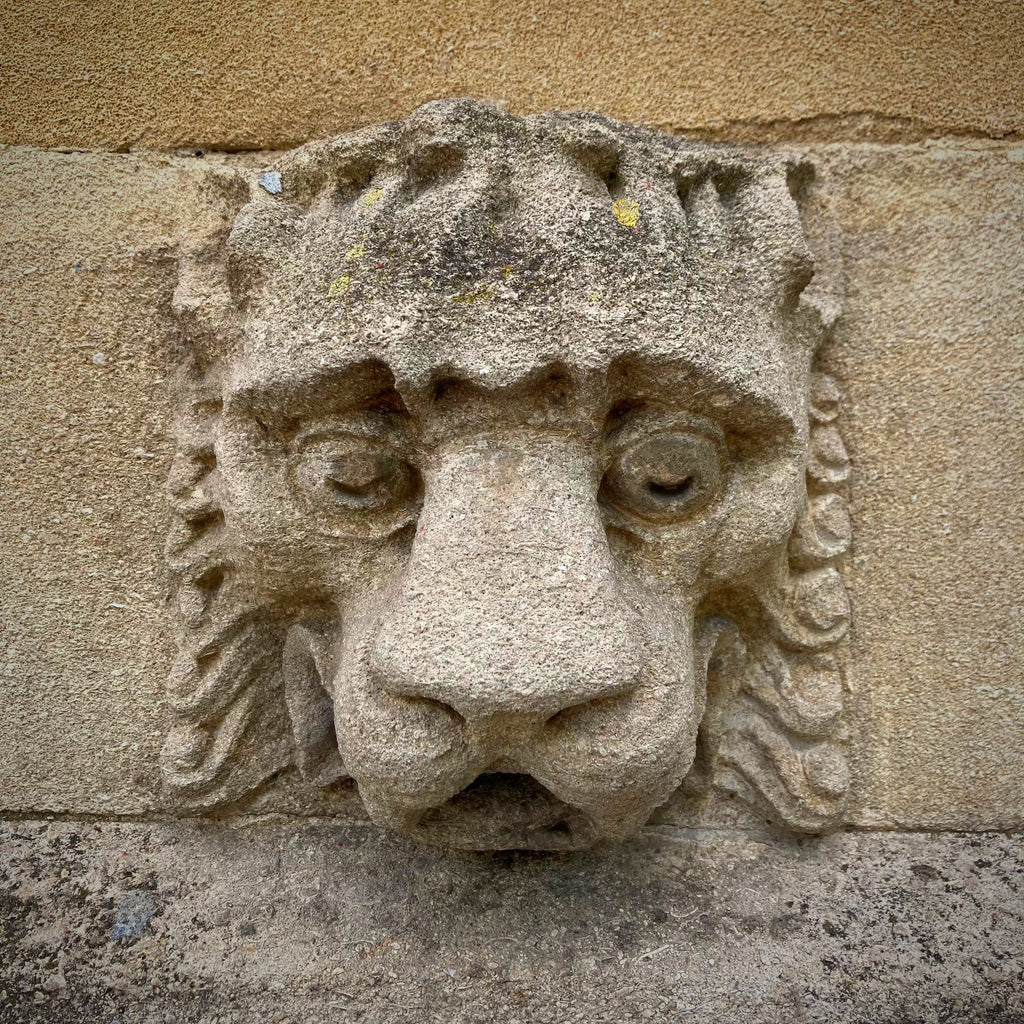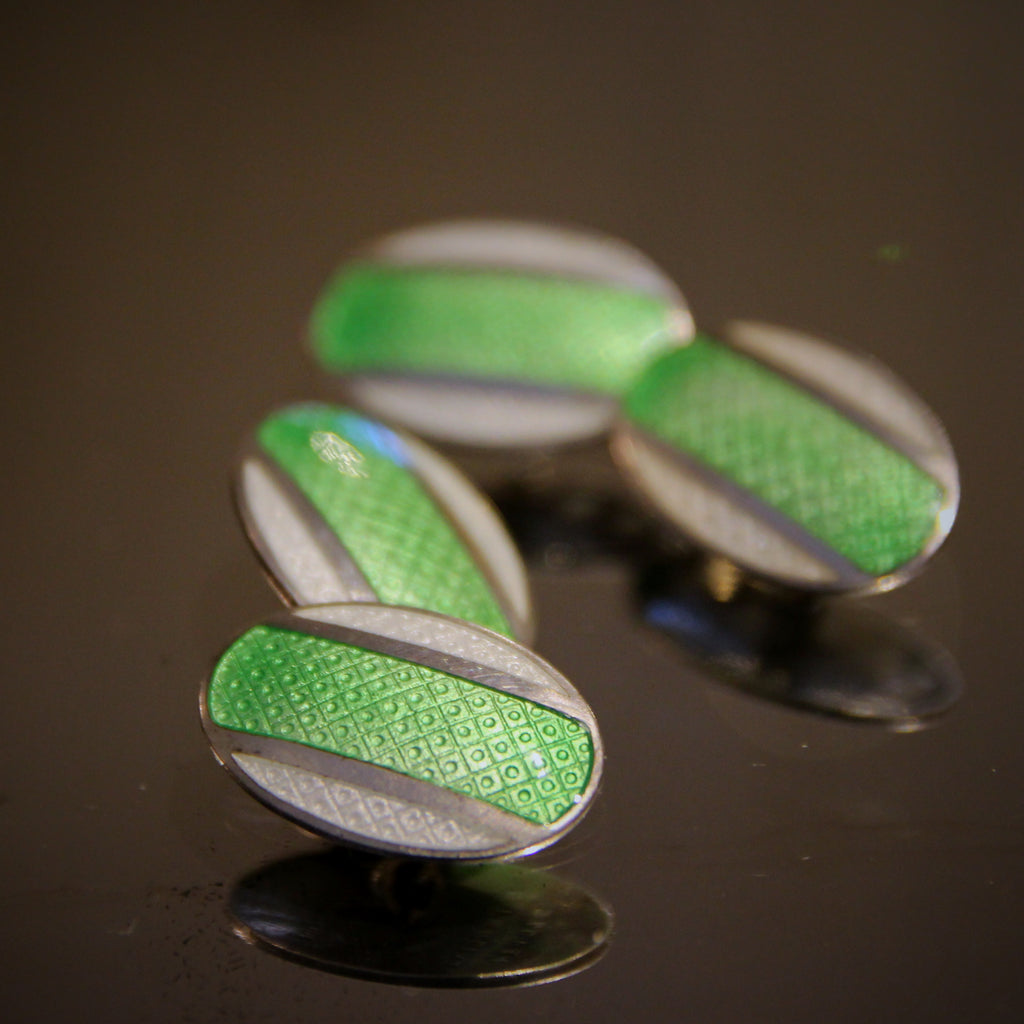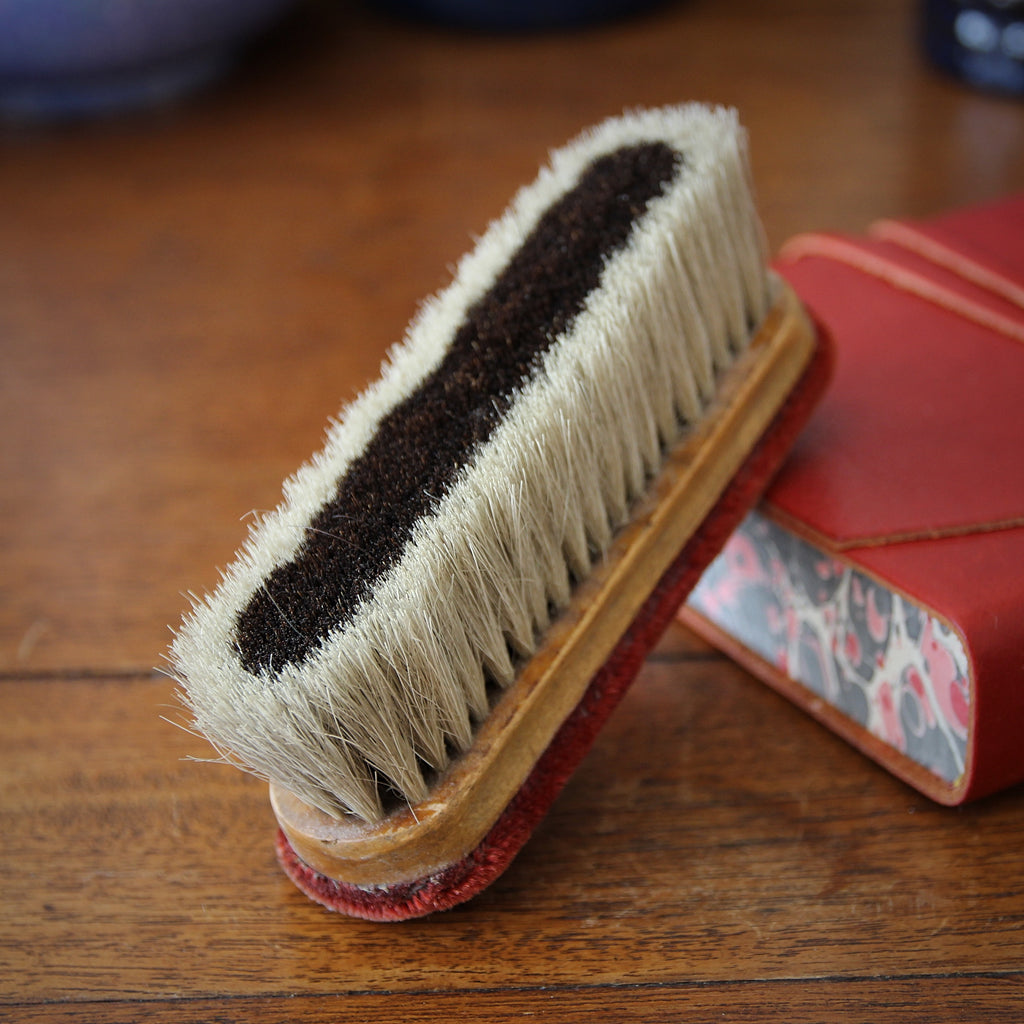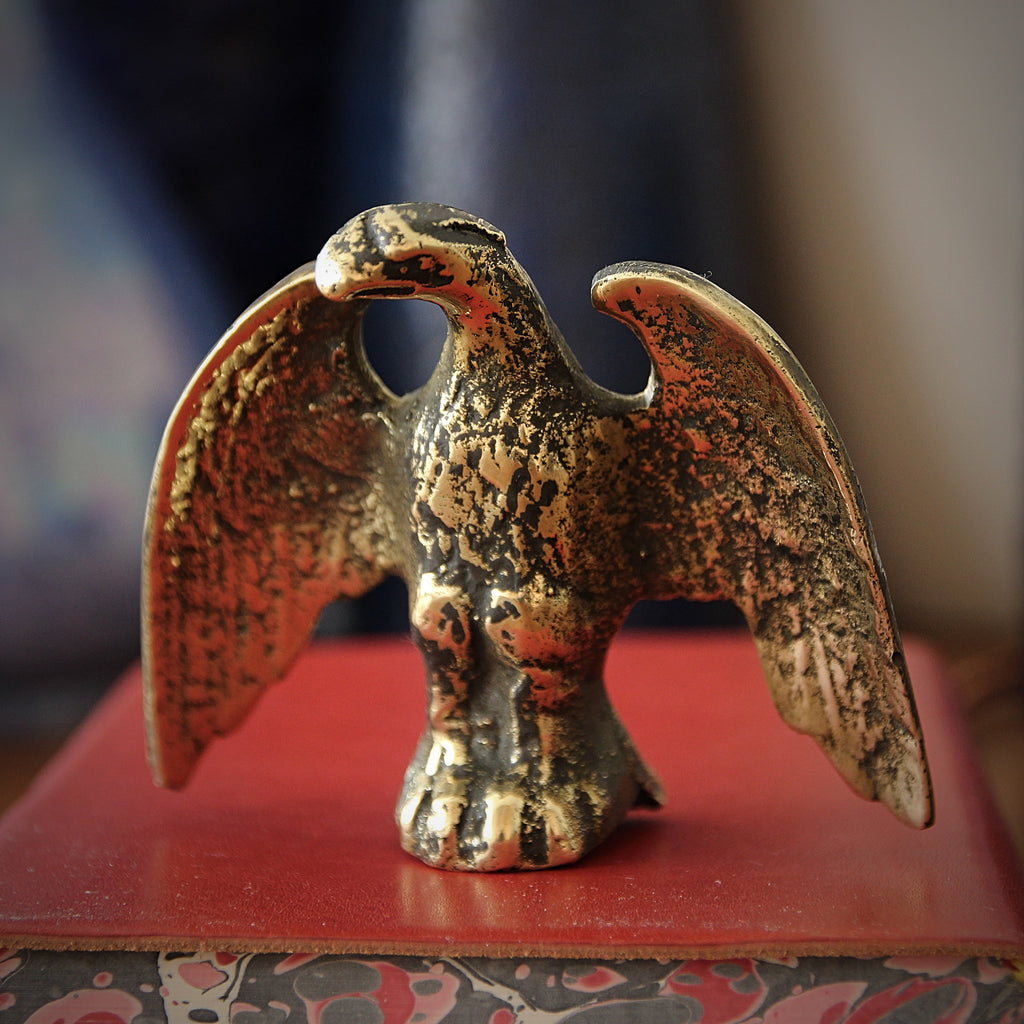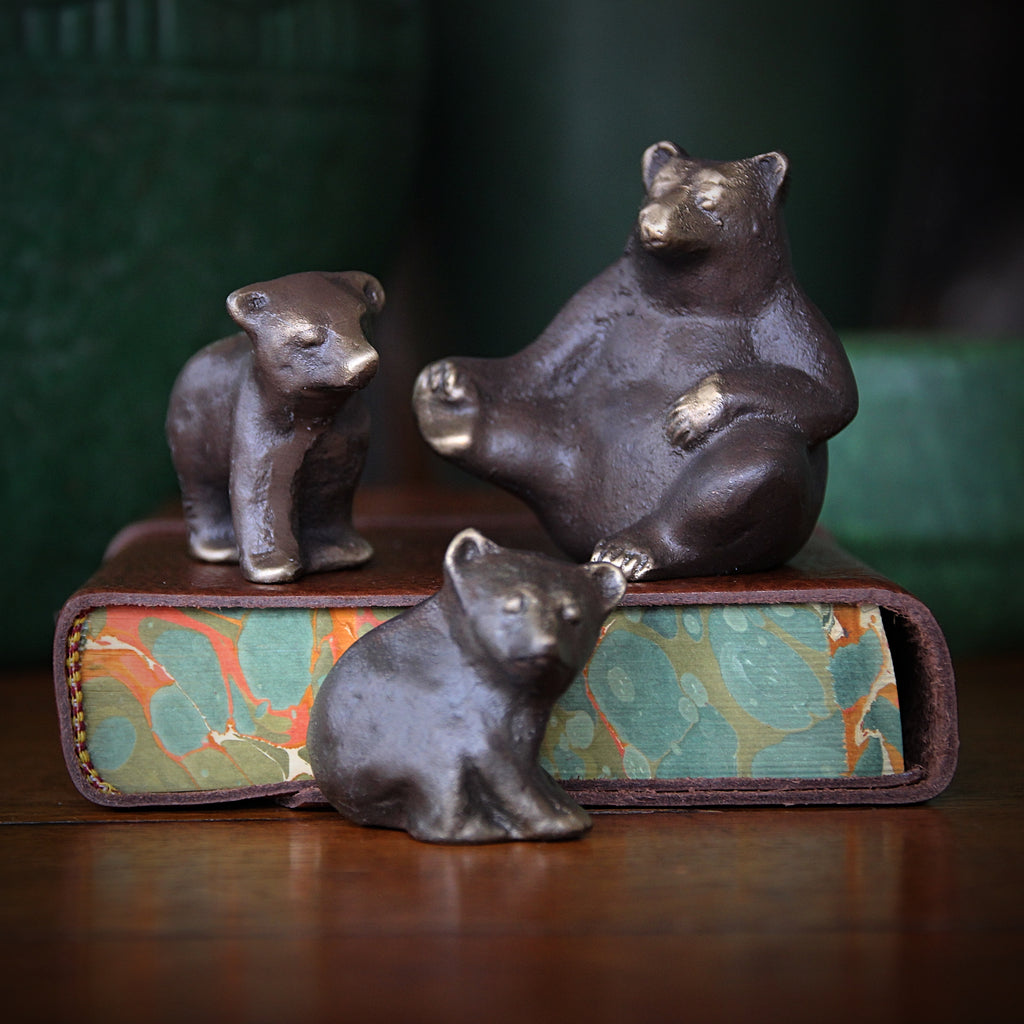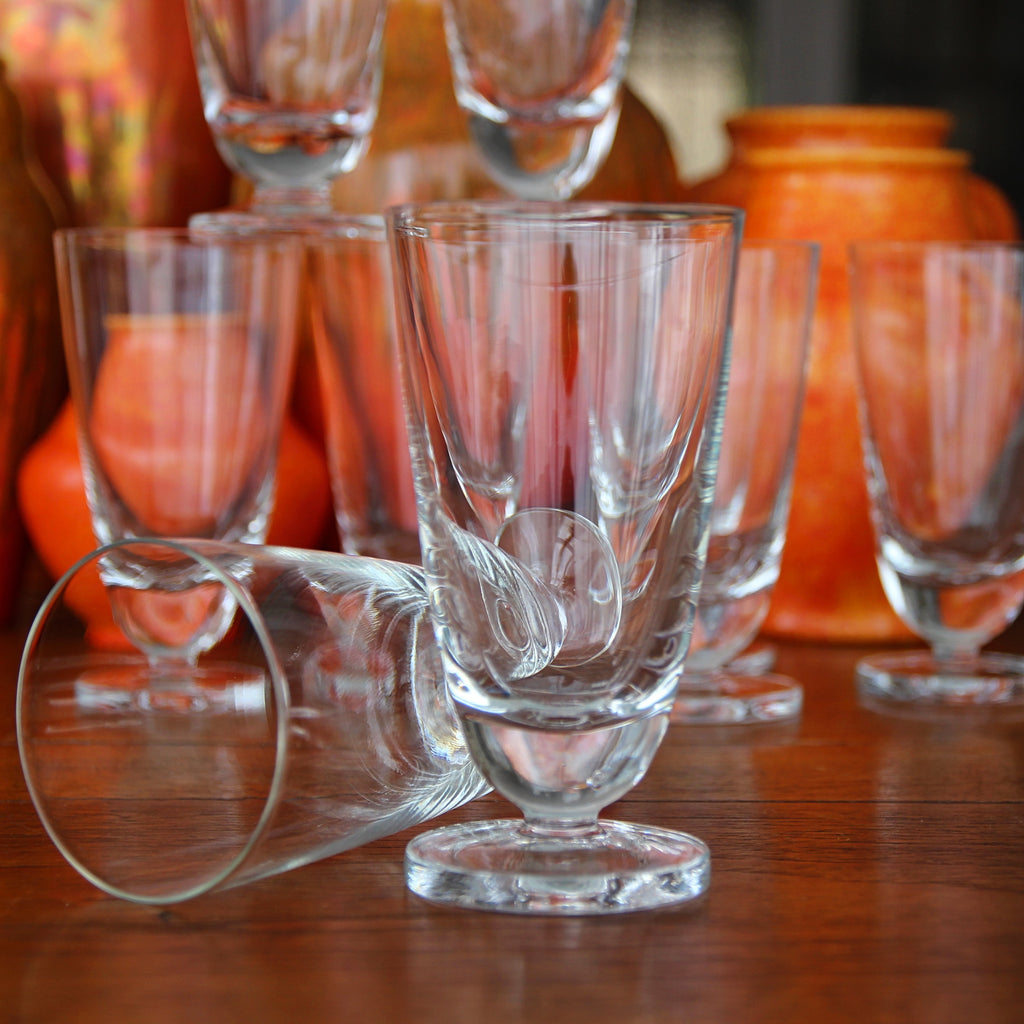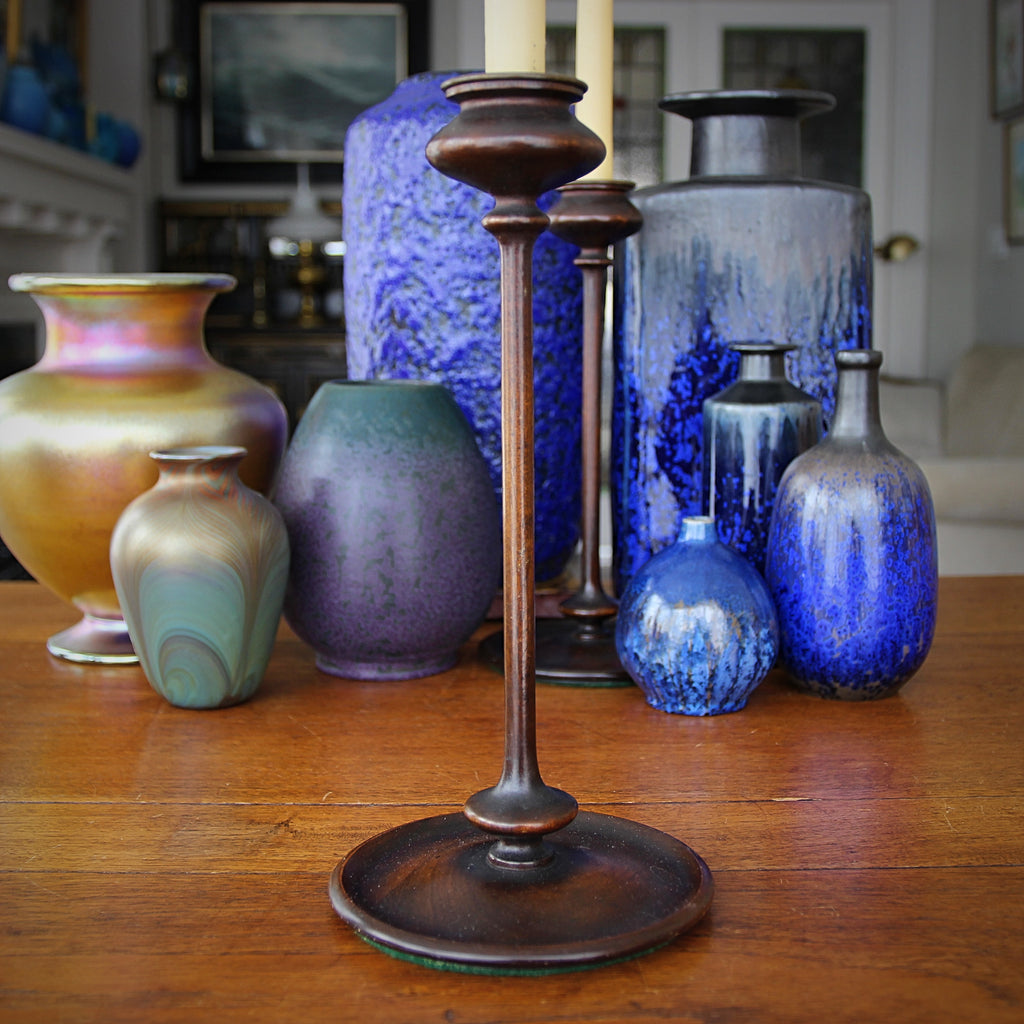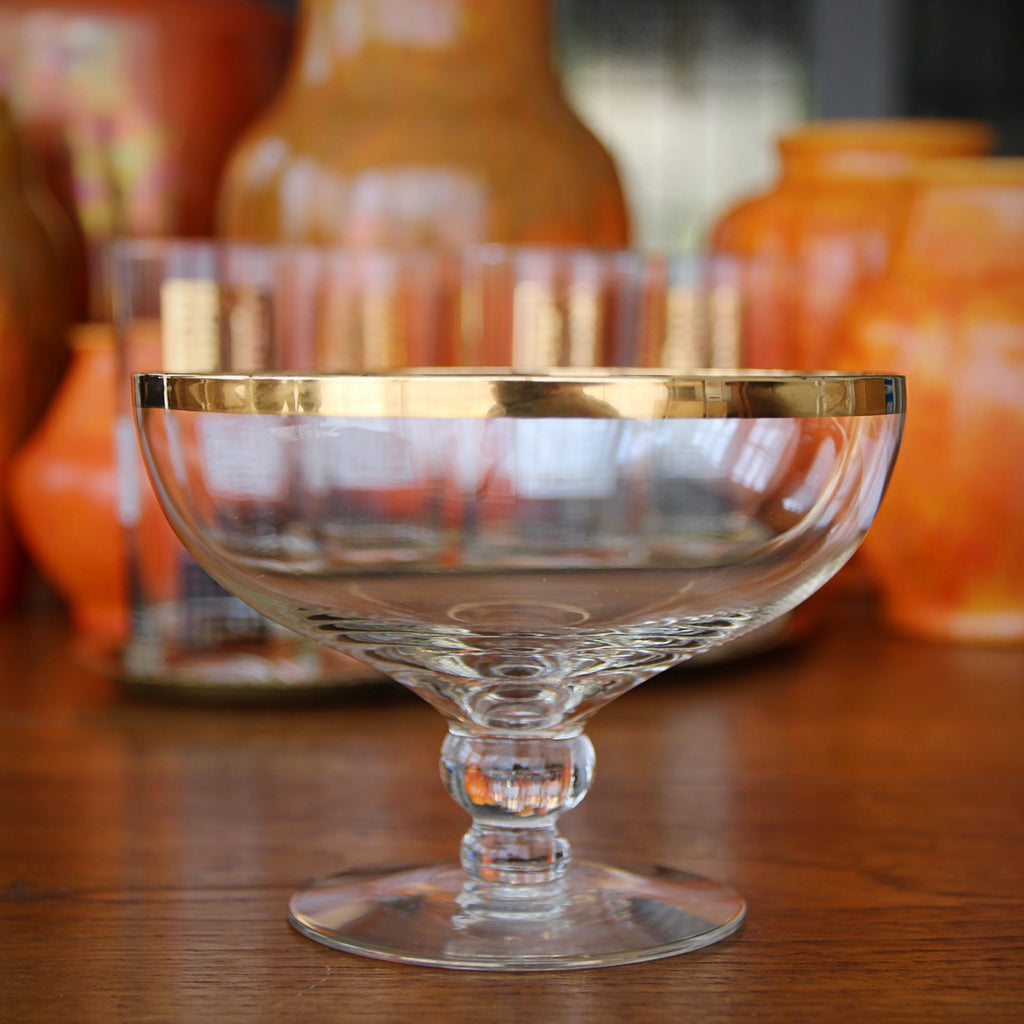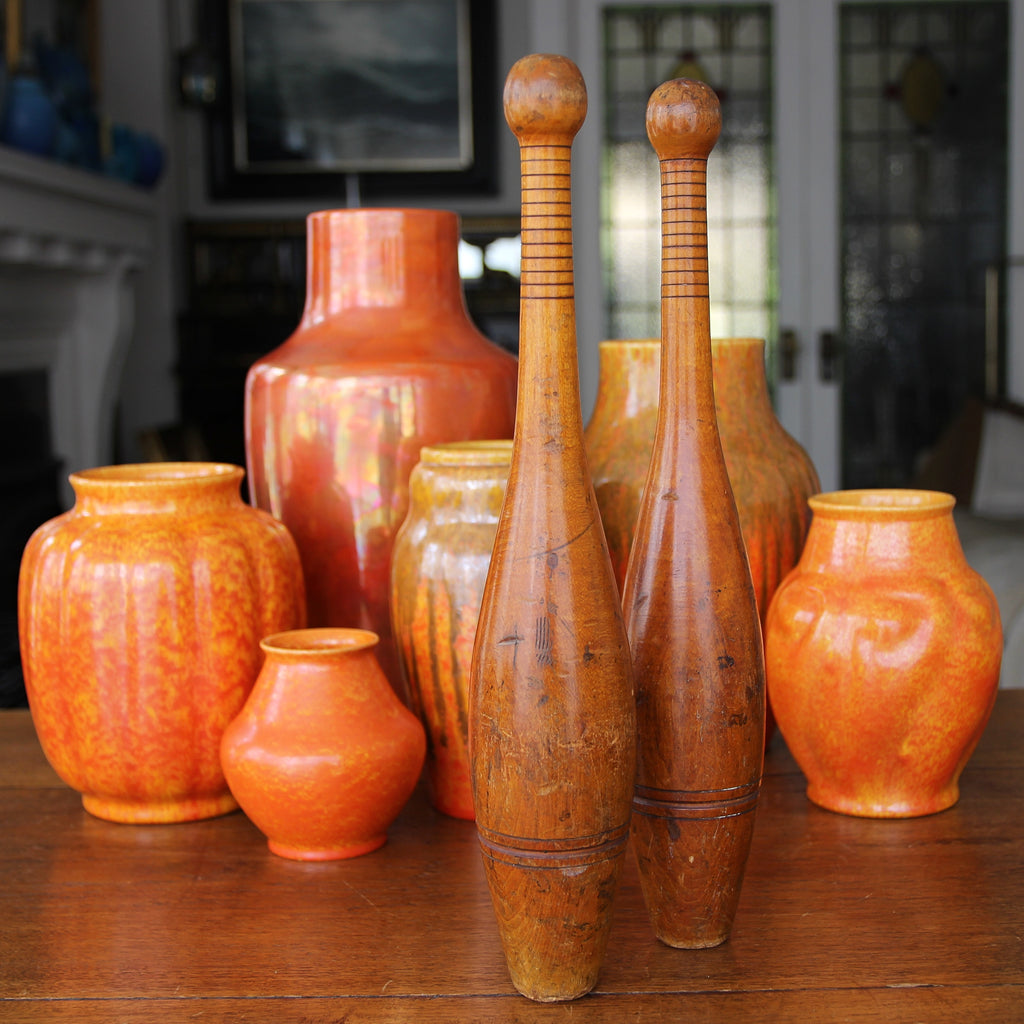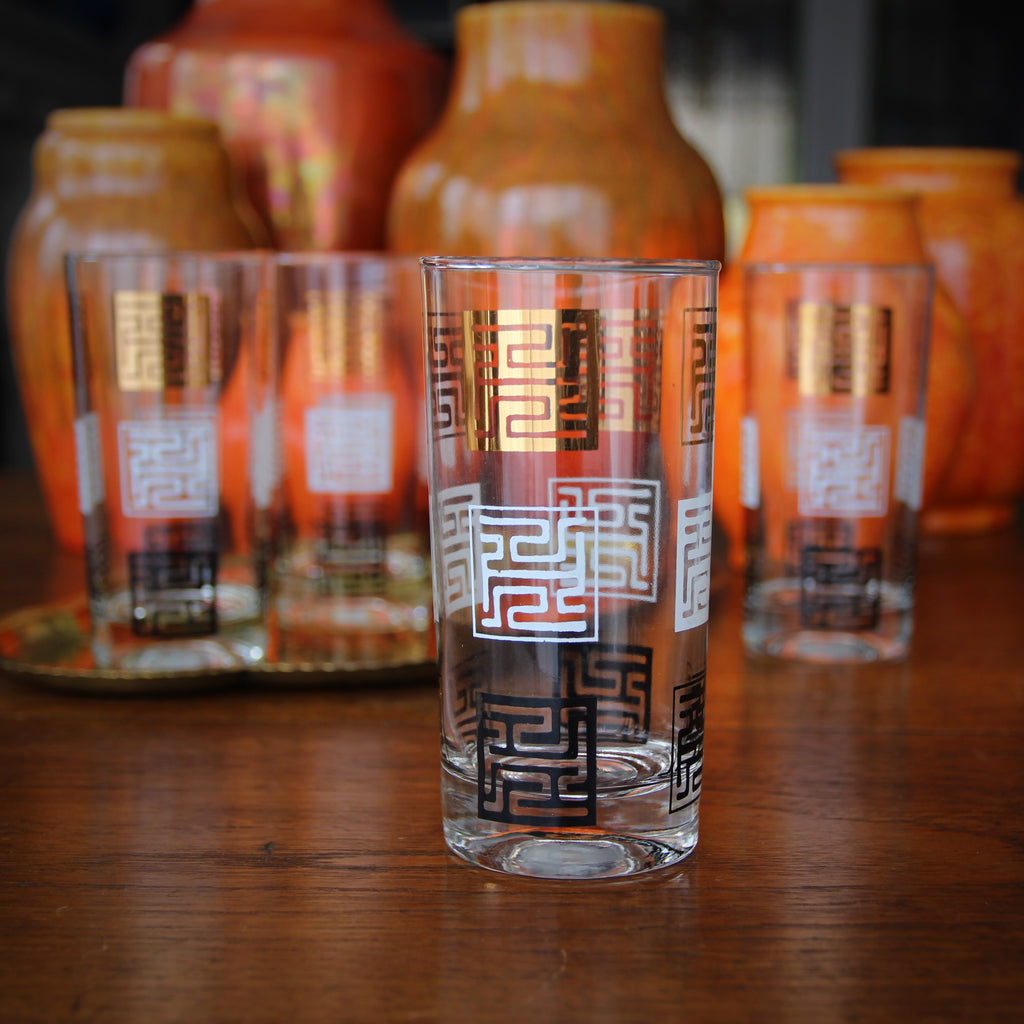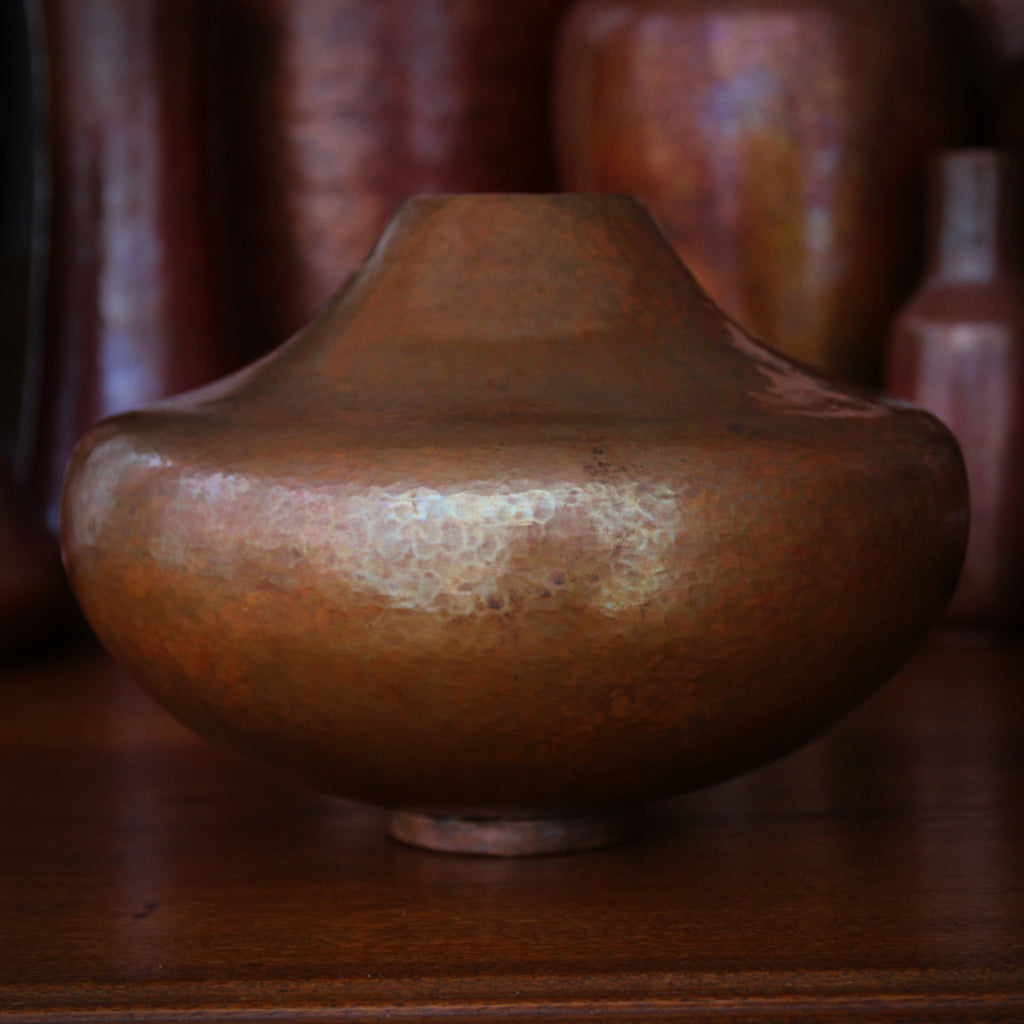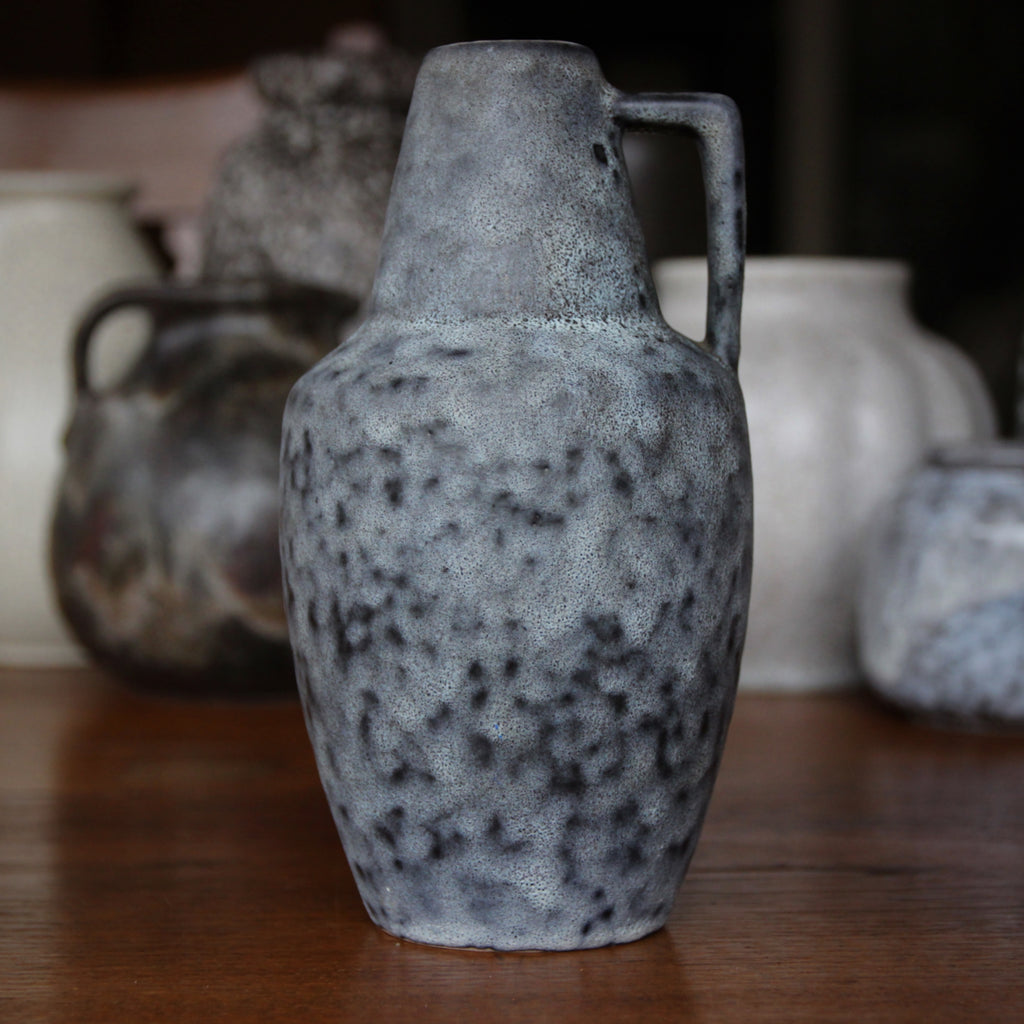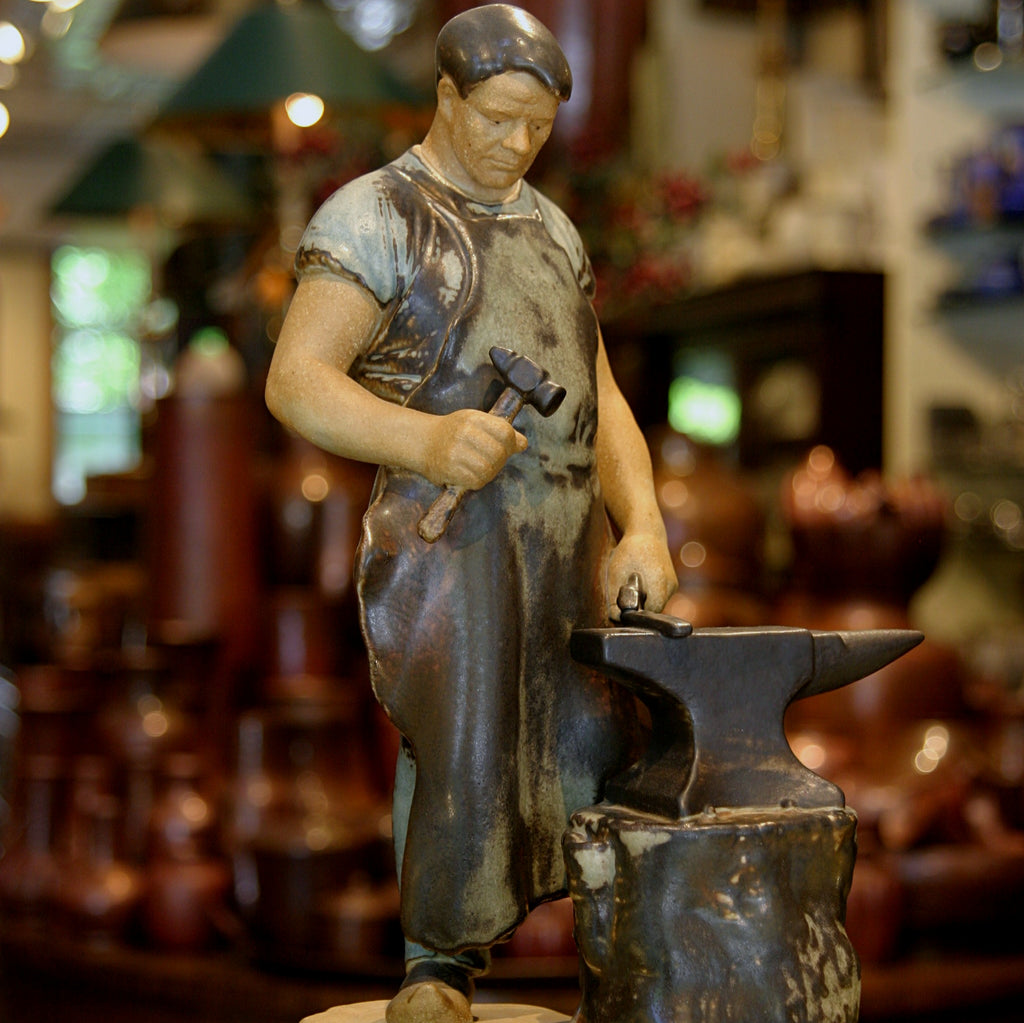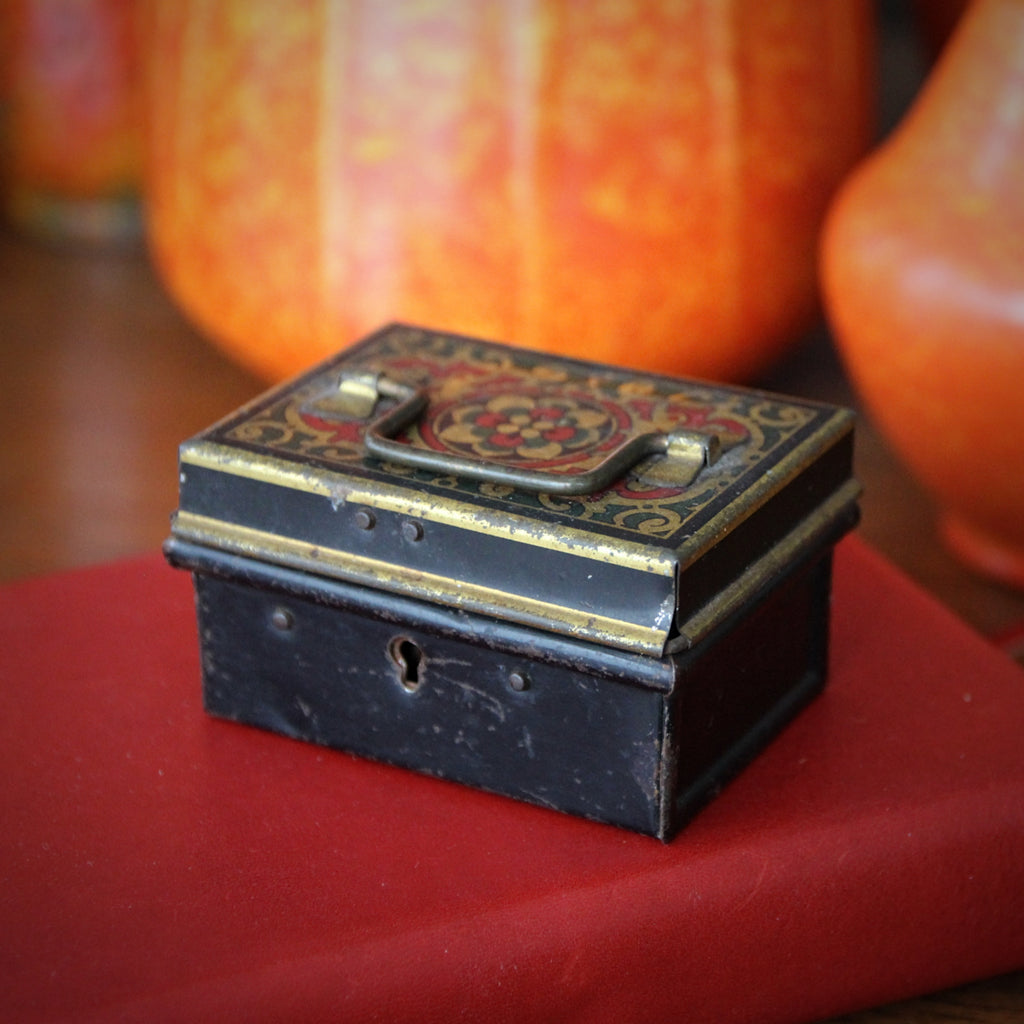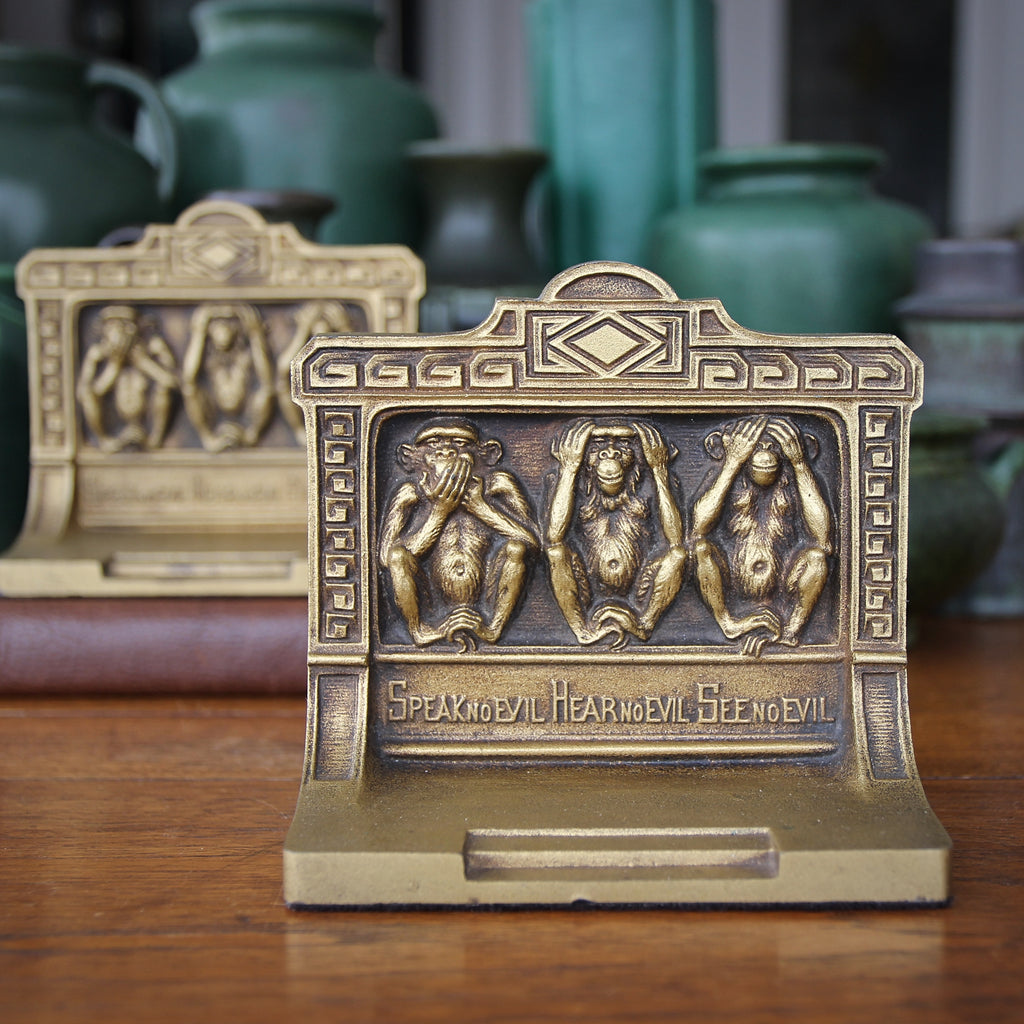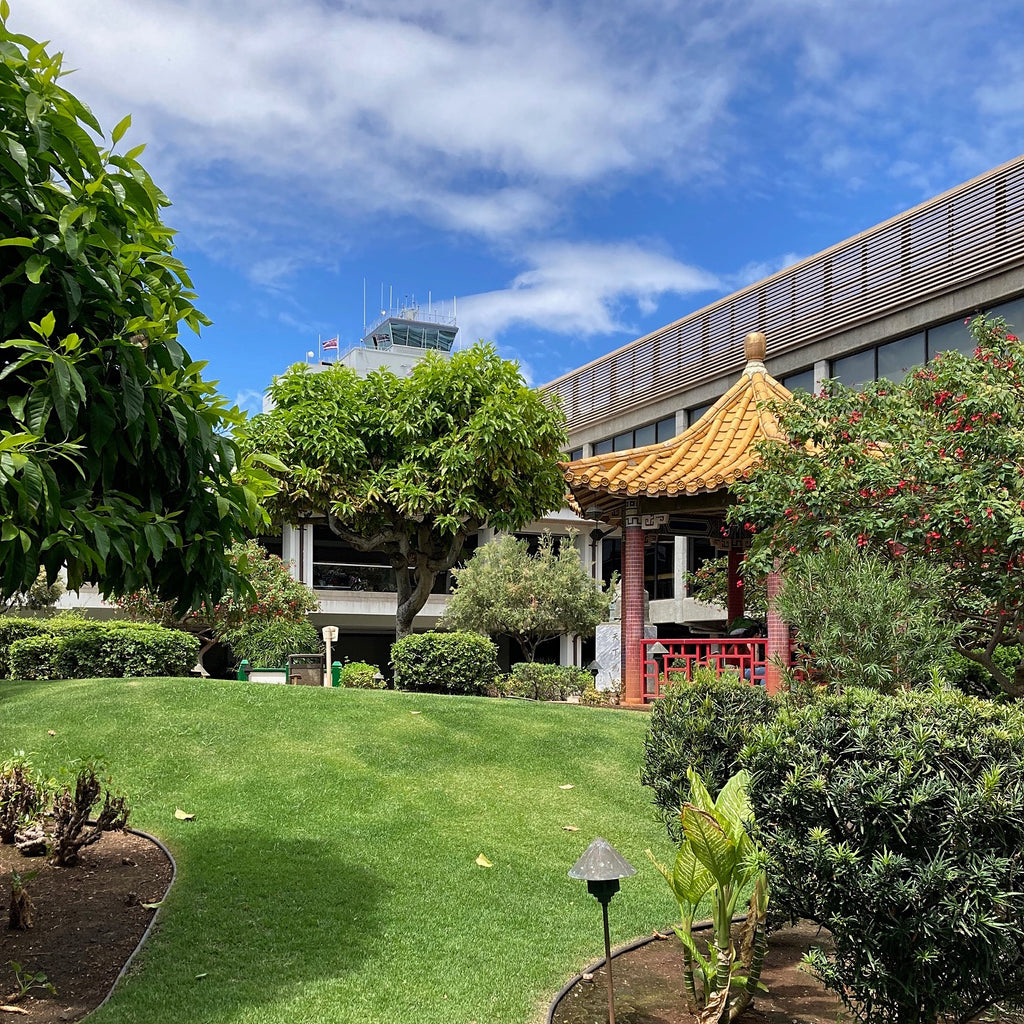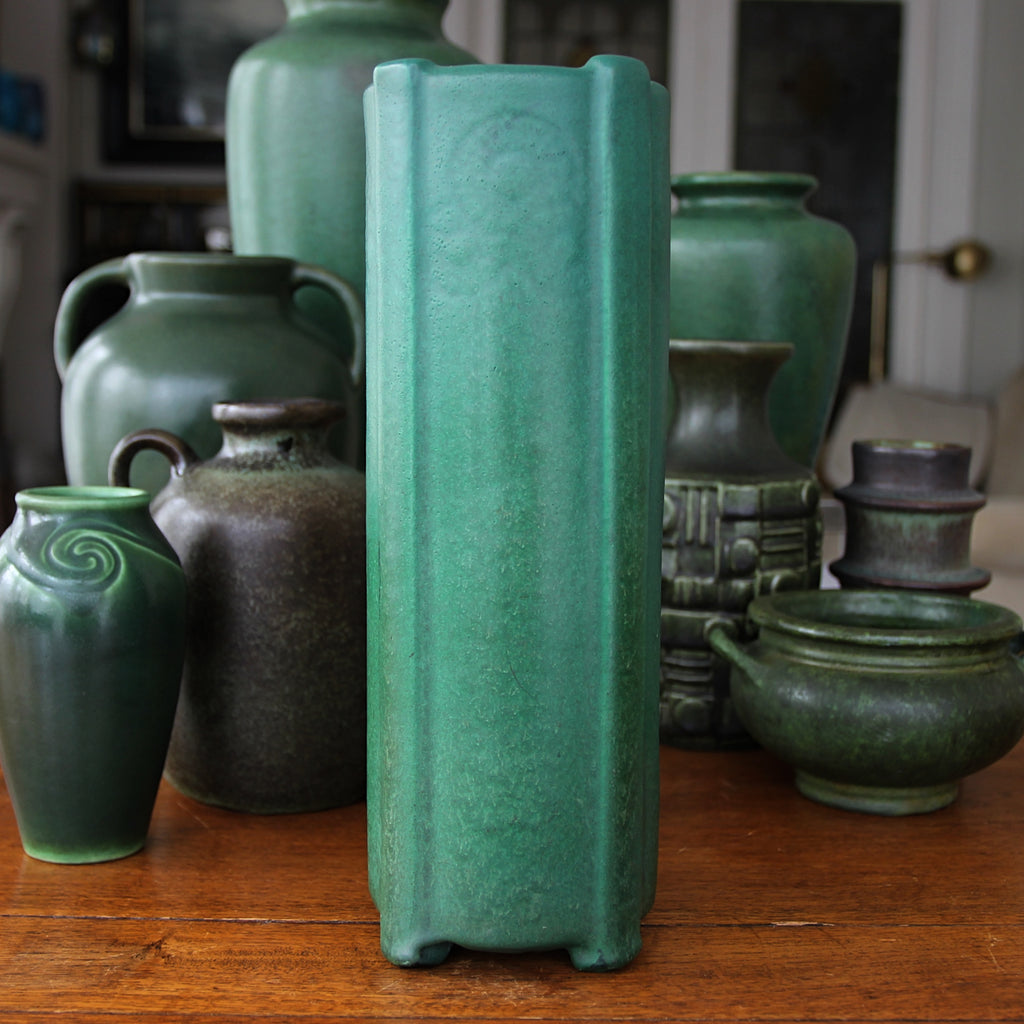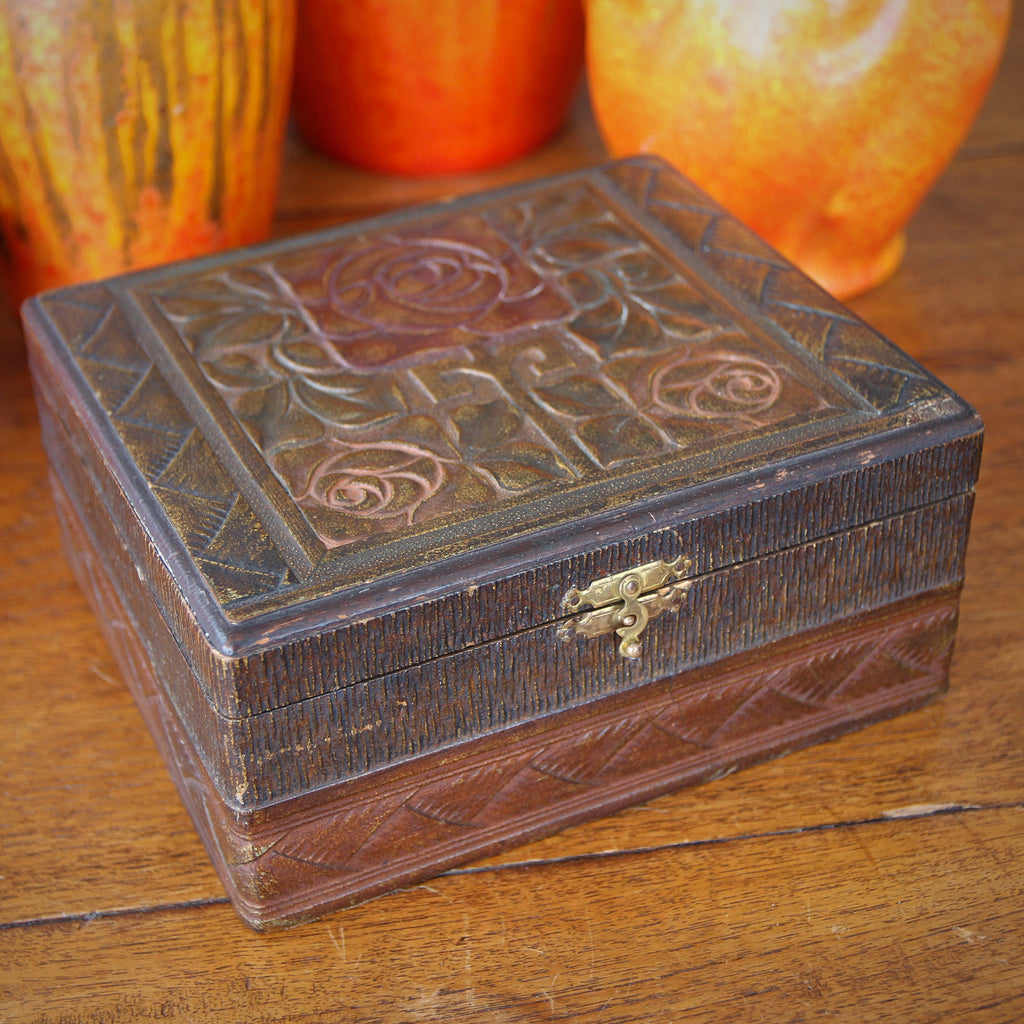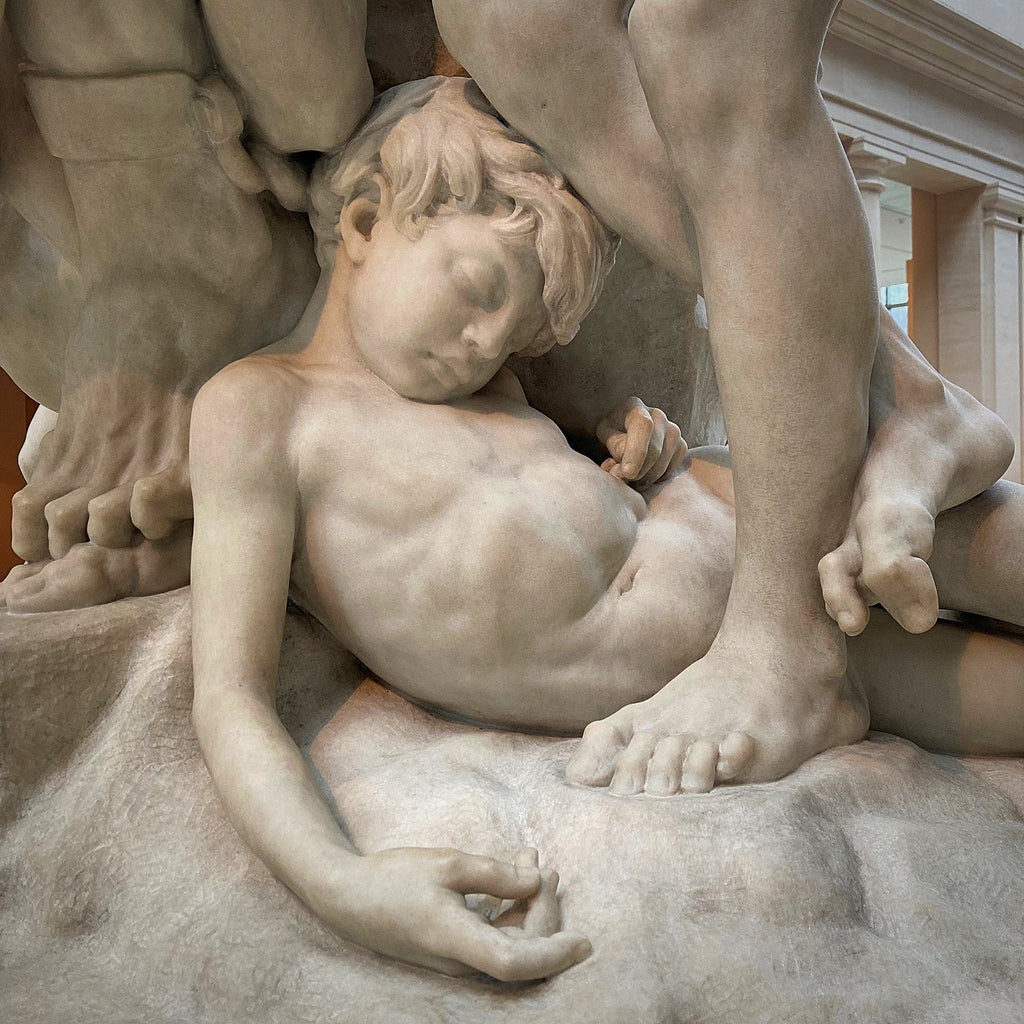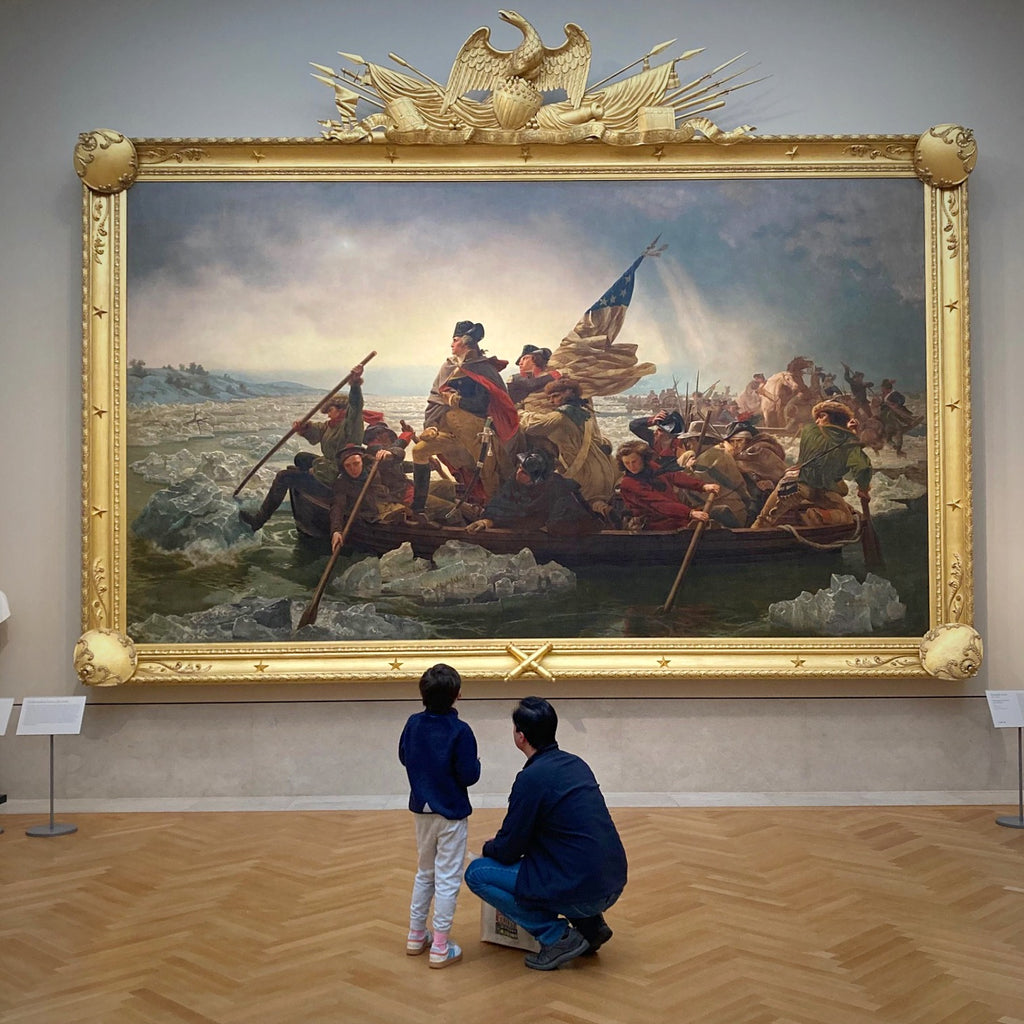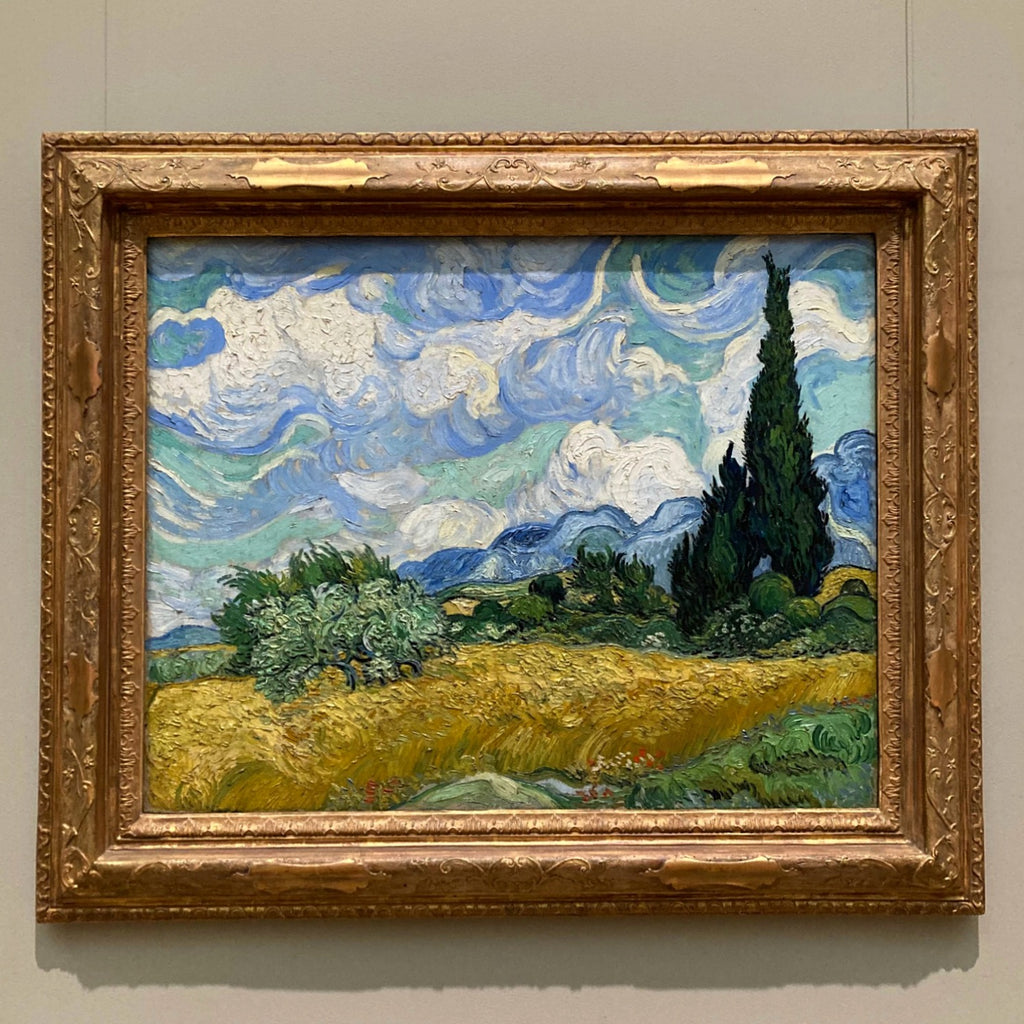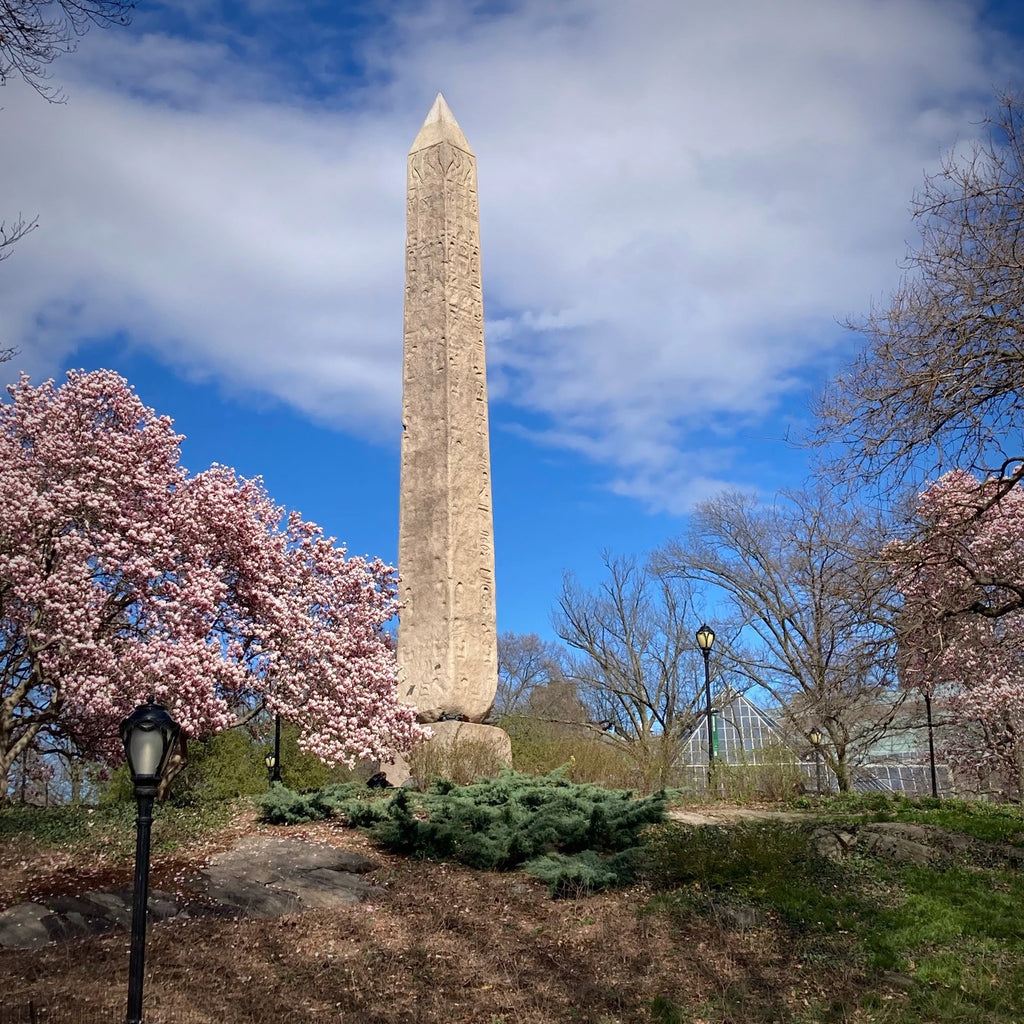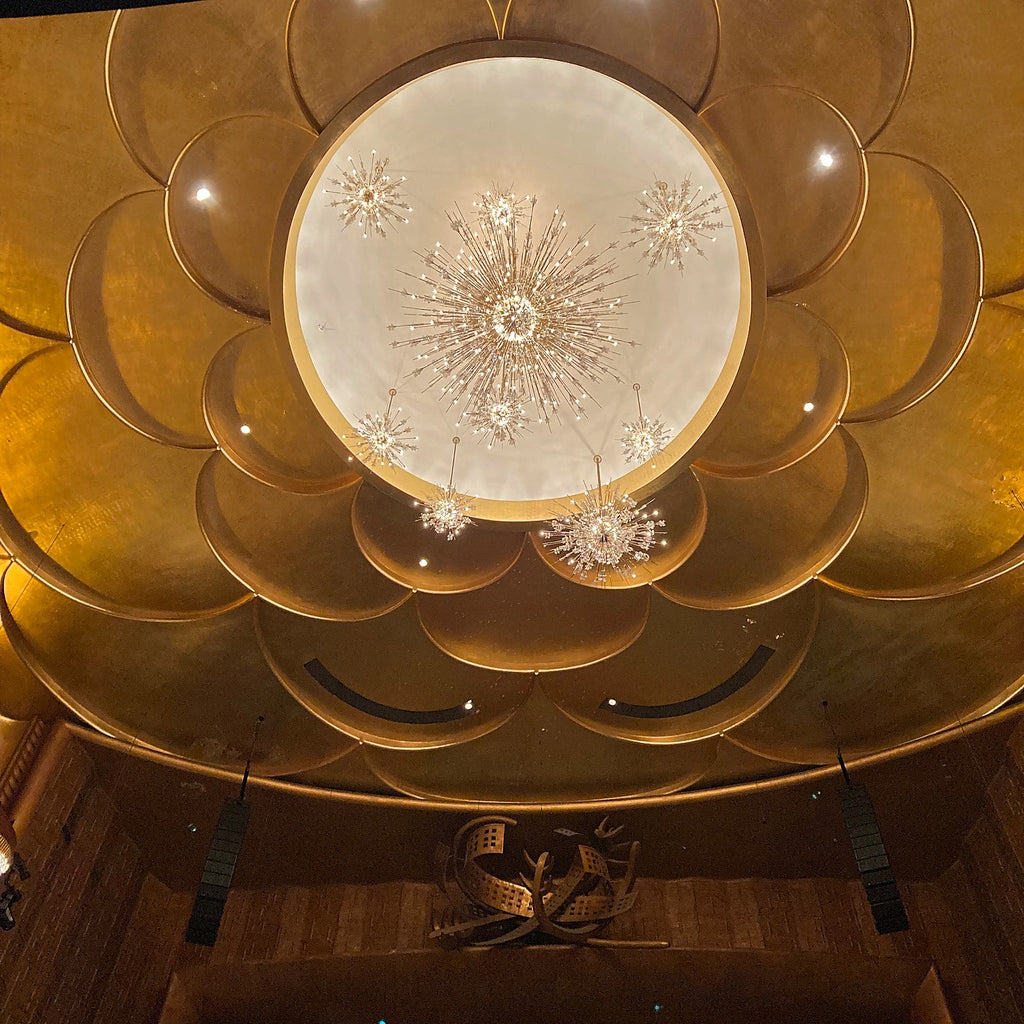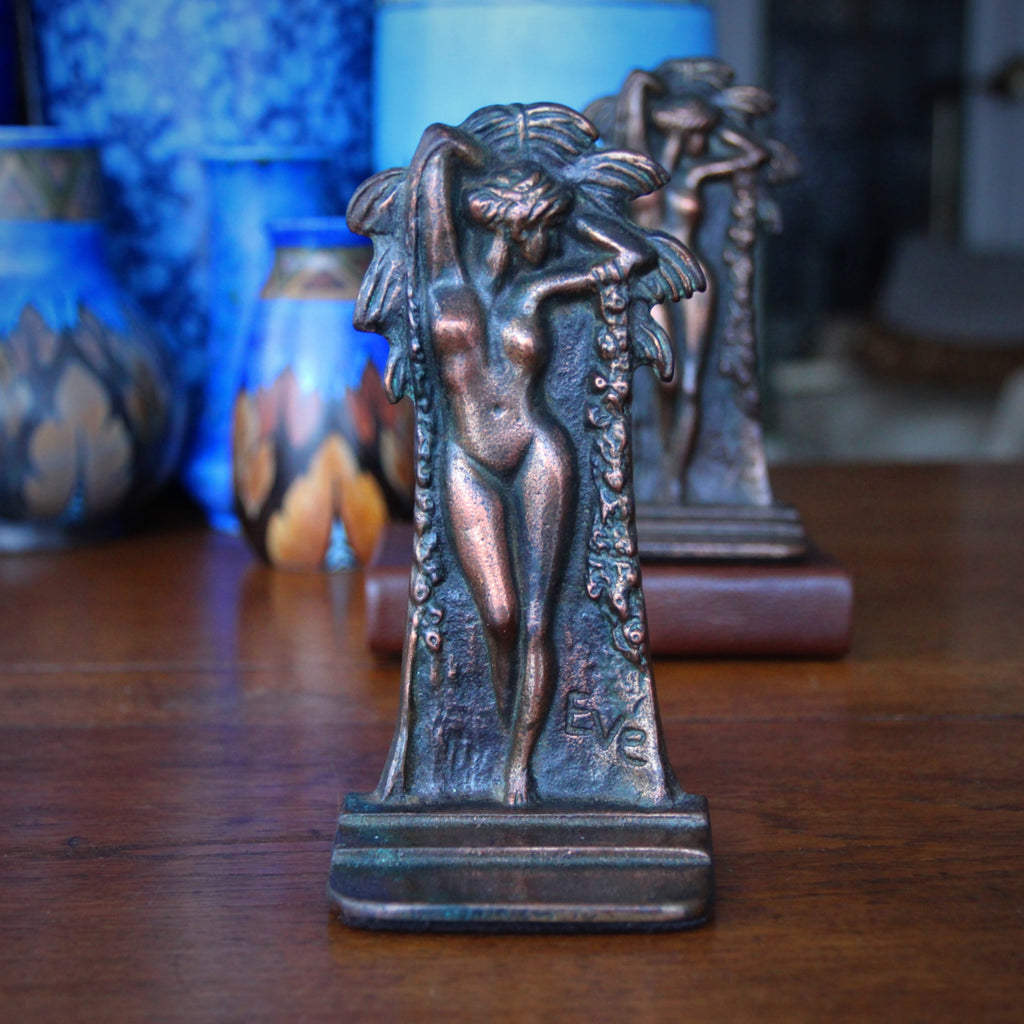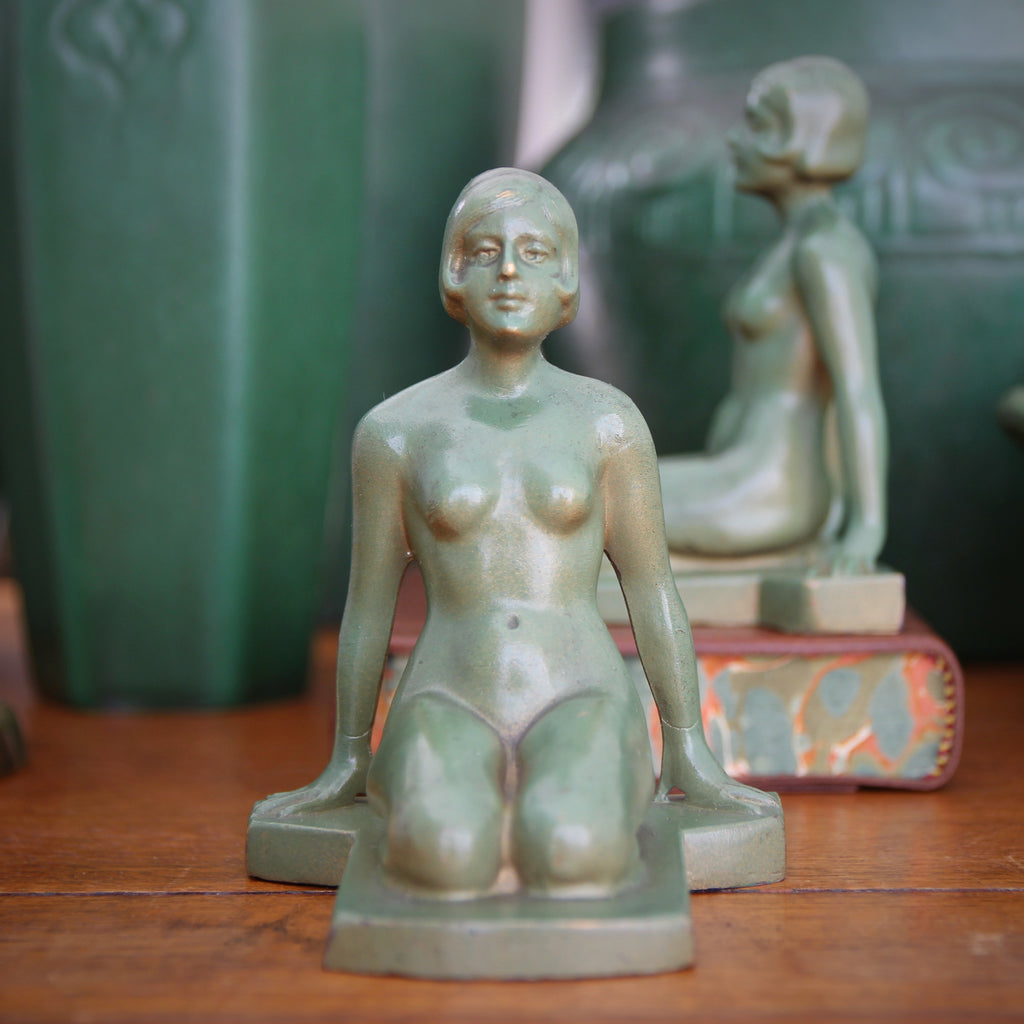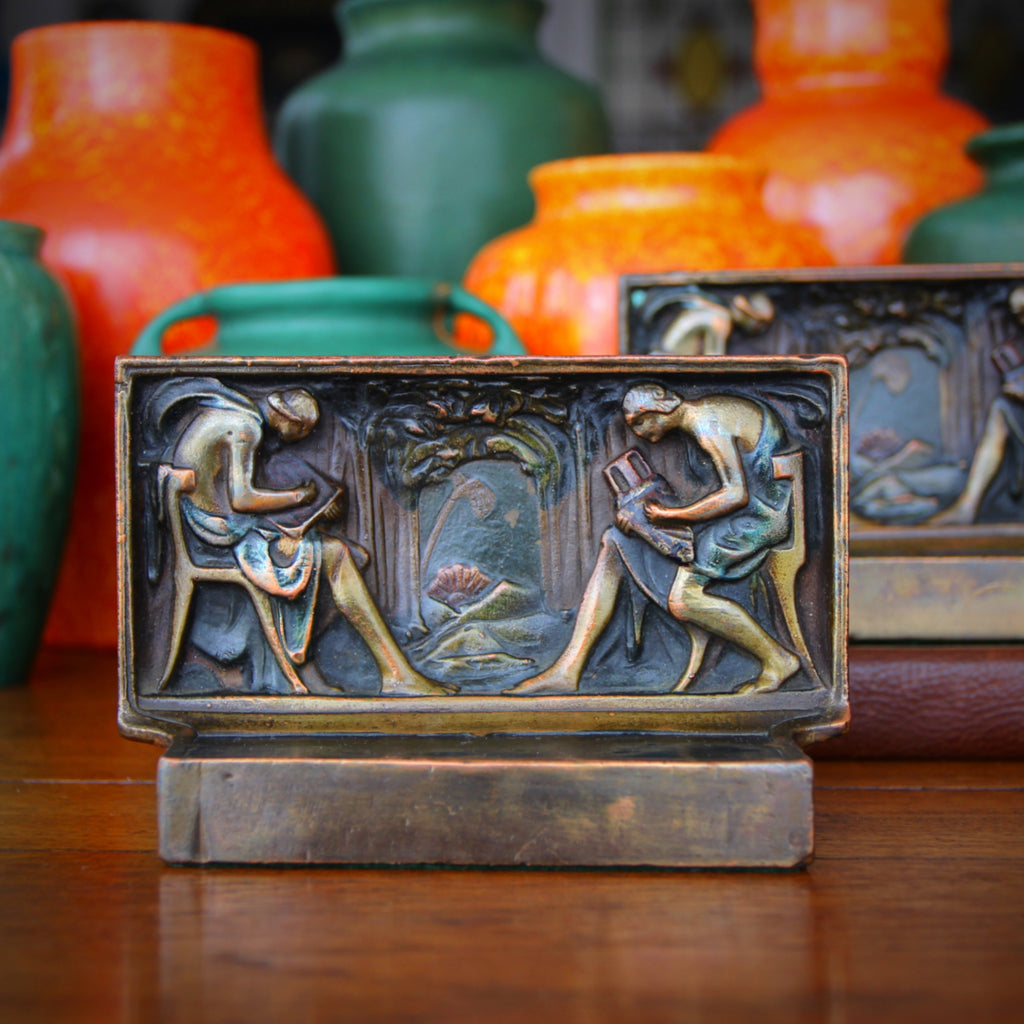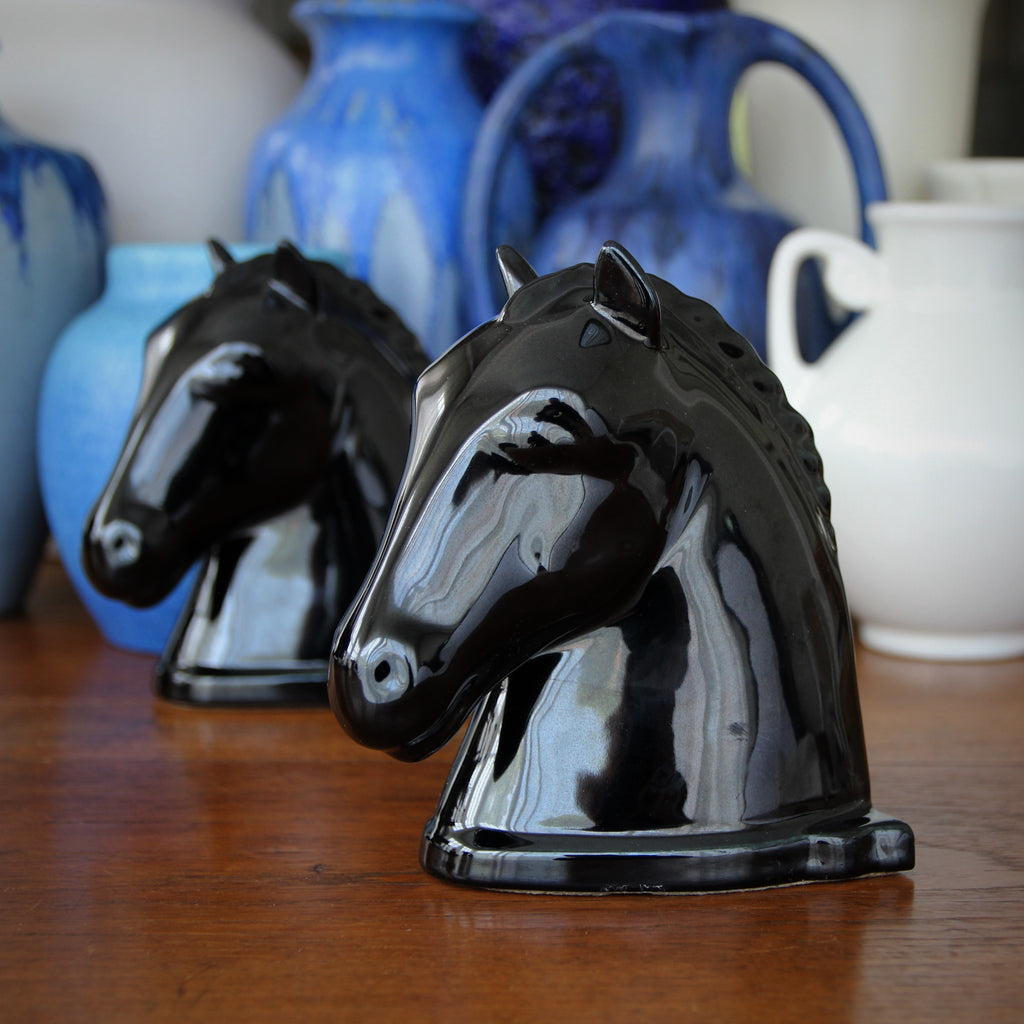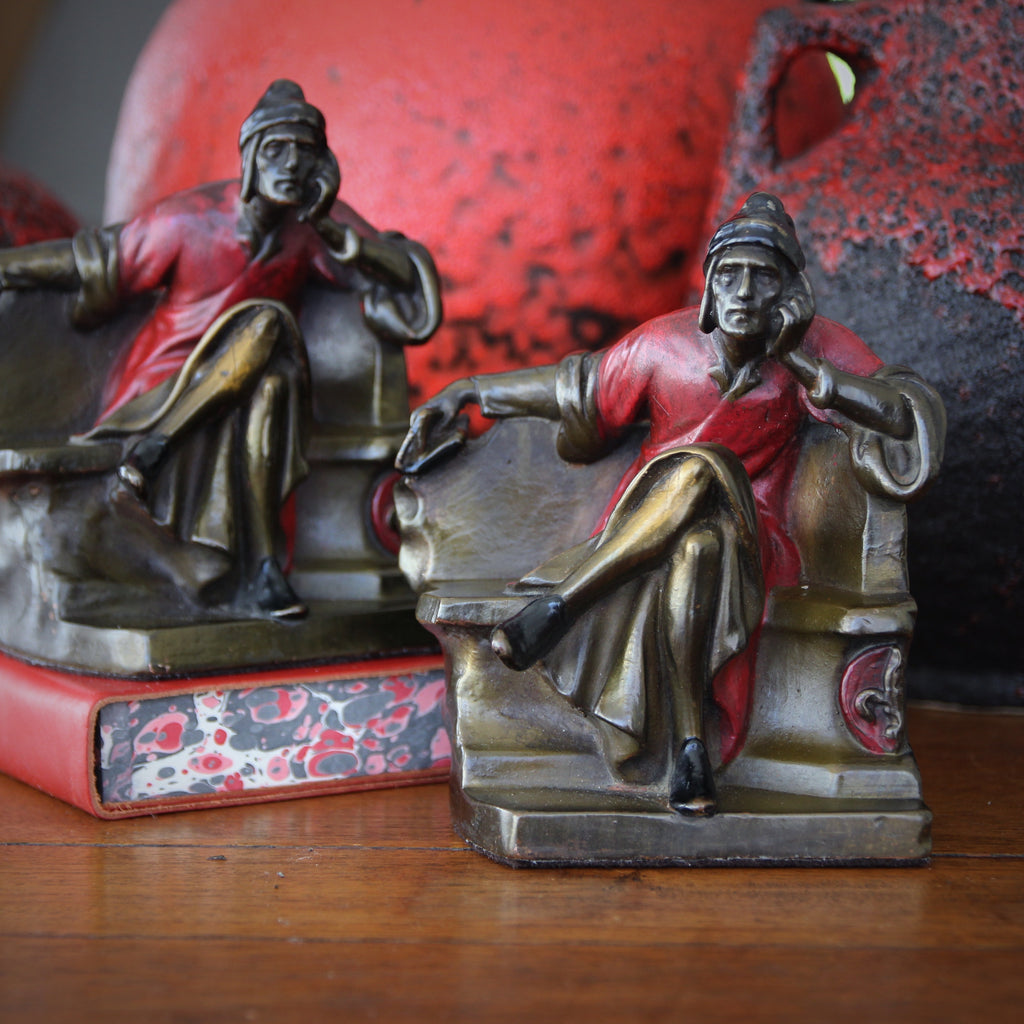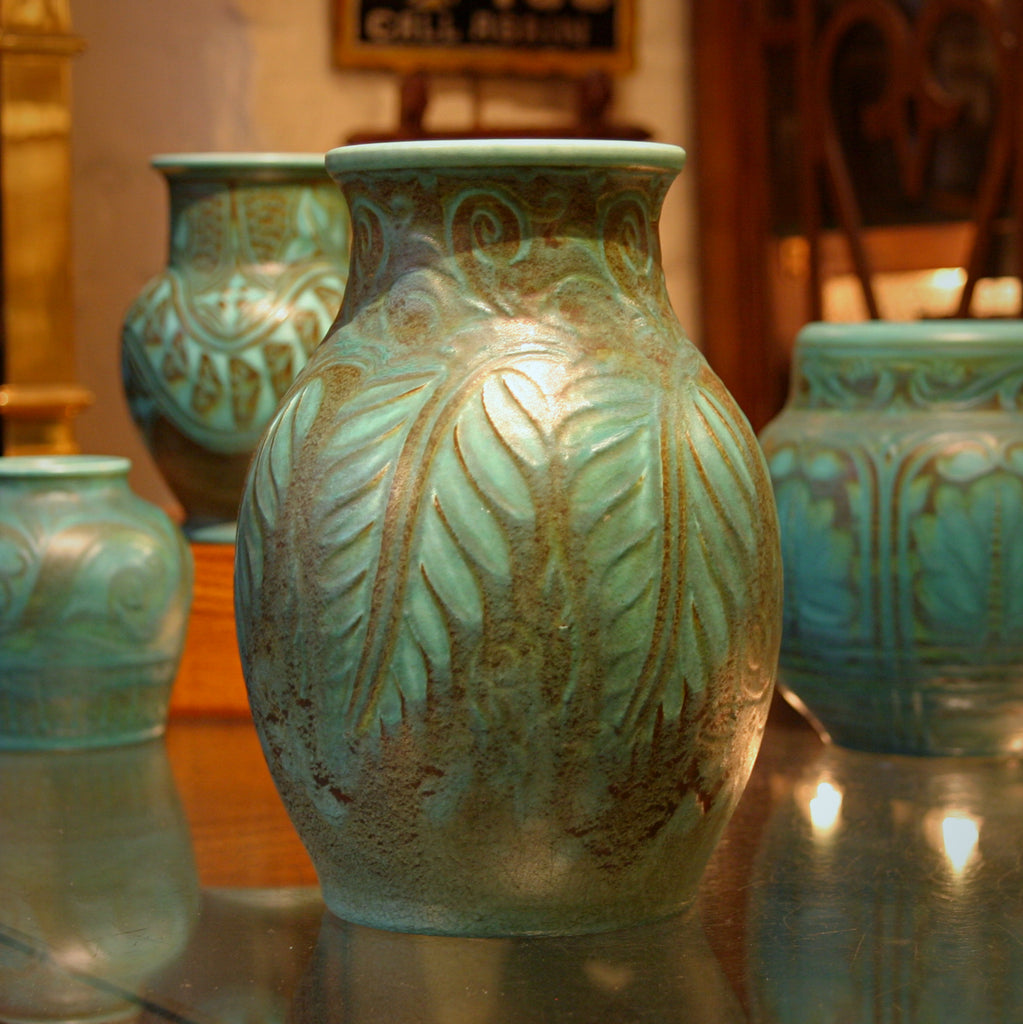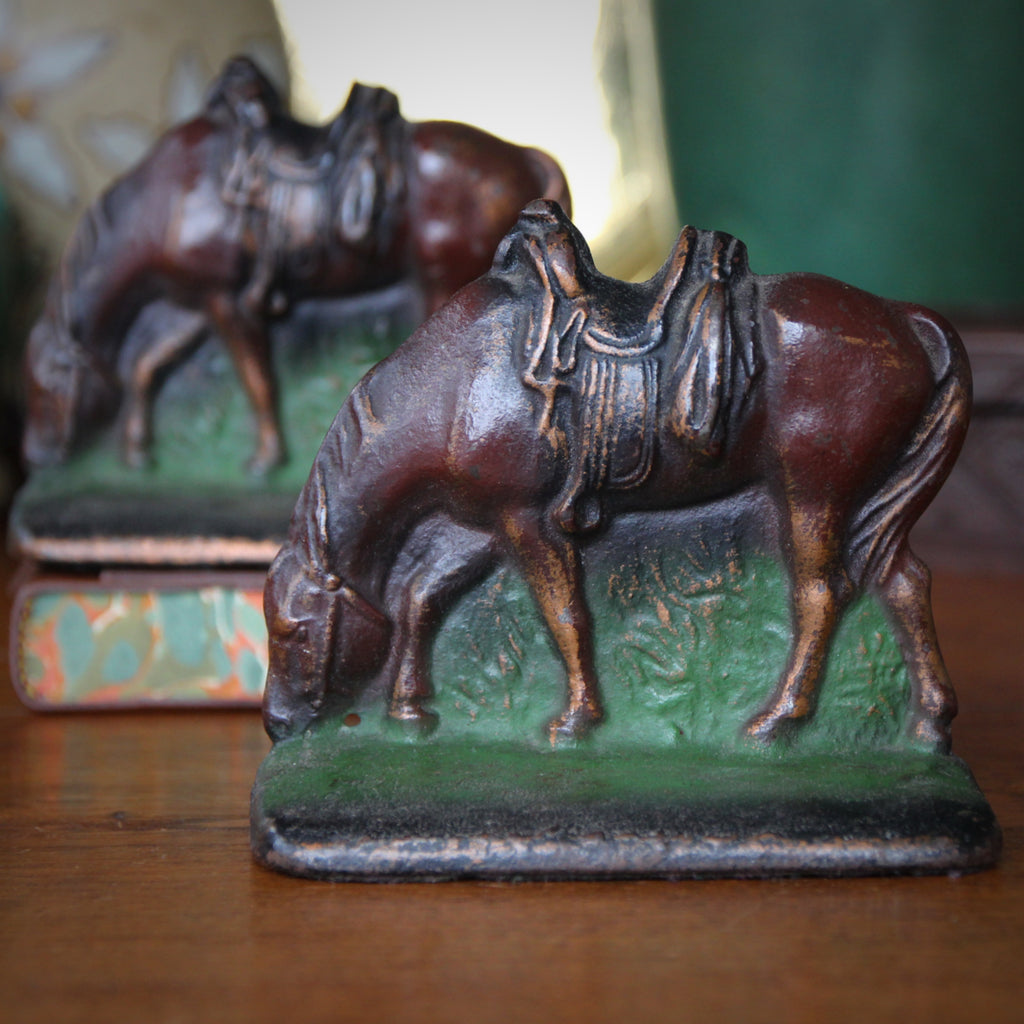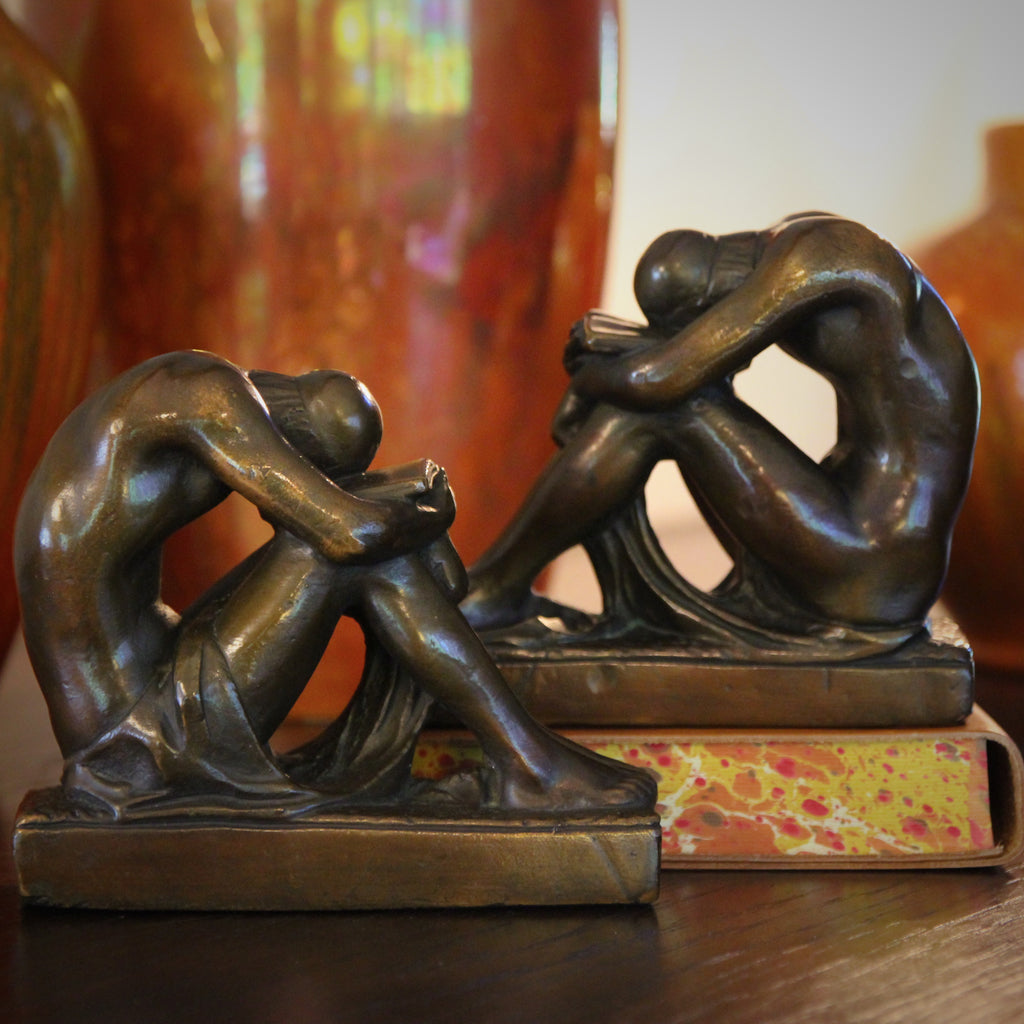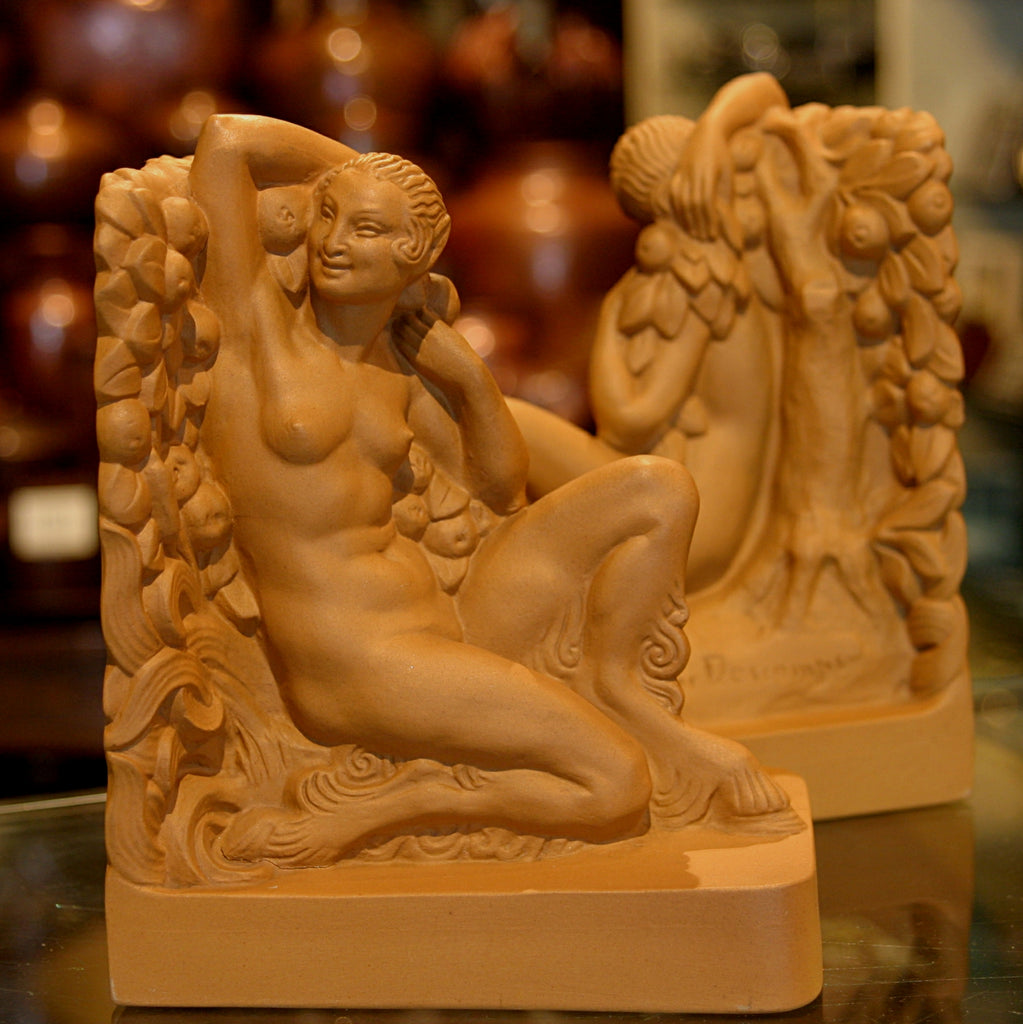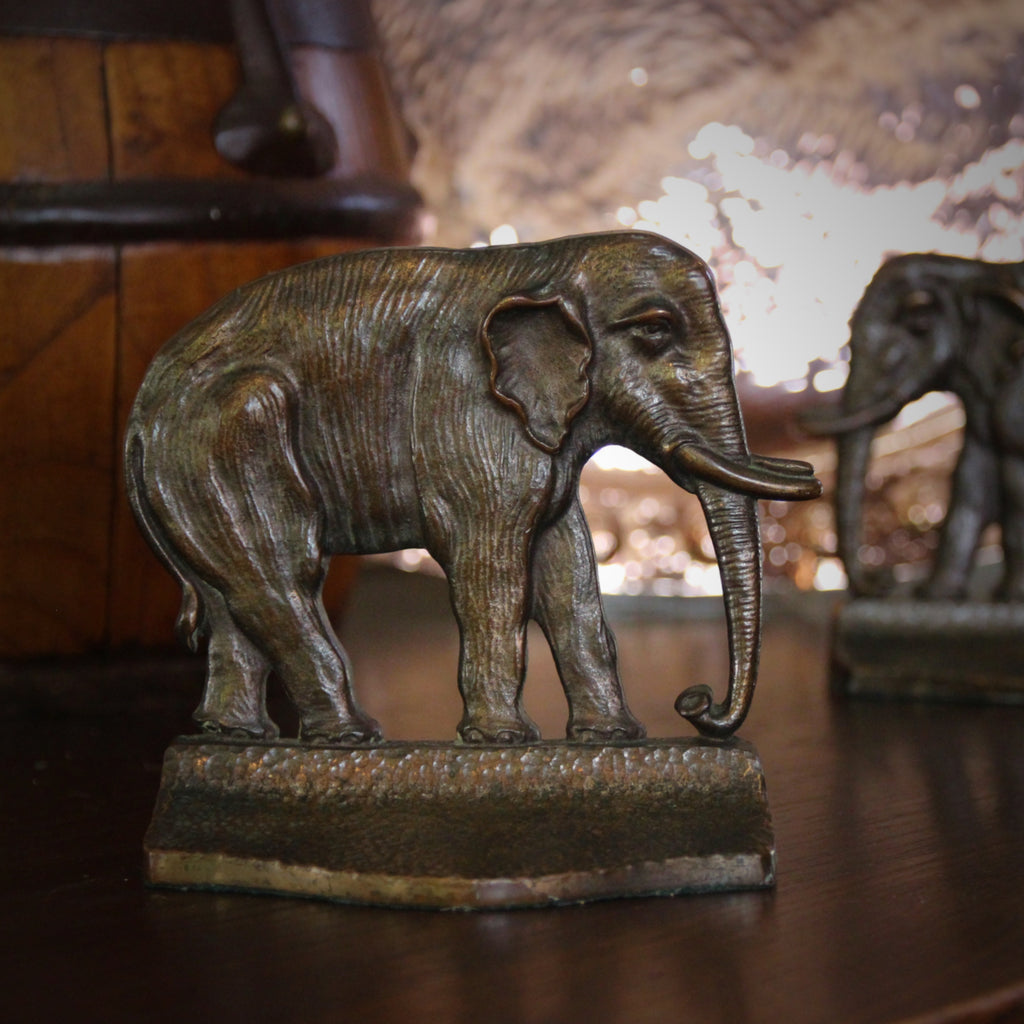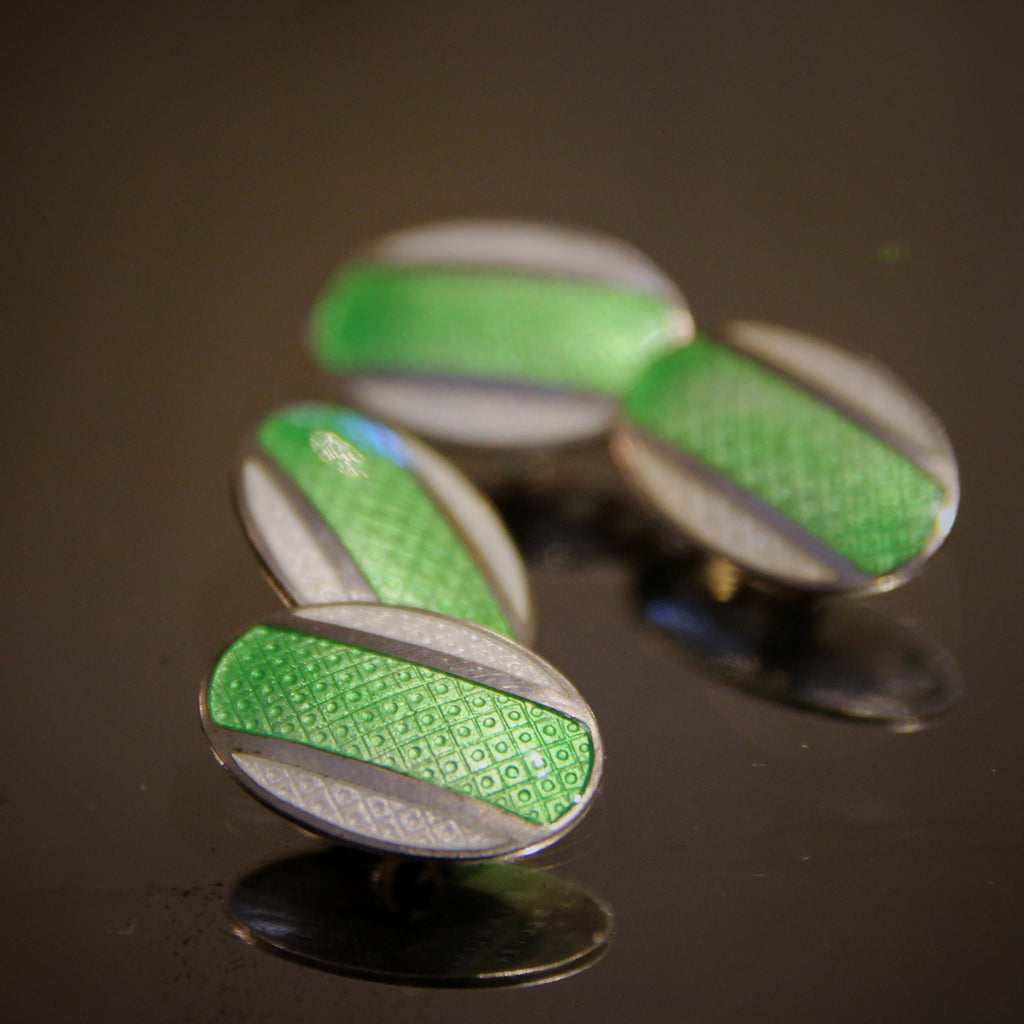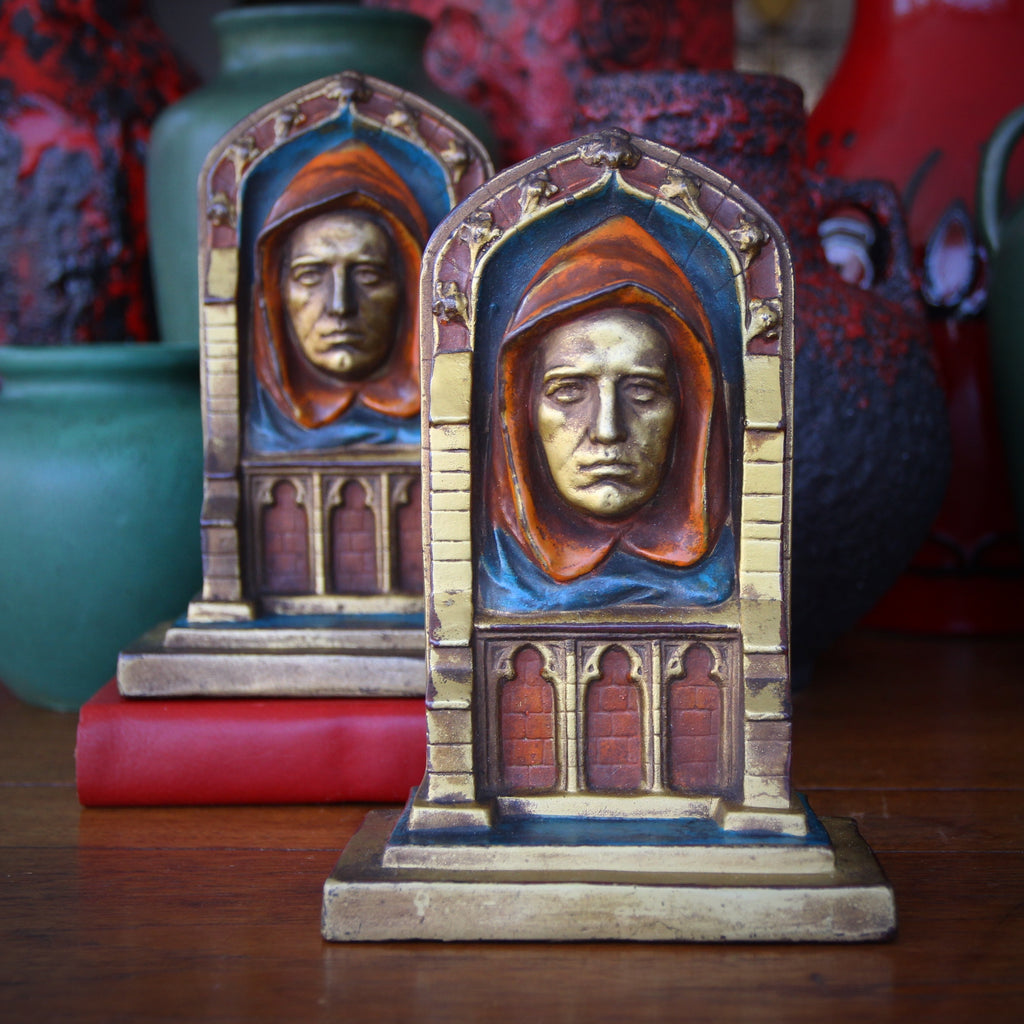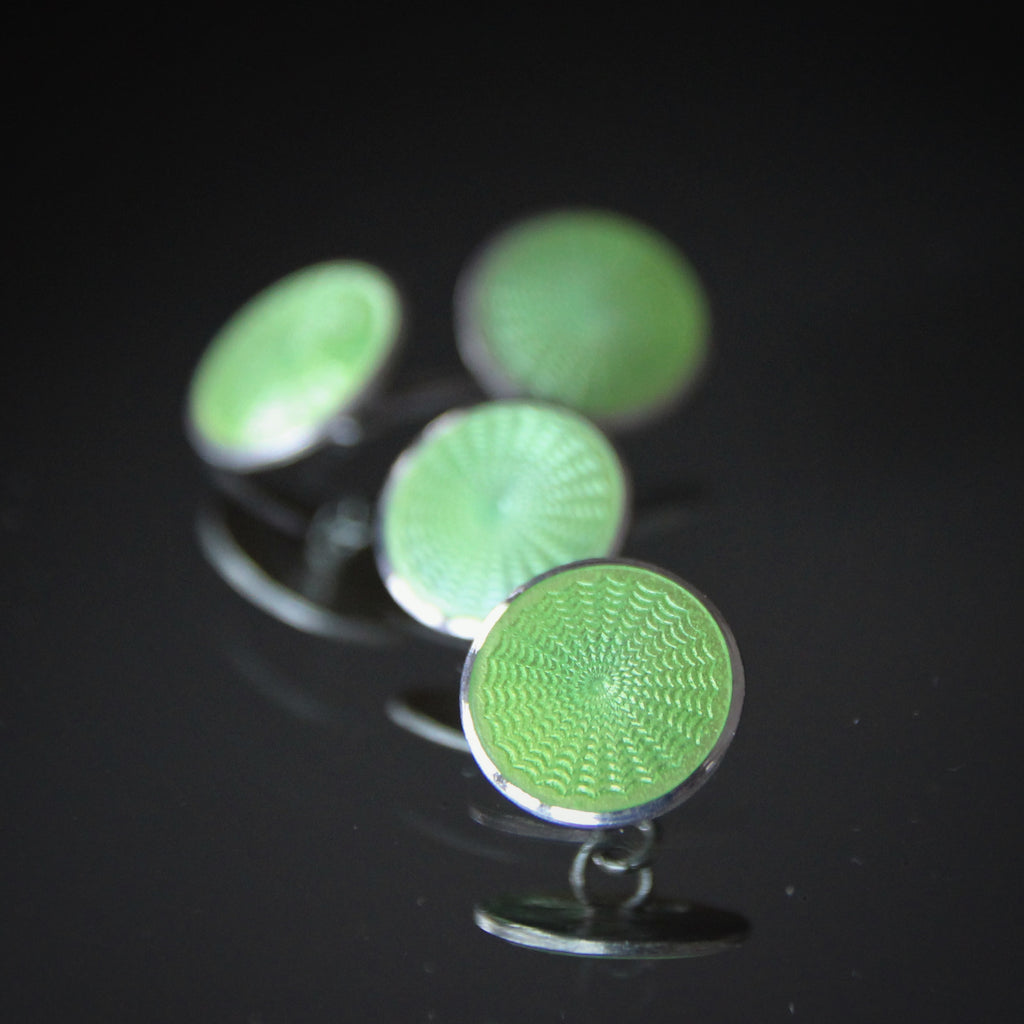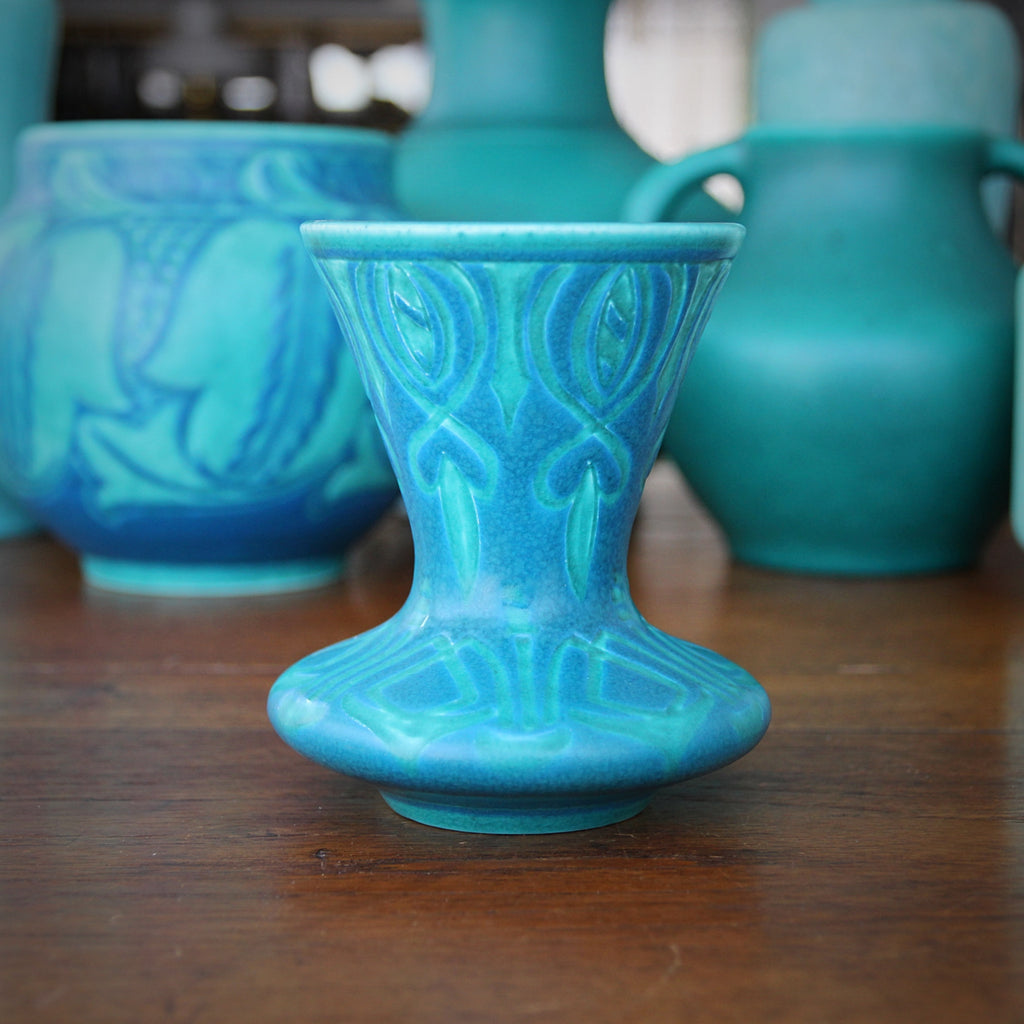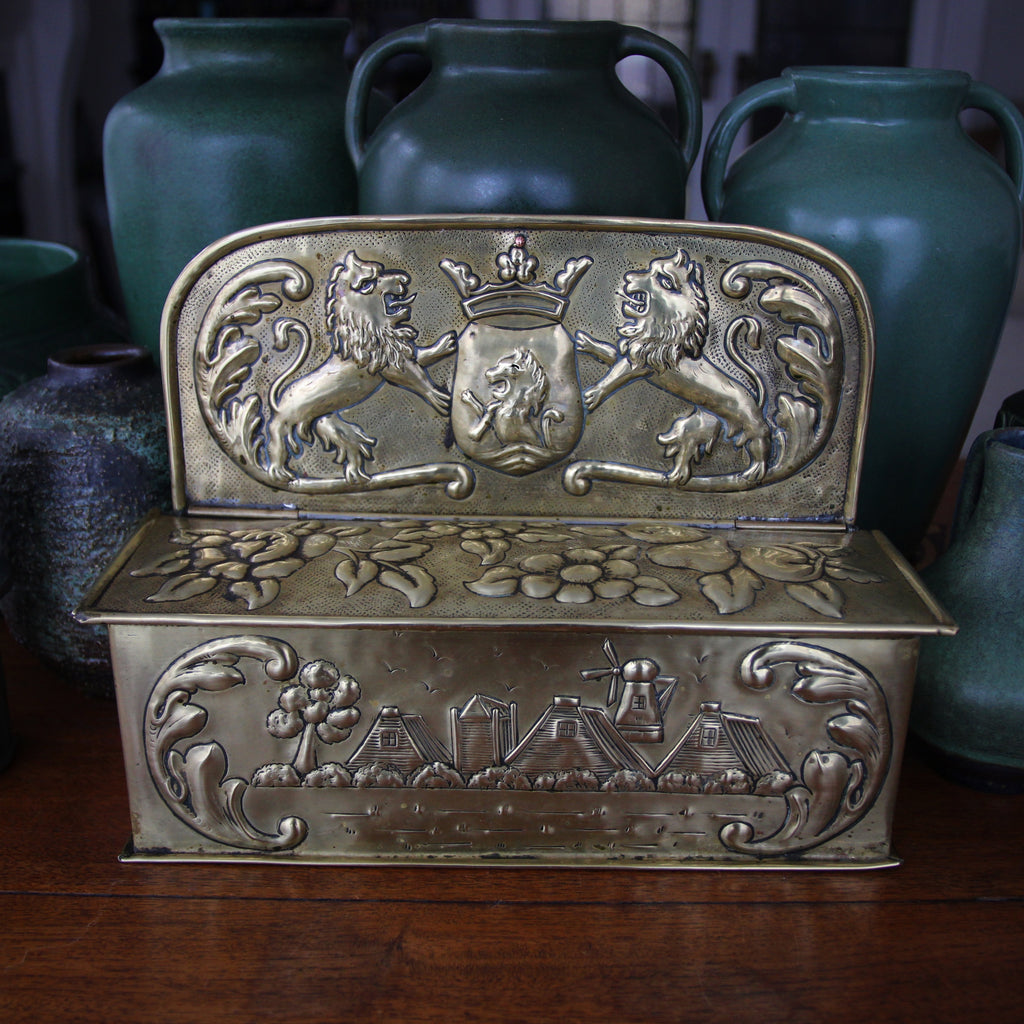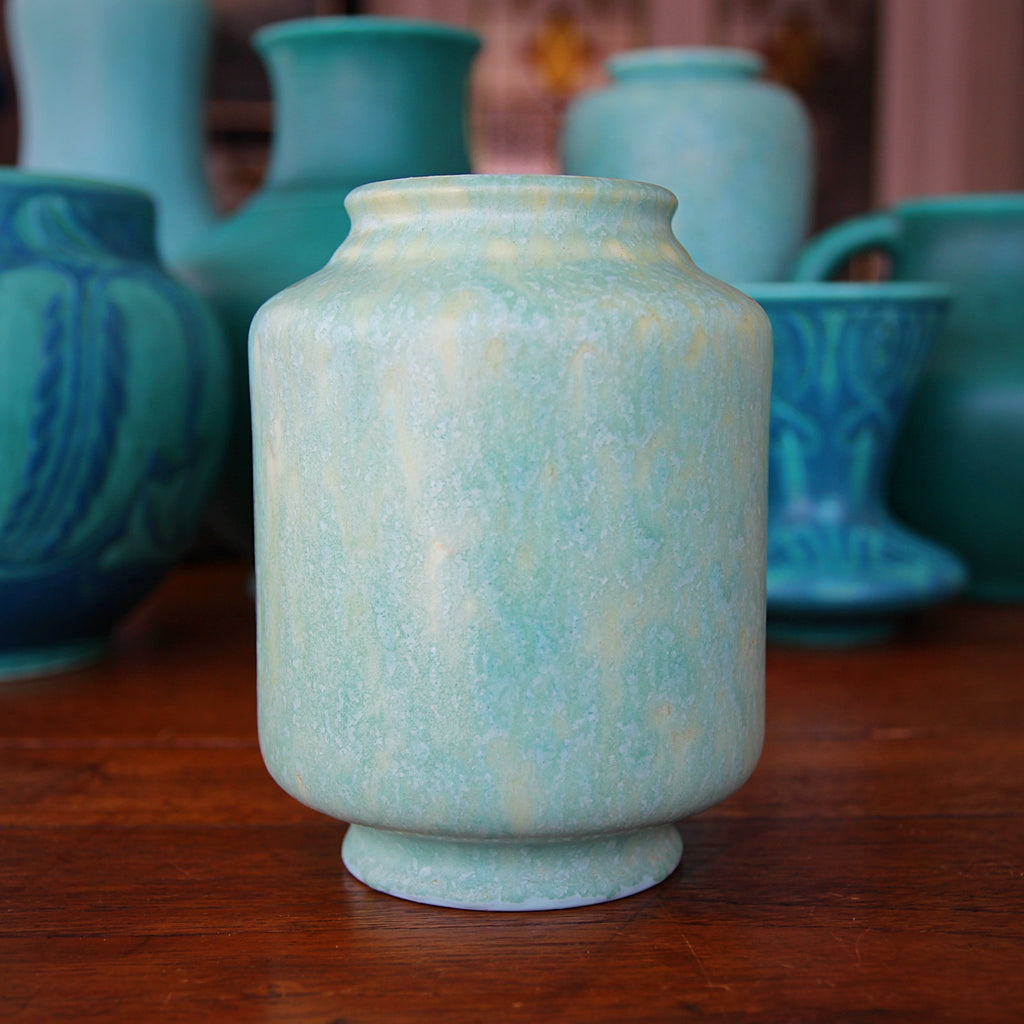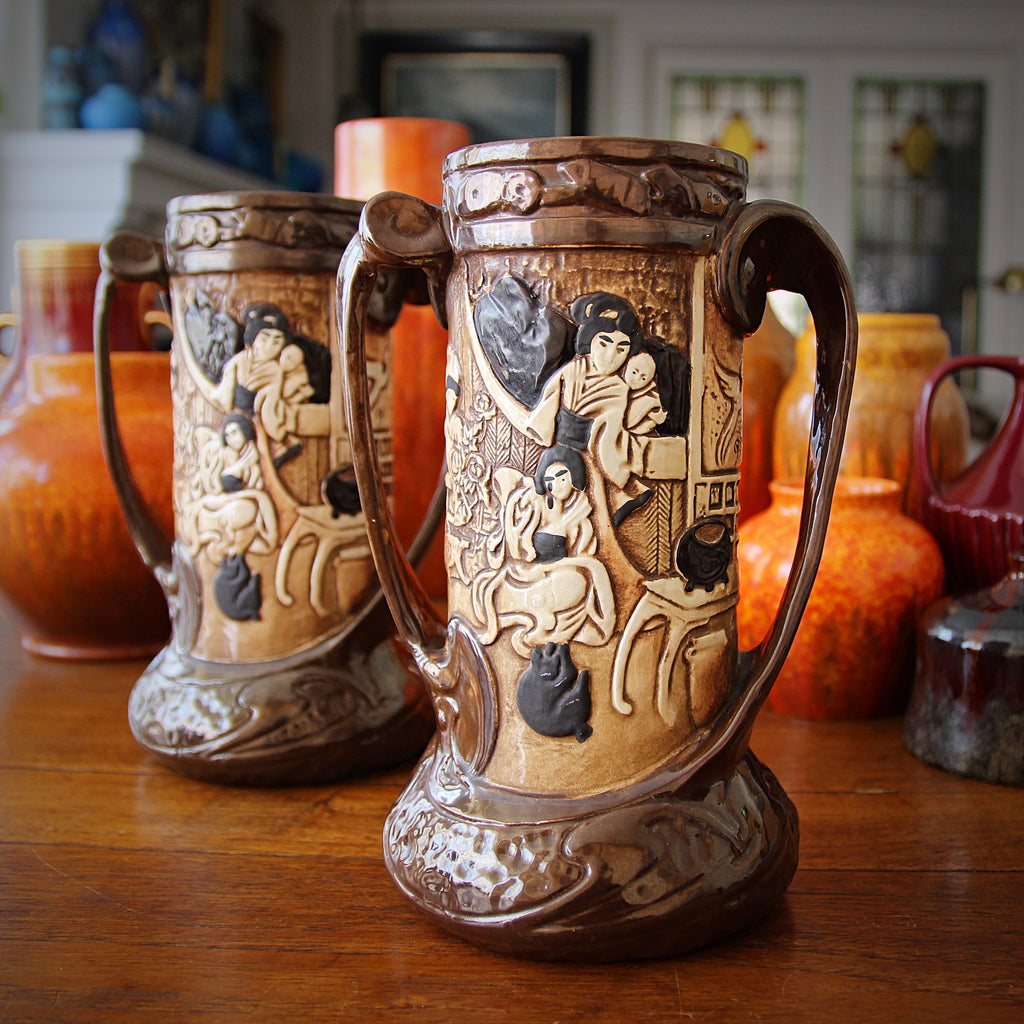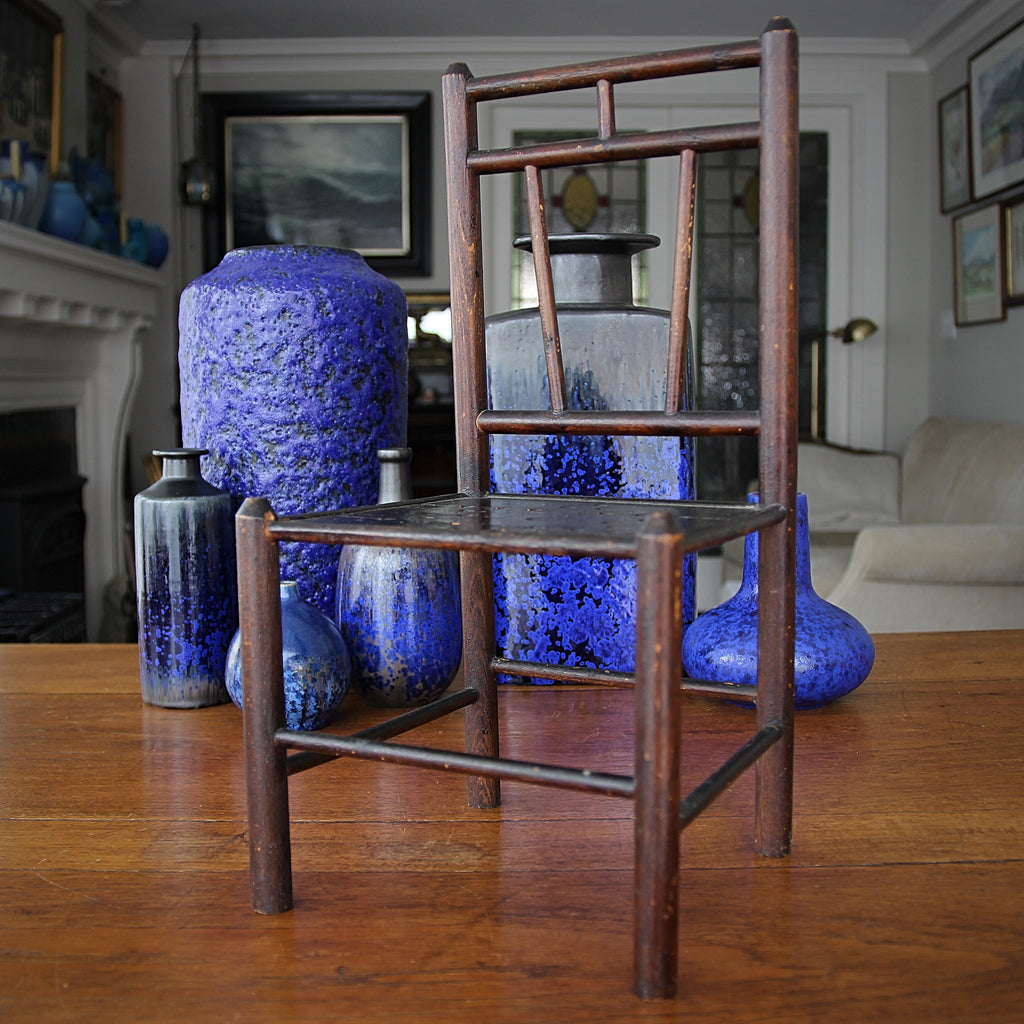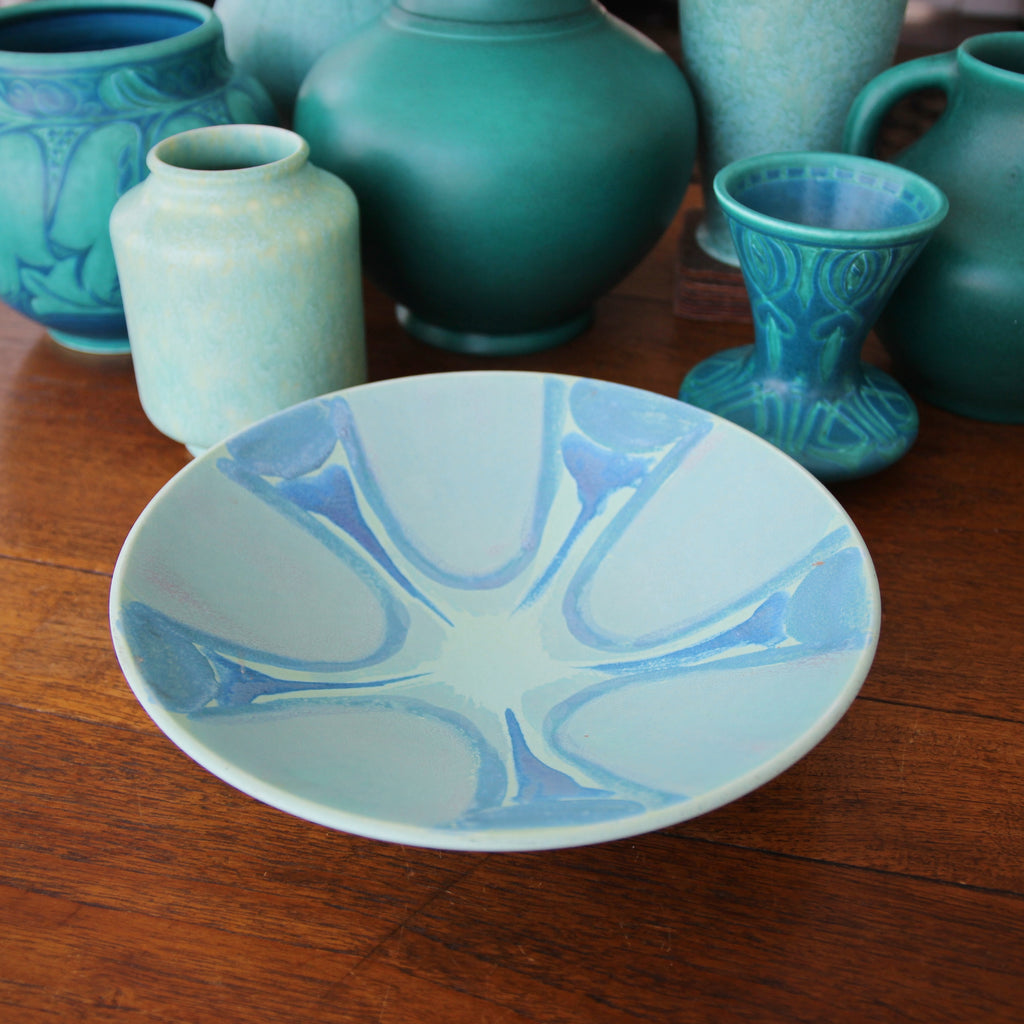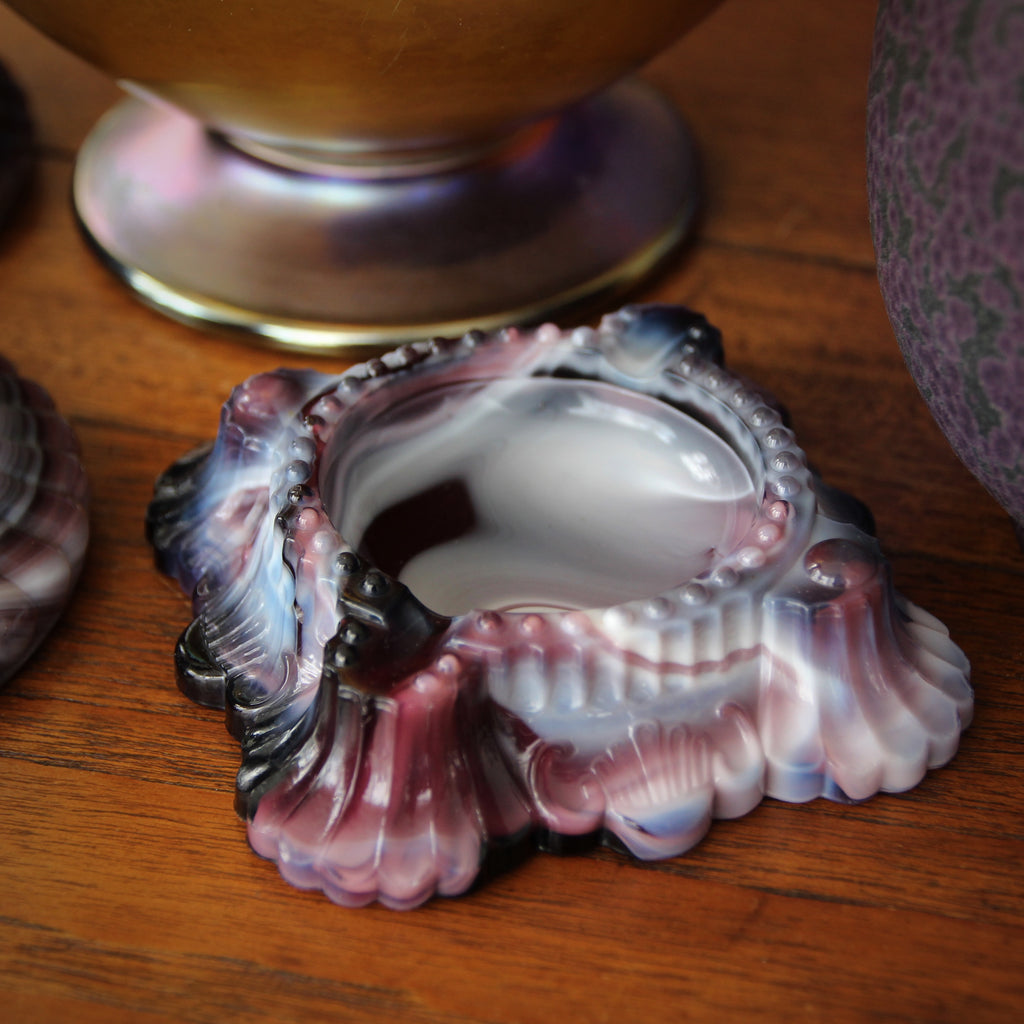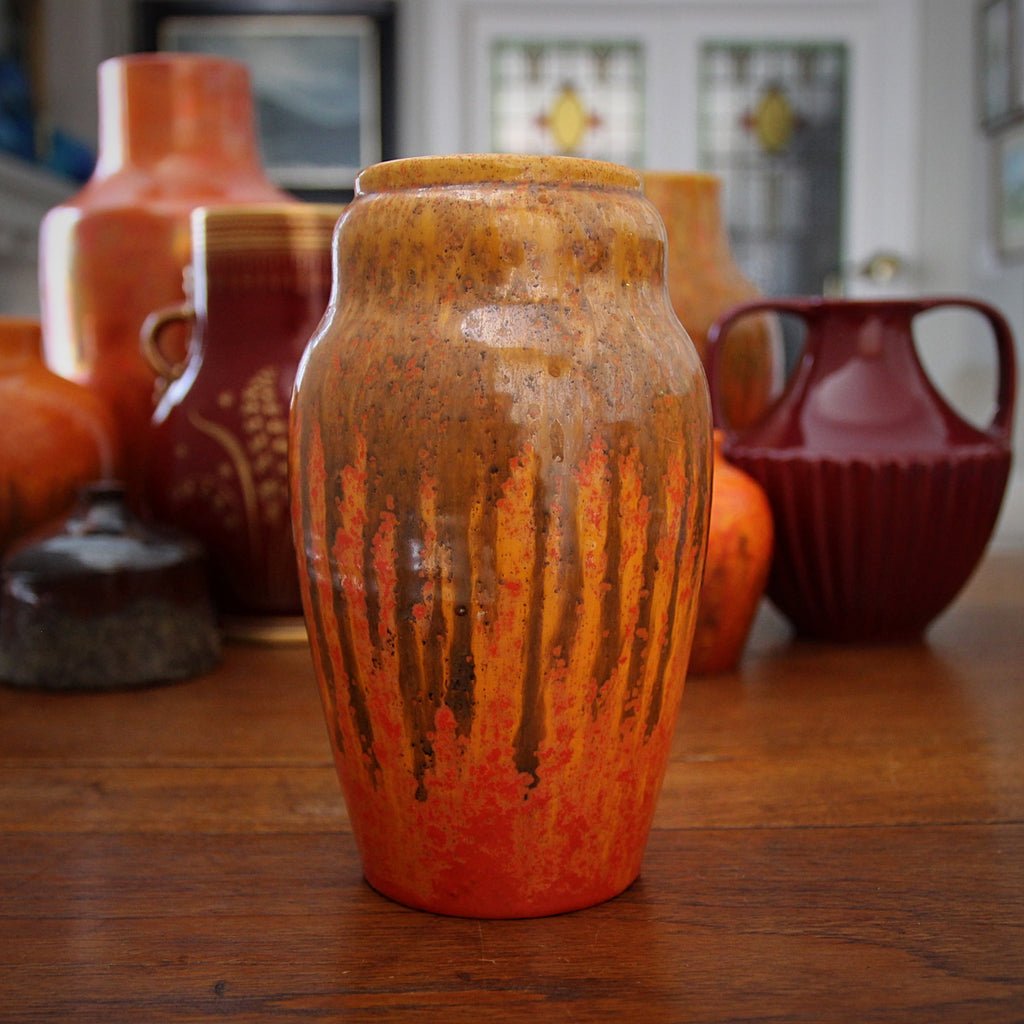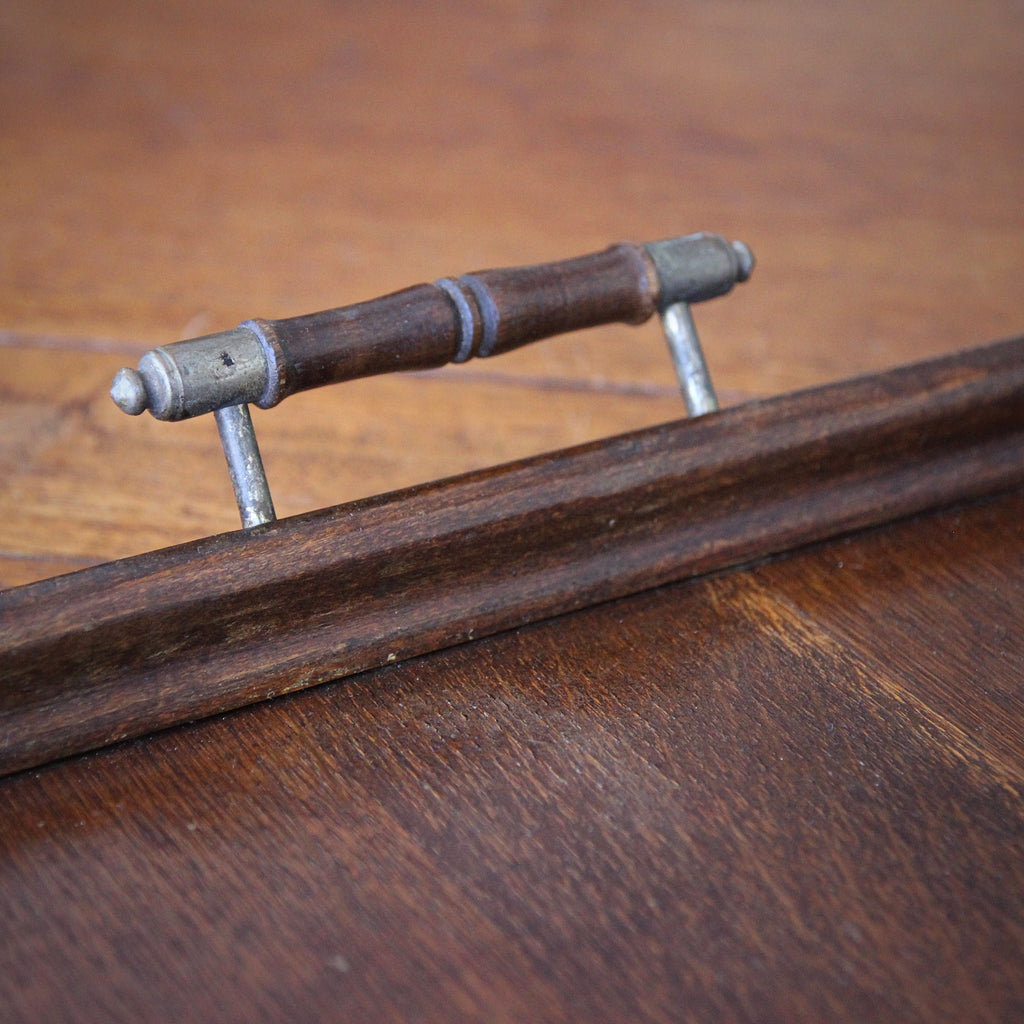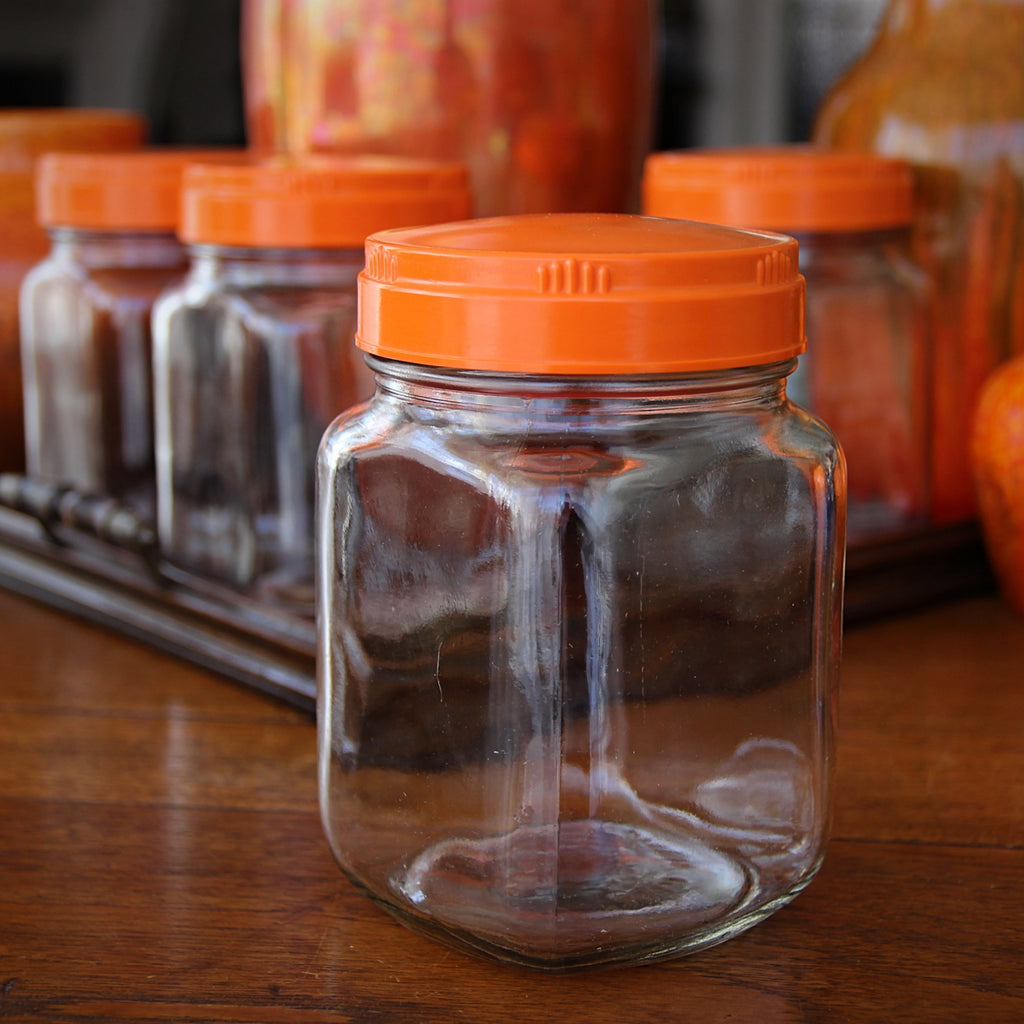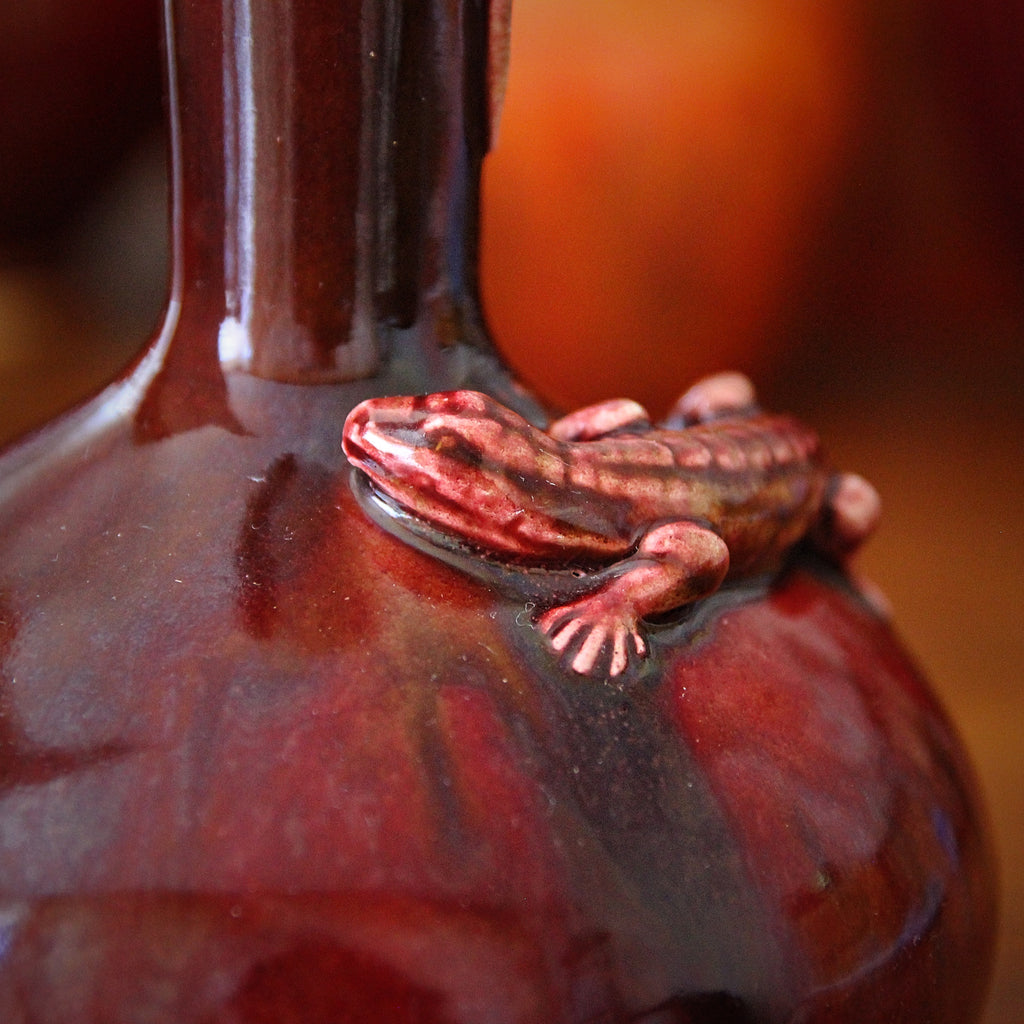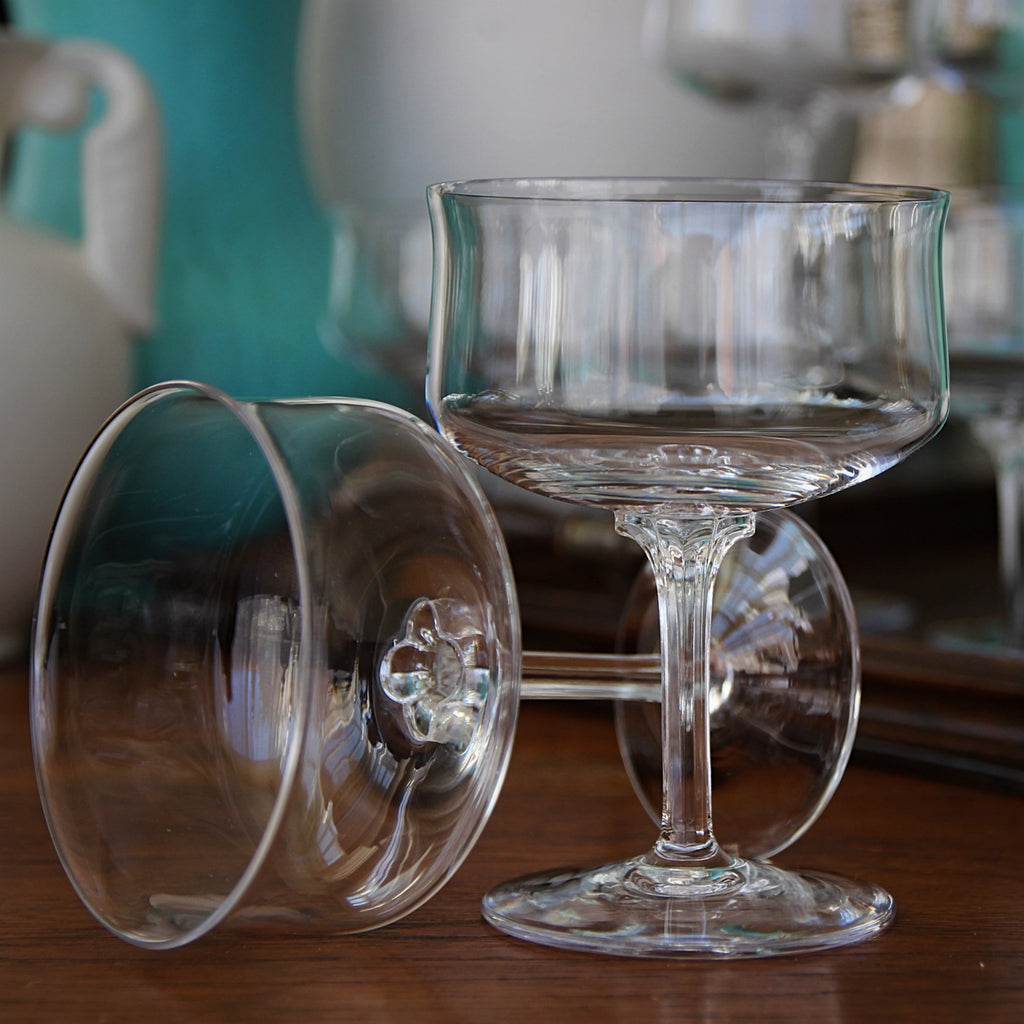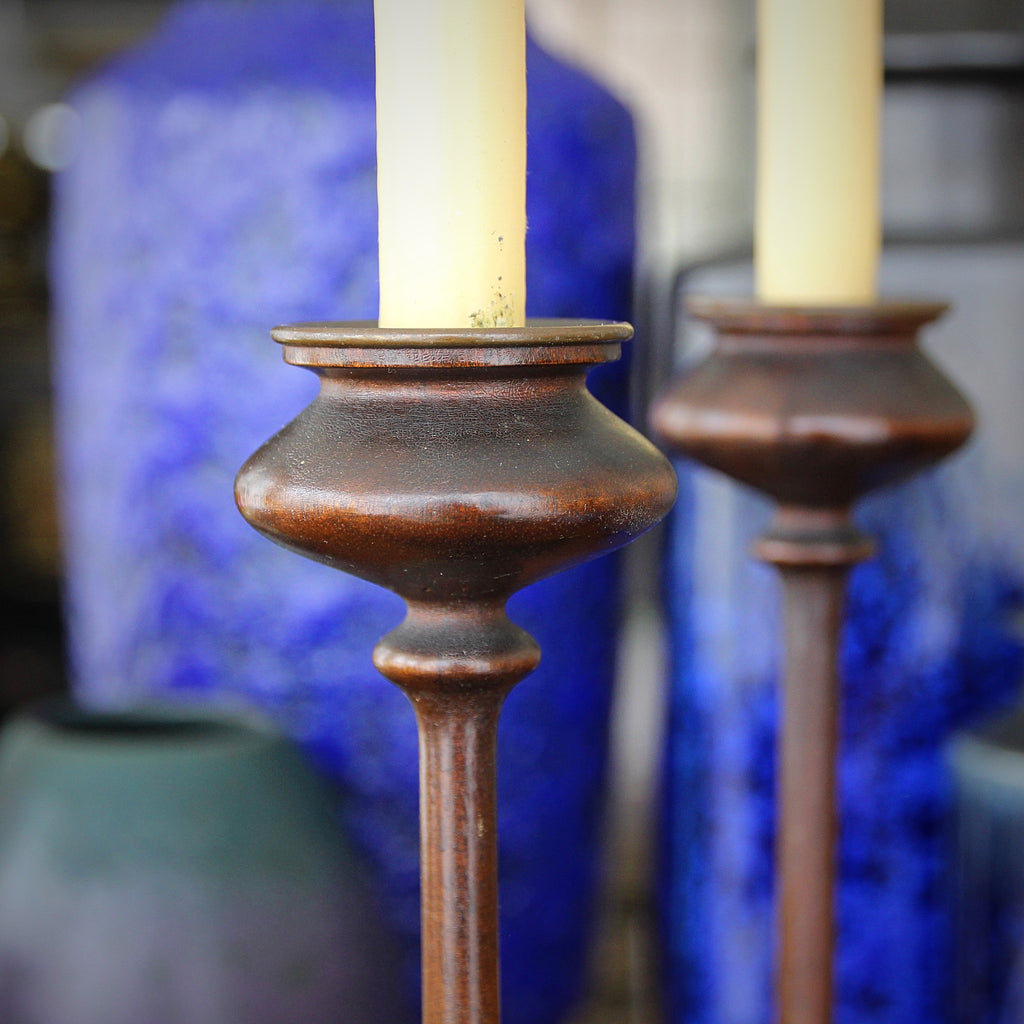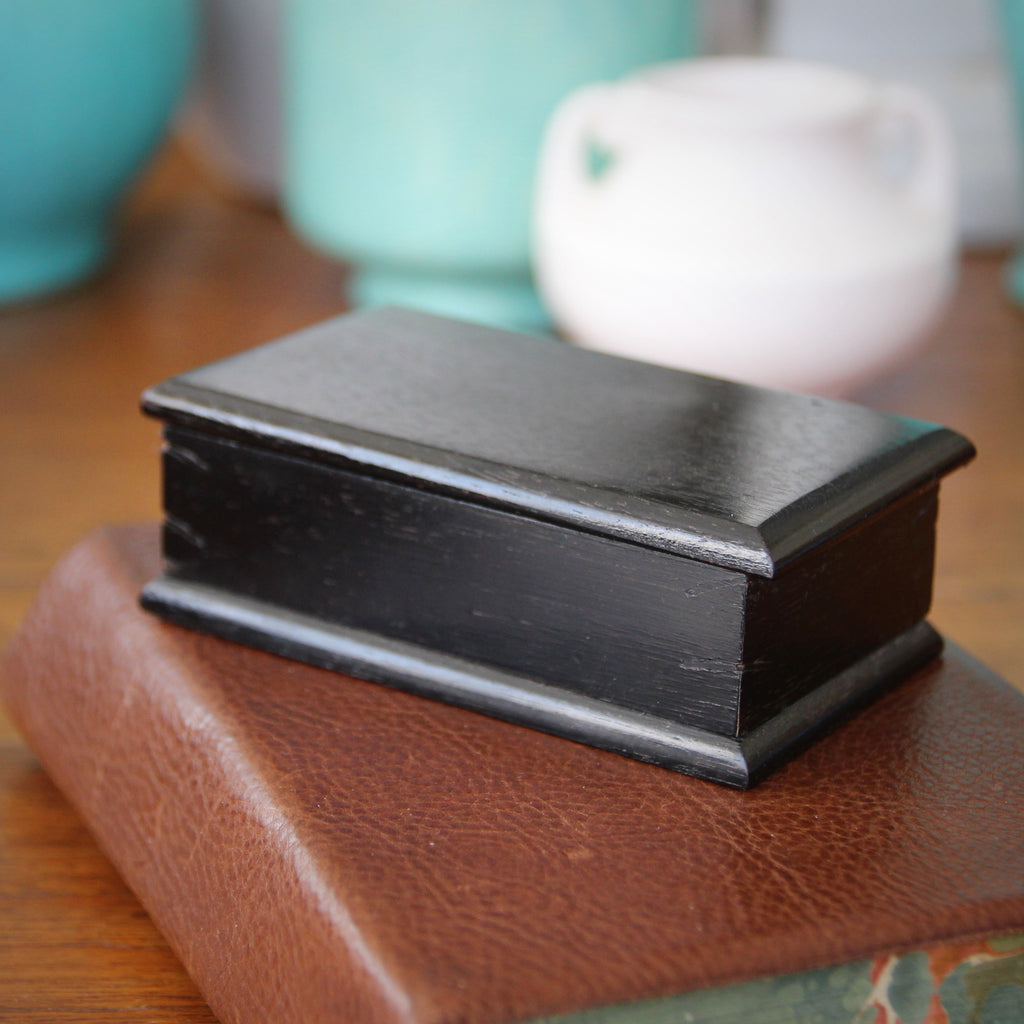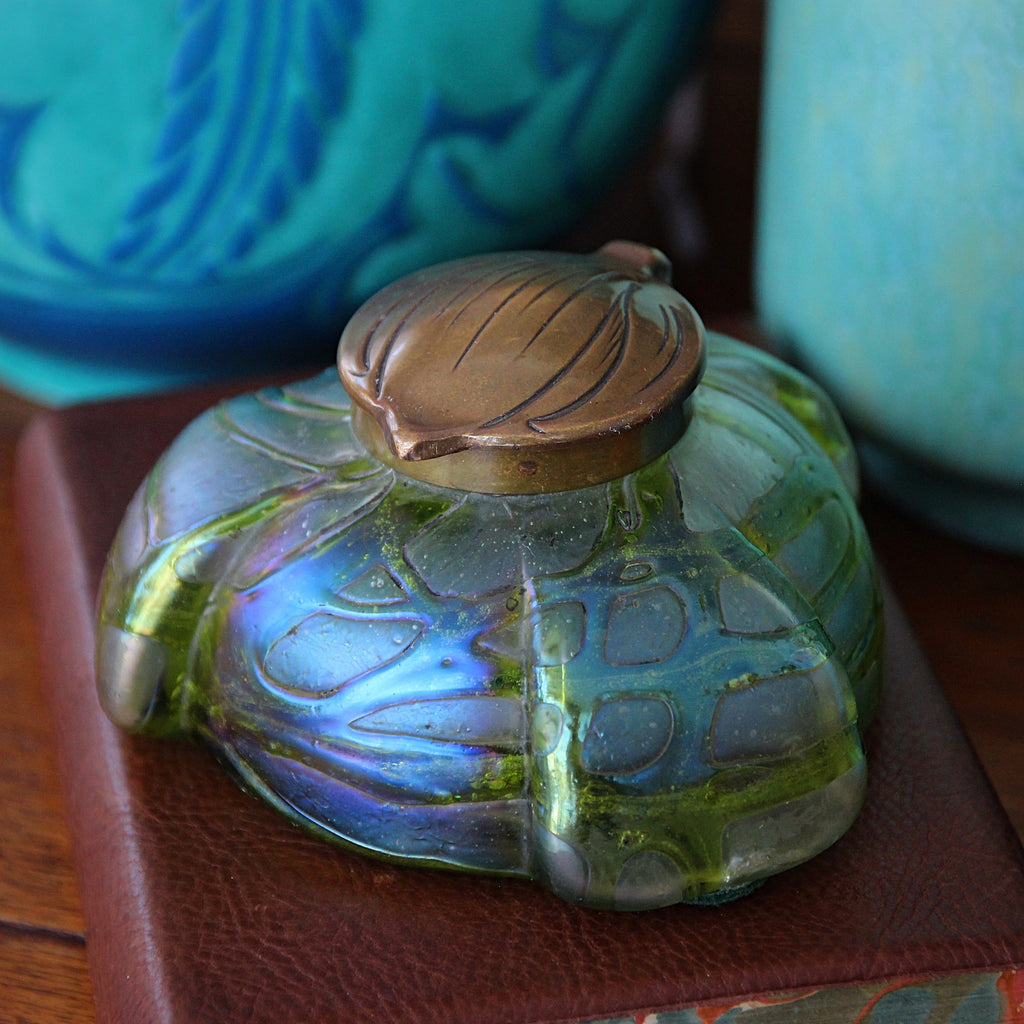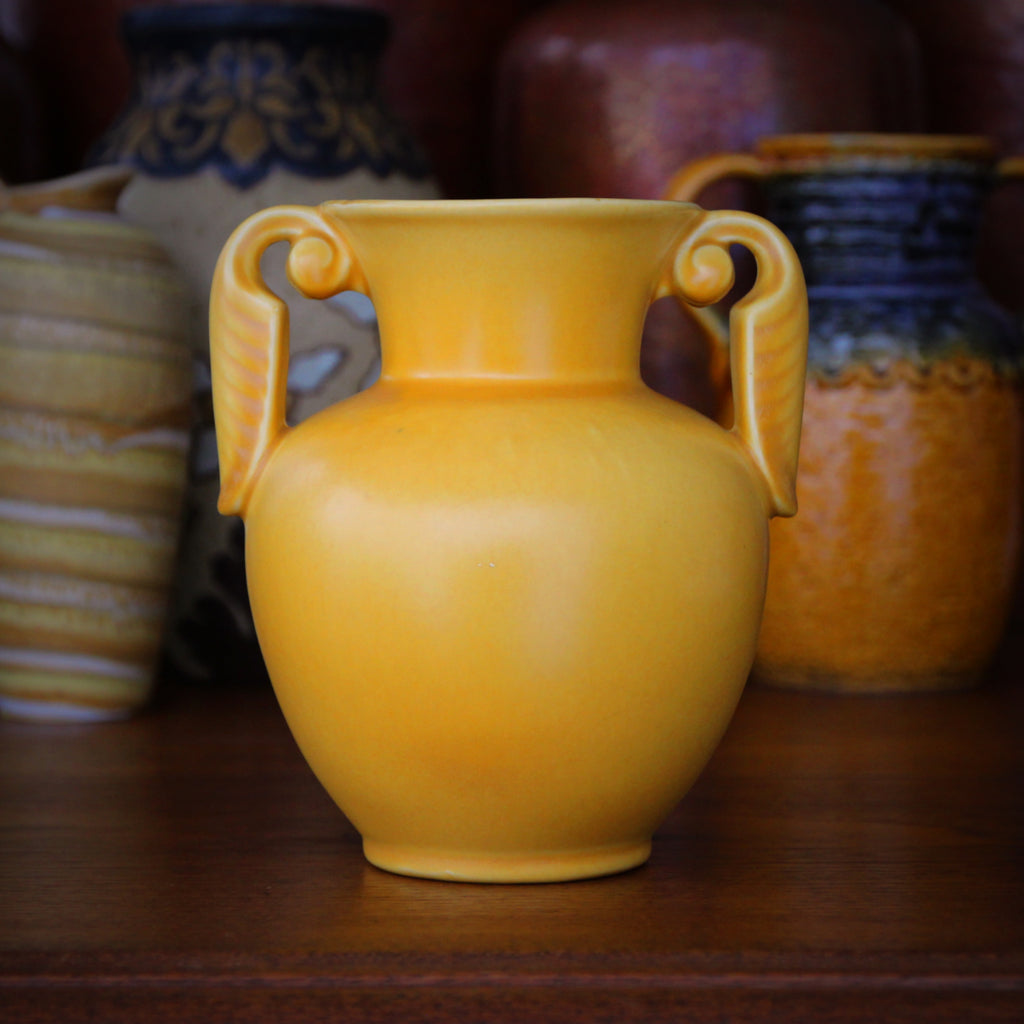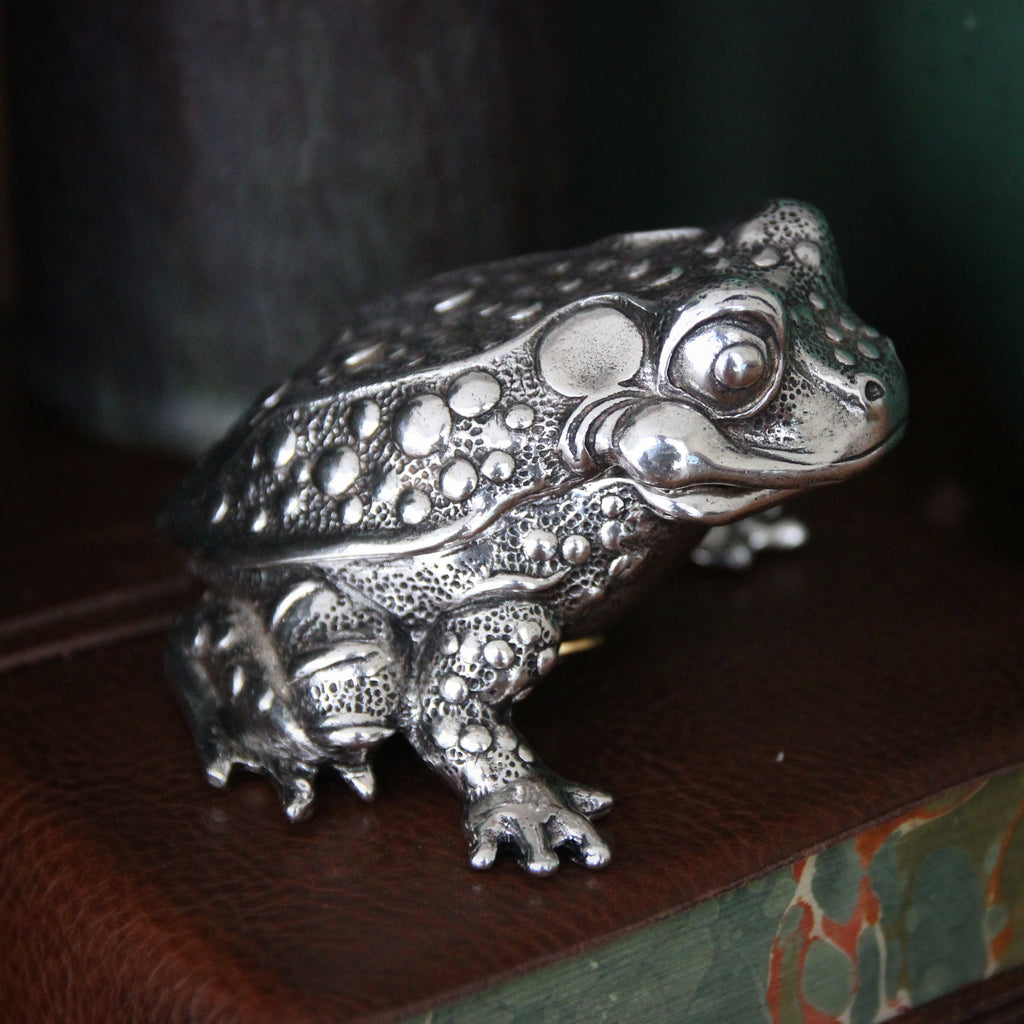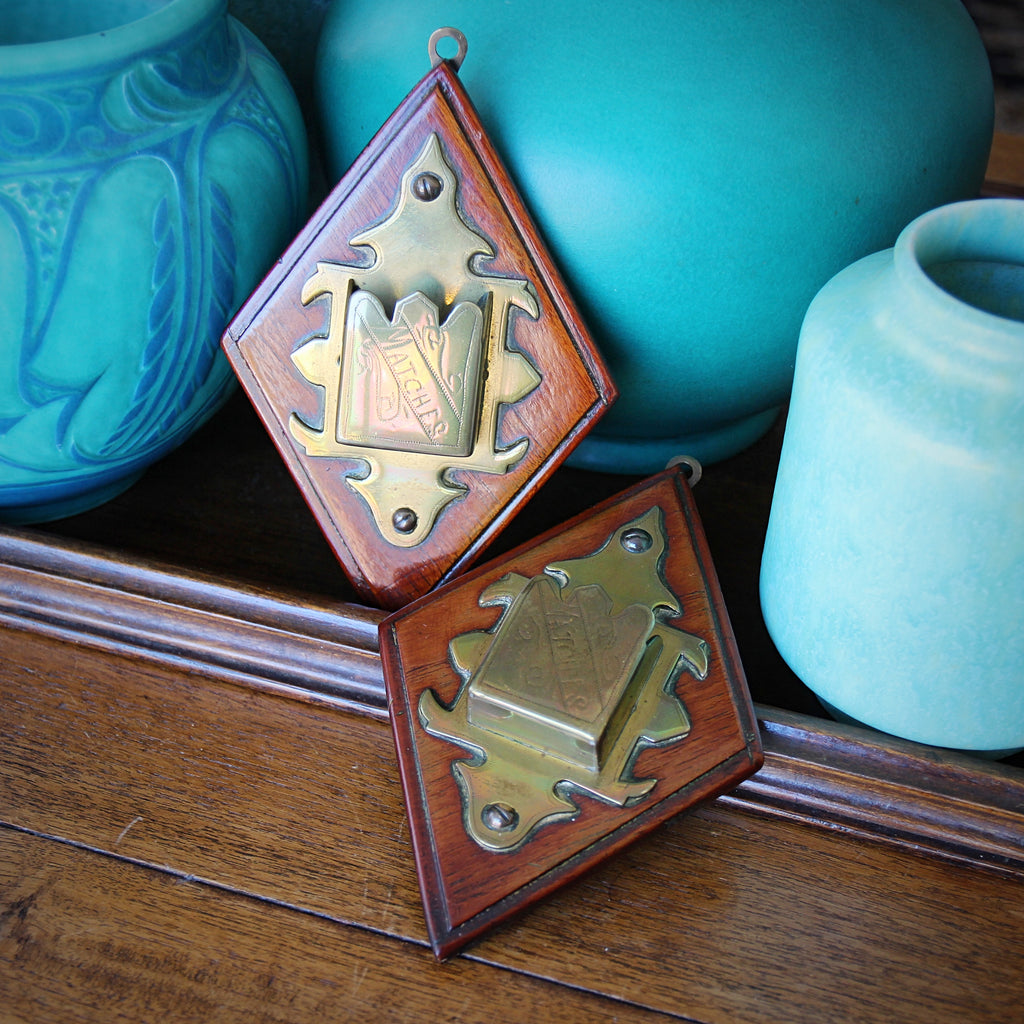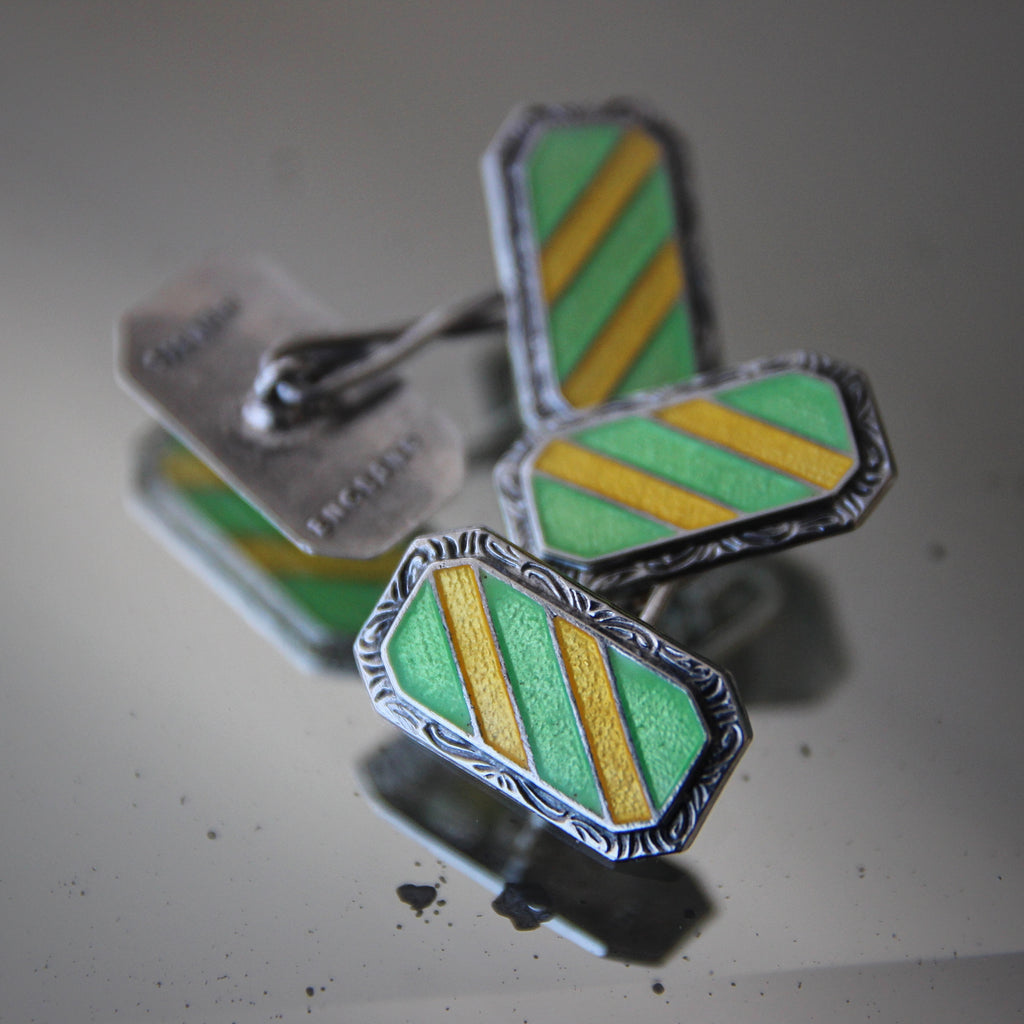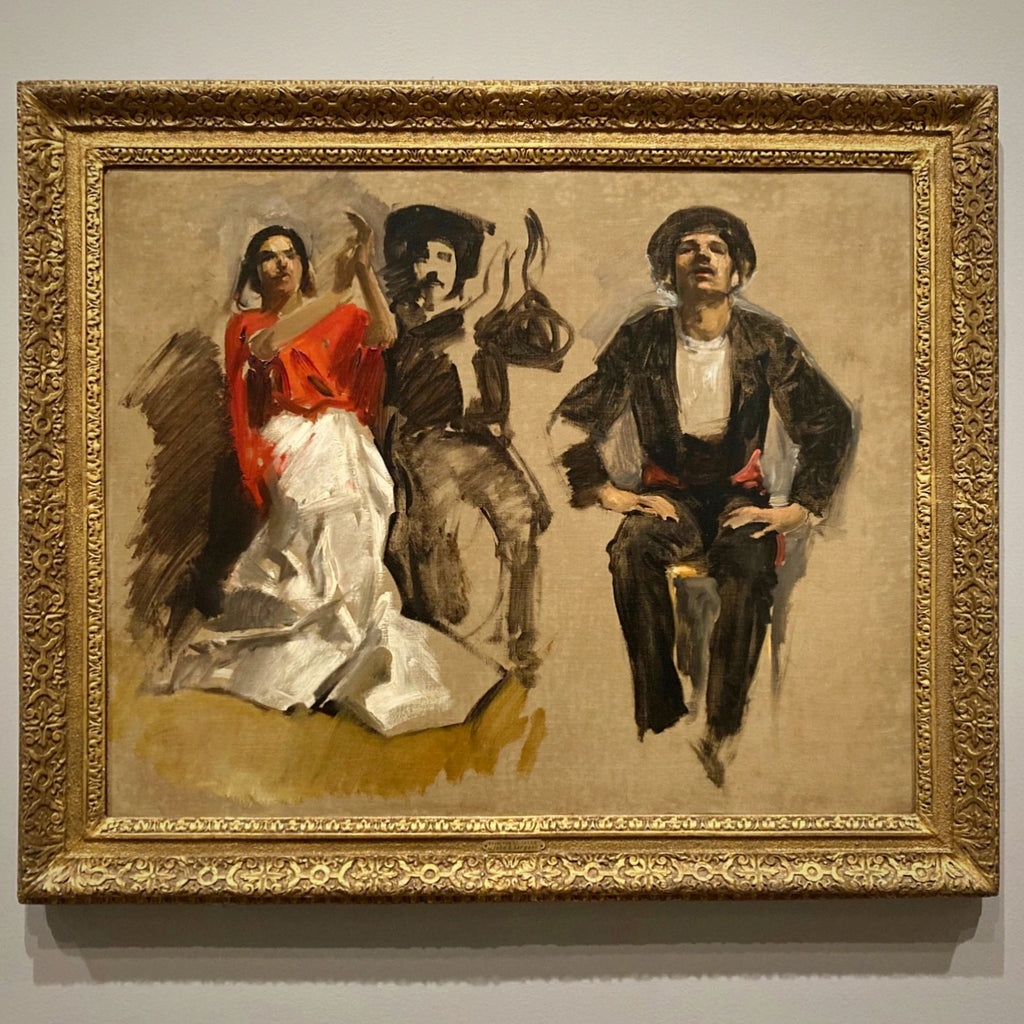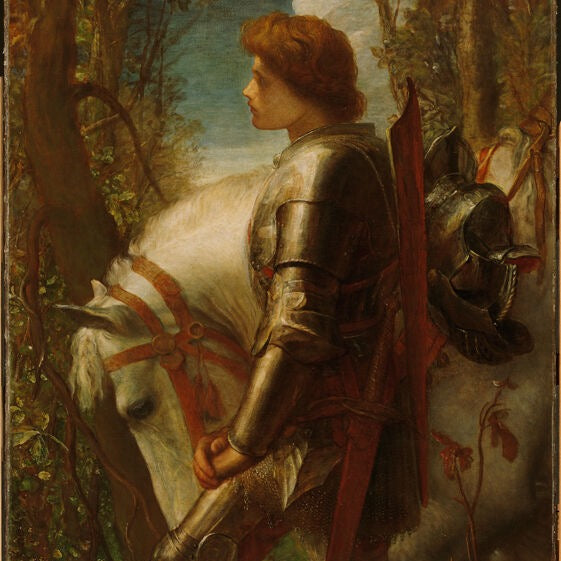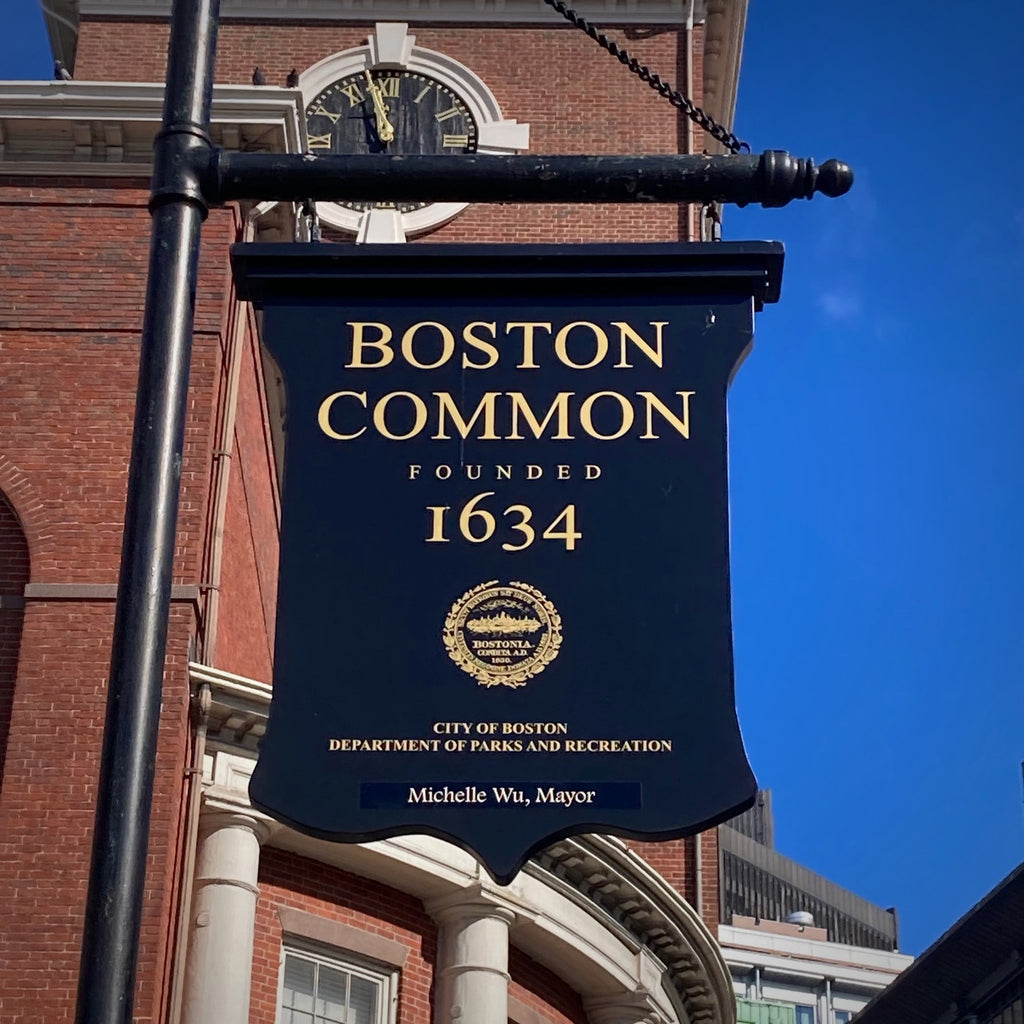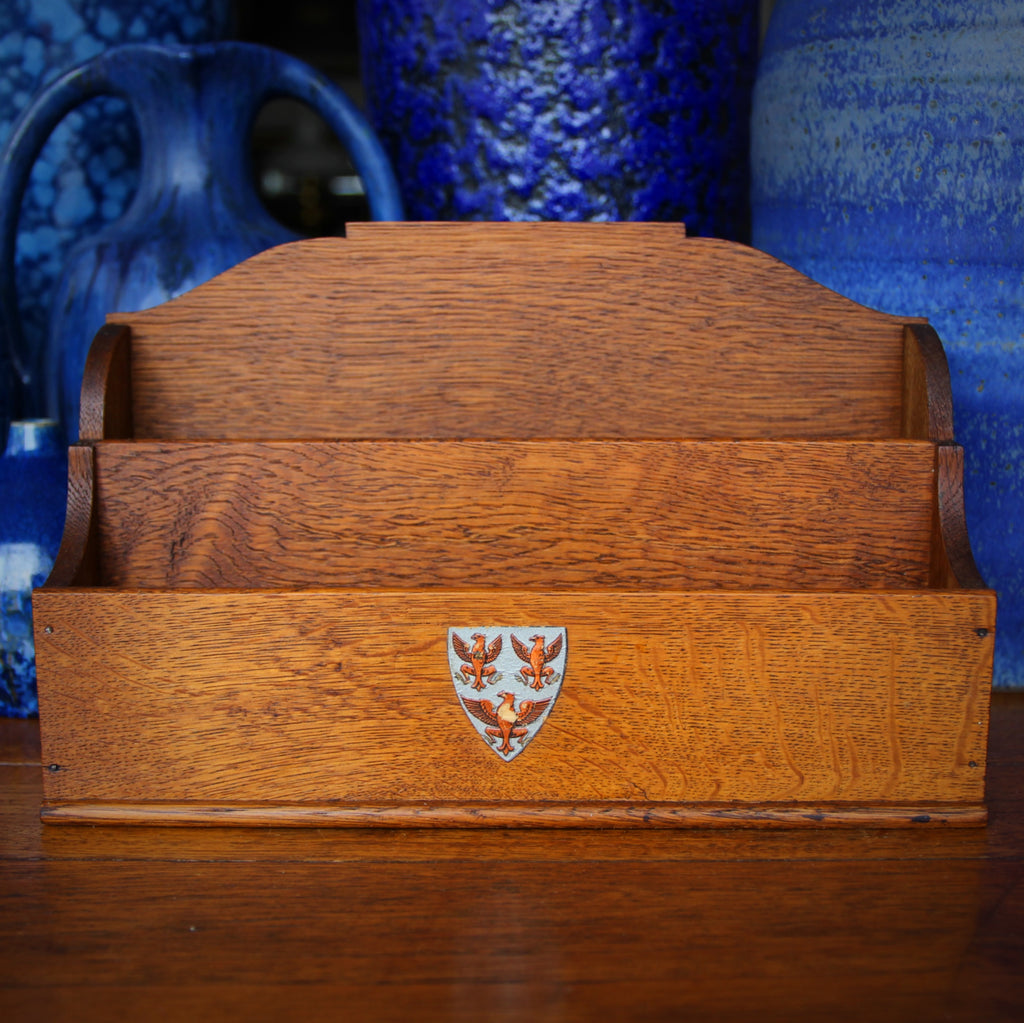JOURNAL RSS
In the Hebrew Scriptures, Wednesday is the fourth day of the week. Genesis tells us that God created the Sun, the Moon and the stars on this, the fourth day. The greater orb, The Sun, would rule The Day. The lesser orb, The Moon, would rule The Night. Similarly, most Muslims view Wednesday as the fourth day of the week (which begins on Sunday). In those countries which observe Friday as "the day of rest" (for example, Iran, Somalia or Djibouti), Wednesday is their fifth day. Most modern Christians consider Wednesday the third day. In German, Wednesday is called Mittwoch (that is, "Mid-Week"). Finns say Keskiviikko or "Middle-of-the-Week."
Hanukkah in July!
At LEO Design, Hanukkah is coming early this year. I just received my cast bronze Hanukkah Menorah—beautifully-sculpted in the form of a wind-swept cypress tree. As beautiful as it is for Hanukkah, one might just want to keep-it-out all year 'round. Atop a mantelpiece (where one cannot see the candle holes), one might not even realize that it's a menorah. Click on the photo above to learn more about this handsome piece—which is sure to become a treasured family heirloom. An interesting fact: this year, Hanukkah begins on the evening of 25 December—Christmas Day. Of course, Hanukkah falls on different days each year (as it follows the ancient Hebrew calendar which is based on the cycles of the Moon). ...
Welcome, July!
Welcome, July, and your handsome birthstone, the ruby! Rubies have always been amongst the most precious of "cardinal" gemstones—along with diamonds, emeralds and sapphires. In fact, rubies and sapphires are just different colors of the same stone: Corundum. This clear, hard stone is principally aluminum oxide. Different metallic "impurities" give the stone its different colorations. In the case of rubies, chromium is the impurity which makes it red. Corundum becomes blue (a sapphire) due to iron and titanium impurities. Both rubies and sapphires are very hard (which measure 9 on the Mohs Scale); only diamonds (with a hardness of 10) and moissanite (9.5) are harder. The most beautiful, valuable stones are used for jewelry. Lesser examples are used for watch...
Sun-Day
I cannot help but think of the Sun when I look at this cheery, Bavarian Jugendstil porcelain vase. A handsome Art Nouveau floral pattern peeks through the gilt glazing. It was made by Graf & Krippner in Bavarian Selb—in Germany, along the Czech border. Having been created so close to the Austro-Hungarian border helps explain the "Viennese aesthetic attitude" of the vase. The mark indicates it was made in the company's earliest years, 1906 to 1911. Selb is famous for its porcelain manufacture and is the headquarters of the Rosenthal manufactory. While the piece can be used to hold a stem or two, this vase is perfect for standing as punctuation within a collection of gold ceramics or glassware.
Summer First
Today, at 4:50 pm, Summer will have officially begun. Today is also the Summer Solstice, the longest day of the year—that is, in the Northern Hemisphere. It's the shortest day of the year in the Southern Hemisphere. As every schoolchild learns, the Earth spins on a vertical axis, an axis which tilts back-and-forth over the course of the year. On the day of the Summer Solstice, the North Pole (that is, the Northern axis), is tipped as close to the Sun as it will get. Thus, today, the Northern Hemisphere is receiving maximum Sun exposure (and the maximum number of hours of sunlight). Starting tomorrow, the axis will begin to slowly tip-back, away from the Sun, and the days' periods...
Juneteenth
What does "Freedom" mean? Poets, scholars, philosophers and theologians have been arguing the word's meaning for centuries. And it's possible that different people may hold a differing definition of "freedom" in their hearts. Nevertheless, freedom is important to all people, however they may define it.
In one very important way, on this day in 1865, America took another step toward its promise of freedom. Federal troops arrived in Galveston, Texas, to enforce President Lincoln's executive order, The Emancipation Proclamation—which had become effective a year and a half earlier. Texas—one of the Confederate States—deliberately had not informed its slaves that they had been liberated. Union General Gordon Granger rode into Galveston to announce (and enforce) the law.
József Pulitzer
On this day in 1917, the first Pulitzer Prizes were awarded—in three categories: Biography, History and Journalism. They were awarded by Columbia University in New York, thanks to an endowment by Hungarian immigrant, József Pulitzer (1847-1911), who had made a fortune in American publishing. It was Pulitzer's bequest which had established the Columbia School of Journalism in the first place. Pulitzer was born to a Jewish family in Southern Hungary, near Romania. His father was a successful merchant and eventually moved the family to Pest (along the Danube River, the eastern portion of Budapest). The Pulitzer children were privately tutored, learning French and German. When Pulitzer's father died, however, the family went bankrupt, forcing the young József to find work....
Rainy Days and Mondays
Despite the wisdom of the Carpenters, neither rainy days nor Mondays "really get me down." Not when I have such a handsome English Arts & Crafts "stick stand." A variety of woodworking techniques—piercing, turning, chamfering, crenelation—create a most handsome and useful piece. And the brass drip bowl is well-darkened with years of hard-earned patination.
The End of Italian Monarchy
On this day in 1946, the people of Italy voted to abolish their monarchy (54% to 46%) and the Republic of Italy was born. From this point, by law, no male heir to the crown (or queen consort) was allowed to set foot on Italian soil. Within 11 days, King Umberto II left Italy peacefully, never to return. He lived most of his final 37 years in Cascais, along the "Portuguese Riviera." This last Italian monarch, Umberto Nicola Tommaso Giovanni Maria di Savoia, had only been king for about five weeks. His father, Vittorio Emanuele III (who had ruled since 1900), stepped-down and let his son succeed him. The former king, Vittorio Emanuele III, was exiled to Egypt and died...
Welcome, June
June is here—with her flower, the Rose.
Roses have grown in the wild for tens of millions of years. 50-million-year-old rose fossils from the Eocene Period (which means, roughly, "The New Dawn") have been uncovered by archaeologists in Colorado. Roses are depicted in Minoan art (circa 1400 BC) and in Egyptian tomb paintings shortly thereafter. And ornamental roses are known to have been cultivated by the Chinese, Persians and Mediterraneans from about 500 BC. There are over 300 different species of natural roses and tens-of-thousands of man-made "cultivars" (that is, special varieties of roses purposely bred to accentuate selected traits like color, size, fragrance, form or hardiness).
Back to England - IX
The capstone of my trip to England was to see my husband's production of The Marriage of Figaro at Garsington Opera, nestled in the Getty Estate at Wormsley—half-way between London and Oxford. Bob designed the scenery and costumes. The Garsington Opera was founded by Leonard Ingrams, a financier and operaphile. The operas were performed on the stone terrace of Leonard & Rosalind's home—Garsington Manor which was built in the 1630's and added-to every century since. A temporary, tented auditorium provided about 500 seats. The Ingrams's living room became the domain of light boards, electrical panels and stage management. The kitchen became a make-up room. The bedrooms, dressing rooms. After Leonard died in 2012, the Garsington Opera company found a new patron—Mark...
Back to England - VIII
Cardinal Thomas Wolsey—the highest-ranking official in the English Catholic Church and the closest, most-trusted advisor to King Henry VIII—began building Hampton Court Palace in 1514, on the grounds of a Catholic religious order, about 12 miles outside of London. It would soon become the grandest palace in all of England—built to compete with the finest Renaissance palaces of Europe (an intentional political statement). The powerful cardinal—with his connection to Rome—was able to bring-to-England the energy of Italian Renaissance design, then the cutting edge of style. When Wolsey fell from the king's approval, the cardinal offered the palace to Henry as a token of submission (in 1529)—an act which did not spare Henry's wrath and revenge. Henry did, however, love the palace...
Back to England - VII
I've already stated my admiration (my adoration?) of John Singer Sargent. In my book, he is the finest artist of the Modern Era. What I admire most about him is the bravado, spontaneity and confidence of his brushstrokes. He tells us so much with a single squiggle of his brush. And, although he was the finest of portraitists, one can only know him when they see a fuller representation of his work—especially the pictures he painted "for fun." Right or wrong, I feel that I know Sargent. I believe I can tell (within reason) what he was feeling when he was painting a particular portrait. My conclusion: he loved being with (and painting) fun, larger-than life women. And he really...
Back to England - VI
This morning we took the train from Oxford into London. We went into town to see the ravishing exhibit at The Tate Britain: Sargent and Fashion. My husband and I both would rank John Singer Sargent as the finest of Modern Era artists (where "Modern" is defined as "from the Industrial Age onwards"). We had hoped to see the same show in Boston, where it originated, but were unable to make that trip before it closed at the Museum of Fine Arts. So here we are—in London, where Sargent lived for a time and did a good bit of his work.
Back to England - V
Perhaps the most famous college at Oxford—with one of the largest financial endowments—is Christ Church College. Its founding began with Cardinal Wolsey who began building Cardinal College in 1525. Thomas Wolsey, a Catholic priest and cardinal, was extremely powerful—sometimes referred to as Alter Rex ("The Other King"). As cardinal, he was the highest ecclesiastical authority in England (that is, until Henry VIII, his benefactor, took that position for himself). As England's Lord High Chancellor, he was the most important advisor to the king. And Wolsey's fingers seemed to be in every pie: managing religious matters, reforming the tax and judicial systems, collecting art, and driving one of England's biggest building booms in its history (unsurpassed by most British kings). As a churchman...
Back to England - IV
Elias Ashmole (1617-1692) was an English naturalist, politician and "collector of curiosities." Although he had aristocratic ancestors, his family had fallen into "a less exalted position" by the time he was born. Through good marriages (and his support of the monarchy during the English Civil War), he re-established the Ashmolean fortune. After Charles II was restored to the throne, a series of important appointments helped fund his incessant collecting of art and antiquities. He was especially interested in the sciences—which were advancing greatly during the Age of Enlightenment.
Back to England - III
In Evelyn Waugh's Brideshead Revisited, Charles Ryder (played by Jeremy Irons in the television series) seeks a place for him and Lord Sebastian Flyte to reside together during their final term at Oxford. Charles relates, "The weeks went by; we looked for lodgings for the coming term and found them in Merton Street, a secluded, expensive little house near the tennis court." Money wouldn't be a problem; Sebastian was very wealthy. But the strength of their love affair would be tested: by Sebastian's alcoholism and the social disapproval of the times. Brideshead's author, Evelyn Waugh, was at Hertford College. His friend, Hugh Lygon, was at Pembroke College. The two did live together for a time on Merton Street in the...
Back to England - II
Oxford's architectural grandeur should not distract one from the smaller details—the exquisite handcraft—which adorn this medieval city. The University is comprised of numerous colleges—each secreted behind well-fortified walls. Mystery abounds; what beauty lies behind each protective barrier? Luckily, there are abundant little teases which we, the General Public, are permitted to see. Little gems of sculpture decorate Oxford. Shown above, one of several carved stone lion gargoyles along the Western exterior wall of Saint John's College. The college, founded in 1555, is arranged around seven interior quadrangles. It was all-male until 1979 when the school became co-educational. Because of its lucrative real estate holdings (it owns the land beneath many 19th Century Oxford homes), Saint John's College is the wealthiest...
Back to England - I
When I travel to England, I typically shoot straight into Central London. On this trip, however, I collected my rental car at Heathrow and drove-up to Oxford. My husband, Bob Perdziola, is working at the Garsington Opera (half-way between London and Oxford). We are staying with good friends in Oxford. Oxford University was established in 1096—making it the second-oldest university in the world (behind the University of Bologna, established in 1088). Oxford consists on 43 self-governing colleges, each of which admits its own students and manages its faculties and premises. The University's most-iconic building, shown above, is the Radcliffe Camera ("camera" is from the Latin for "room" or "chamber"). It was built between 1737 and 1749 (with funds left by physician...
Richard Wagner
Richard Wagner was born on this day in 1813, the ninth child in his family. His father died when Richard was six months old and the boy grew-up believing that his stepfather, Ludwig Geyer (a playwright and actor), was his biological father. Young Richard took music lessons and was enchanted with the theatre. He participated in Ludwig's stage productions. While he struggled with the technical rigors of piano exercises, he was able to write music and reproduce opera scores by ear. He also pursued playwriting. At 13, he began writing a tragedy which he hoped to musicalize. The next year, after he first heard Beethoven, he wrote a piano transcript of the composer's Ninth Symphony. Mozart inspired him, too. Wagner...
Spring Beauties - III
This week we're sharing some of our favorite Springtime cufflinks—like the smart and handsome pair shown above. Bold stripes of lime green and bright white enameling add fresh Springtime energy to this pair of English Art Deco sterling silver cufflinks. They're sporty, clean, and perfect for Spring and Summer.
Spring Beauties - II
Cornflower blue—with its blush of purple—has always been a favorite color of mine. As it was for Dutch Master Johannes Vermeer. The cornflower is the national flower of Estonia. And the "Cornflower Blue Sapphire" is the most valuable of all sapphires.
This pair of Art Deco enameled cufflinks juxtaposes most-satisfying cornflower with the crisp contrast of bright white. Perfect for Spring—and into the Summer, as well.
Spring Beauties - I
Spring, glorious Spring! New growth. Fleeting flowers. Getting dirty with Winter clean-up, early weeding and fresh plantings.
One of the most beautiful parts of Spring—aside from the longer and warmer days—is the soft Springtime colors. So, this week, we will be sharing some of our nicest "Spring Beauties": cufflinks which capture the soft beauty of the season.
Shown above, a pair of sterling silver Art Deco cufflinks with soft celadon green enameling. Swirls of machine-turned guilloché provide subtle, radiant energy.
Brushin' Up
When I was a boy, I remember the Fuller Brush Man coming to the house every couple of months. His range of items on-offer seemed endless, a brush for every conceivable household purpose. There were toothbrushes, toilet brushes, hair brushes, scrub brushes—even brushes to clean other brushes. My mother usually placed a little order with each visit. We don't seem to use as many brushes today. Or as often. In the past, many households—working or middle class—had a "hall butler" near the door: a hanging mirror with hooks or a shelf to hold a few brushes, It was customary to take a quick look in the mirror before leaving the house. And one could brush-off any lint or dandruff...
First Class
In the 1990's the City of Pittsburgh built a shiny-new airport for its homegrown airline, US Airways. The city spent $1 billion dollars, satisfying US Airways's wishlist of cutting-edge requests. Completed in 1992, the New York Times called the new Pittsburgh Airport "The Airport of the Future." US Airways was founded, as "All-American Aviation" in Pittsburgh, in 1937 as a mail delivery service. Before long, the airline began carrying regional passengers and, in 1953, it renamed itself Allegheny Airlines. The airline changed its name again, to USAir, in 1979. After acquiring a handful of other regional airlines, it operated an extensive national and international network of routes. In 1997, they changed their name, once again, to US Airways. The carrier flew...
Eagle Rising
Heraldry is "the system by which coats-of-arms and other armorial bearings (that is, "military symbols") are devised, described and regulated." To some, the study of heraldry may seem like a frivolous pursuit. But the "art and science" of heraldry is deadly serious to those who employ it: monarchies, militaries, religious denominations, aristocratic families, and hierarchical societies. The use and regulation of heraldry is all about propriety and rules. Different institutions—sometimes over centuries—have developed heraldic customs and subtleties that must be complied with, monitored and enforced.
Lemon-Twist
This is a French lemonade pitcher with a twist. The porcelain form—jug, spout, handle—was made in Limoges, France, fired with the classic, smoothly-finished porcelain surface. Then it was shipped to Chicago, USA, as a "blank," to be hand-decorated by American artisans. The piece was made by Tressemanes & Vogt (in Limoges) and hand-painted by the Jacob Stouffer Company (in Chicago). This arrangement was sometimes orchestrated by ceramics makers in order to create variety of the end product—to create products which would appeal best to the end consumer. It also allowed a company like Stouffer (which specialized in excellent ceramic painters) to avoid having to manufacture their own blanks (a whole separate area of expertise). Stouffer could purchase (more economically) higher-quality...
May-ple
Mayo, Maypo, Maypole, Maple. Some days the puns flow more easily. Today's not that day.
Day-in and day-out, regardless of the month, this maple "dish" remains handsome and moderately useful. It is cast of pewter and finished with a brassy wash. The dip in the center makes it perfect for holding a few small objects: paperclips, cufflinks, rings or house keys. It would also "present" a small stack of business cards with "North-of-the-Border" style.
Three Little Bowls
Here is a trio of bowls to give your next dinner party a lift! These three bowls, "squeezed" into their triangular shapes while the glass was still hot and pliable, are finished with a heavy "mirror fade" silver rim. They were made by Dorothy Thorpe in the Sixties—who would purchase quality glass "blanks" from other manufacturers and decorate them with her signature silver trim. These three bowls are great for nuts, candy, or assorted trimmings on a sundae bar.
Mother's Day
Happy Mother's Day to the women who birthed and raised us—and to those who nurtured, educated and guided us, whether related to us or not.
Hammered Elegance
Like the candlesticks we shared earlier this week, this elegant pair of American Arts & Crafts candlesticks have a botanical inspiration. The "cups" resemble tulip buds, just ready to open. The shafts reflect tapered, tightly-bundled tulip stems. And the "bobeches" are cut into a scalloped, petal-form shape. The entire candlestick is hand-hammered and silver-plated. They were made in Meriden, Connecticut around 1910.
Crystal Glasses
These Eighties Modernist slab-footed glasses are not very old, more vintage than antique, but they are good quality crystal and have a nice handfeel. The gently-curved vessels sit atop a chunky, foot.
My Favorite Things
One of my favorite finds of the last few months: a pair of English Arts & Crafts turned mahogany candlesticks. The "cup" at the top has a tulip blossom or poppy pod floral-form. And "knuckles" at the top and bottom of the reed-thin shaft give visual weight to the turning. Truly elegant! And much more impressive in-person.
For the Modernist Bar Cart
Perfect for a bowl of ice—on a Fifties Modernist bar cart—this footed glass bowl is simple, elegant and just the right size. It also could be used to serve nuts or candies. The 22 karat gold band around the top rim adds a confident measure of glamour. It measures six inches across and holds 24 fluid ounces. Click on the photo above to learn more about it. Though our Greenwich Village store is now permanently closed, LEO Design is still alive and well! Please visit our on-line store where we continue to sell Handsome Gifts (www.LEOdesignNYC.com). We also can be found in Canonsburg, Pennsylvania, at The Antique Center of Strabane (www.antiquecenterofstrabane.com). Or call to arrange to visit our Pittsburgh showroom (by...
Indian Clubs
Exercise clubs are believed to have been developed first in Persia, called "meels," which were used in individual and group exercise routines. They later became popular in India where Colonial British soldiers discovered and adapted them for their military fitness regimens. It was at this point that they began to be called "Indian Clubs." English Commonwealth and American civilians embraced them during the Late Victorian age. The clubs range in weight from about a pound (for use in calisthenics) to very heavy (up to 100 pounds, for resistance training). After World War II, and the advent of more sophisticated exercise equipment, Indian Clubs lost their popularity. Today they are most often used as a decorative accent for a clubby, athletic...
Tribal Chic
Though the Modernist graphics on these glasses are somewhat ambiguous—are they Greek Key Labyrinths? Tribal shields? Chinese chop marks?—they do add Mid-Century punch to this set of four Sixties highball tumblers. One row of graphics are applied in 22 karat gold. The other two rows are executed in white and black enameling. Each glass holds 12 fluid ounces.
Cinco de Mayo
On 5 May 1862, Mexican troops successfully defended the forts of Loreto and Guadalupe from the larger, better-equipped French forces of Napoleon III. The two forts sit atop a hill overlooking the city of Puebla (about 75 miles Southeast of Mexico City). Although the French came back the following year—and took Puebla—the 5 May event served as a motivating rallying cry for Mexican troops.
Today, Cinco de Mayo is more-widely celebrated in the United States (as a celebration of pan-Mexican culture) than it is in Mexico. However, in Puebla, the day remains important and one can visit two forts which are now history museums.
Star Wars Day
It's "Star Wars Day"! May the Fourth be with You!
I have always been attracted to otherworldly, "planetary" ceramics glazes—dappled, lunar, extraterrestrial finishes, reminiscent of foreign planets (real or imagined). What they lack in bright color, they provide amply in texture and sophistication. I keep a collection of them displayed together (most to be found in the LEO Design on-line store) and enjoy the bold impact of contrasting shapes and organic surface patterns.
The German Modernist vase shown above, made in the Sixties or Seventies by Emons & Söhne, wears a dappled grey glaze over a chocolate brown under-color. It reminds me of the planet Mercury or some yet-to-be-discovered moon.
Sea Turtles
Hawaiian Green Sea Turtles, called Honu, have always been found living in and around the Hawaiian Islands, where I grew up. When I was a boy, most people thought of them as cute, nothing more. Other people hunted them, mounting their lacquered shells on their walls as trophies. But, since I left the islands for college in the early Eighties, Hawaiian Green Sea Turtles seem to have crawled back, regaining their ancient, iconic status as native, indigenous creatures—as symbols of Hawaii and its people.
Loving a LEO
As a LEO, I am fond of cats reflexively. (I also love dogs and have one, Benji.) Alas, I remain unaware of any non-shedding cat breeds. Therefore, my appreciation for cats remains at a distance, for now. The cast iron cat doorstop, shown above, was made by Hubley (in Lancaster, PA) in the Teens or Twenties. It leaves no scattered fur, it scratches no upholstered furniture, it requires no litter box. It is, though, beautifully sculpted—the artist capturing the arched-back energy of a stretching cat (which appears to be smiling—or, perhaps, scowling).
May Day
In many parts of the world, May First is "May Day"—a day to honor laborers, those people who make their livings with their hands and bodies. Strangely, the notion of celebrating workers strikes some Americans with suspicion. Are these people afraid that workers will take over the government? Form unions? Ask for a raise? I have great respect for workers because they are (usually) craftsmen—people who have learned to build or fix things with their hands. Is a woodcarver's artful creation any more beautiful than the best work of a master cabinet maker? A superb painter? An exacting boiler installer? What about a tailor? A cook? A barber? Technical skills, fastidiousness and good taste serve all the trades (and craftsmen)...
Little Treasures
Here's a little place to safekeep your little treasures. Modeled after a traditional Nineteenth Century British money box, this little steel trunk is painted with the classic English black and gold. It's a great place to stash a couple of cufflinks, save a collection of baby teeth or present that special piece of jewelry.
Three Monkeys
Three charming monkeys remind us to "mind our P's and Q's." Nicely modeled bas relief primates pose within an architectural proscenium arch. These cast iron bookends were made by Bradley & Hubbard in the Twenties or Thirties. They still have their original golden finish.
Hawaii Bound - VIII
Waiting at the airport is rarely an enjoyable experience. At least, at the Honolulu International Airport, there is an Asian garden to enjoy—a bit of peace and nature amidst the hustle of passengers and the smell of jet fuel. A lagoon, stocked with koi, adds another measure of zen before we board our flight for home.
Hawaii Bound - VII
It's our last day in Hawaii. So we're heading-out, cloudy or not. The sun is up there, trying to break-through. All we need is a little finishing-touch to our tans—which, as usual, seem to crack, peel and fall-away during the long, dry flight home.
Hawaii Bound - VI
On Oahu—where I was born, went to high school, and completed my first two years of college—we'll be catching-up with several boyhood friends. And going to the beach. One of my favorite beaches on the island is called Lanikai. It is in Kailua, which is right next to my hometown of Kaneohe. Lanikai Beach is gorgeous. It's popular, and it's not very big, so there's usually a crowd (and very little parking). But the water is perfect: gentle, shallow and turquoise blue (more like the Mediterranean than the North Pacific). It's perfect for children and those grown-ups who are not interested in extreme water sports. It's just beautiful.
Hawaii Bound - V
Our time on Kauai has come to an end. Today we head for Honolulu—to spend a few days with friends before returning to Pittsburgh. Our Hawaiian Airlines jet awaits us on the ramp. See you on Oahu!
Hawaii Bound - IV
The storm has (mostly) passed. A nice morning view from my brother's front deck. The top of Mount Waialeale—called "the wettest spot on Earth"—is capped in fluffy white clouds. It should be a nice day at the beach.
Hawaii Bound - III
Poipu, on the Southern coast of Kauai, has the most consistently sunny beaches on the island. There are no guarantees, but the leeward (Southern) shores in Hawaii typically are warmer, drier and sunnier. For this reason, many of the island's resorts are clustered here.
My favorite hotel on the island is the Grand Hyatt Kauai in Poipu. While it is, indeed, a big resort, it is also designed and decorated in very good taste (at least within the common areas I have seen—I have never needed to rent a room). What makes the hotel most attractive is the sensitive way in which such a large property is incorporated within the local topography.
Hawaii Bound - II
Tropical storm or not, today looks great. True, lots of clouds in the sky—but they're big, soft and fluffy. It will be a good day for the beach (especially at the start of vacation, when my winter white skin can use a bit of shade).
But, before the beach, a walk around my dad's acre of heaven. He's an avid gardener and he has many new plantings to show me. Shown above, a skywards view from his front yard: palms, sky, and (lots of) clouds.
Hawaii Bound - I
What a reassuring sight: our tropical-livery airplane already was parked at the gate marked "Lihue." After a long, cold and busy winter, we've been looking forward to our Hawaii getaway. My father's celebrating 89 years this year—and my nieces and nephews are a foot taller each time I see them. The jolly aircraft, being prepared for departure in sunny Denver (shown above), was nearly ready for boarding. I love the United flight from Denver to Lihue. If you can snag an upgrade, that route has lie-flat seats (which the flights from LAX and SFO do not).
The Eleventh Hour Scramble
Benji—shop dog extraordinaire and beloved friend—is good at reading the writing on the wall. He quickly senses when "something's up." When he sees me packing my lunch for work or sees us gathering items for a short excursion, he will post himself near the door—unwilling to be left out of the action. And when we really start packing (like suitcases), his anxiety begins to rise. (For this reason, I keep the suitcases stashed in the attic until the last possible hour.)
Matte Green Ceramics
Among the first Arts & Crafts antique pieces I purchased for my store was a piece of matte green ceramics. It was an extra-large jardiniere and it sold right away—in the first couple of days of business. Since then, I've had a particular fondness for matte green pottery. It has such a wonderful, natural, organic look. When displayed on wood, it is reminiscent of the leaves on a branch. I find the color and the finish restful.
Charles Rennie Mackintosh
We have been taught, "A prophet is never accepted in his home town." It seems this was the case for Charles Rennie Mackintosh, the foremost designer of the Scottish Arts & Crafts movement. His influence, during his lifetime, was more eagerly embraced outside of Scotland than it was at home. Many of his Scottish architectural designs were never built. He eventually abandoned architecture and focussed his later years on watercolor painting. Naturally, once he had died in 1928, his work became increasingly popular in Glasgow and his legacy has now been firm established. Today, one cannot walk five steps in Glasgow without seeing some kind of Mackintosh-inspired graphic or souvenir.
Back to the City - V
Italian Count Ugolino of Pisa was involved in the political struggles which ravaged Medieval Tuscan society. Like Dante Alighieri, the Florentine, Ugolino found himself on the wrong side of the political fight. As a result, in 1289, he was imprisoned in the Muda, a Pisan tower, along with two sons and two grandsons. The tower keys were flung into the Arno and the five family members were cruelly starved to death. Dante (then exiled in Ravenna) featured Ugolino in his Divine Comedy. As the count lays starving in the tower, his sons and grandsons beg their beloved father to eat them—thus preserving his own life. While Dante illustrates the complex anxiety of a man pondering the canabilism of his offspring,...
Back to the City - IV
Some painters seek to flatter their subjects. Others work very hard to do just the opposite. I suppose it comes down to this: Is the painter working for the sitter or is the sitter working for the painter? In the American Wing of the Metropolitan Museum of Art, I came across this charming scene, pictured above. A father kneels besides his son, perhaps explaining the painting to the lad, Washington Crossing the Delaware by the German-American painter, Emanuel Leutze (1851). I had never been drawn to the painting. It always seemed so staged, so theatrically heroic. It has always seemed (to me) to be a "highly-inventive portrayal"—though it does chronicle an actual moment in America's early years (Christmas Day, 1776)....
Back to the City - III
I was standing before my (likely) all-time favorite picture in the Metropolitan Museum of Art when I heard the rumble. It was more of a sound (and a vibration) than a shaking. "Do you hear that?" I asked Bob. It sounded like a slow-speed freight train passing-by on railway tracks—perhaps half a mile away. The only problem: there are no freight rail tracks in Central Park. And the New York City Subway System has spared Fifth Avenue any tracks buried below it. Moments later, the mobile phones of gallery guards began to ping. Husbands, wives, boyfriends and girlfriends began to text their loved ones to report the 4.8 magnitude earthquake which could be felt in the city. Some twenty-six minutes...
Back to the City - II
Standing near the Eastern edge of Central Park, just behind the Metropolitan Museum of Art, is the Ancient Egyptian obelisk known as Cleopatra's Needle. It is over 3,000 years old. During a visit to Egypt eleven years ago, our guide in Alexandria left us with this exhortation: "Please ask your government to send-back the obelisk." Actually, there had been a pair of obelisks in Alexandria: one which went to London and its mate which went to New York. In 1819, Muhammad Ali Pasha, the Ottoman Viceroy of Egypt, presented the two monuments as gifts—one to the Brits, the other to the Americans. At that time, one obelisk was still standing; the other had toppled-over (probably during the Crete Earthquake...
Back to the City - I
After a brutal, nine hour drive through a torrential (and continuous) Spring storm, we finally arrived at the Emerald City. It never fails: each and every time I exit the Holland Tunnel into Lower Manhattan, I exclaim, "Civilization! I'm back!" We came to New York City for a few days to see our accountant, visit friends, attend other events, and have a little fun. I also was delivering a customer's purchase—something a bit too delicate to ship easily. After arriving at our hotel—later than planned—we unpacked and took a little pre-show nap. We had tickets that evening for the Metropolitan Opera: Franco Zeffirelli's Turandot. Any evening in the Metropolitan Opera House is an event. The enormous proscenium arch, the rising chandeliers, even...
In the Beginning
Oh, for the good old days! Wasn't life much simpler then? No worries to bear. No hunting for food. No clothes to wash. Well, we messed it up. And our lives have never been the same. The bookends, shown above, capture Eve luxuriating against a date palm tree—well before The Fall. No apple in sight. And, lest you blame Eve for Adam's fall, please recall, in Genesis, God told Adam that he was not to eat of the forbidden fruit. He never gave Eve such instructions. Nevertheless, when God questioned Adam about eating the fruit, he immediately responded, "The Woman made me eat it!" Such an outburst seems prophetic; for millennia to come, such "blame game" responses have echoed through...
April First, Diamonds and Paperwork
This is one way to organize paperwork. And it's branded "Diamond," the birthstone which begins April First.
The organization of paper makes me think of this story from last week:
Deep within the dozens of boxes of "misappropriated and recovered" government documents this year was found an "Official Presidential Order" written sometime during the waning days of 2020. According to Avril Foulin, staff assistant at the National Archive's Stolen Document Recovery Department, the document—which may or may not have been officially processed—was found in a folder, clipped to commercial import invoices for "Chinese Antiq. Style PVC Ecomomy Fawcet (with high-gloss golden color sprayed)." Interestingly, the presidential order under scrutiny may have been related to these cheap and tacky plastic bathroom fixtures.
Happy Easter!
A Happy Easter to all who observe it! And a joyous Springtime—of renewal and growth—to everyone!
Aluminum Chic
Skyscrapers! Angles! Silvery-shine! This pair of bookends screams "Art Deco!" They were made in the Thirties or Forties by Russel Studios (Chicago), cast of their "Silverlite" alloy—a blend of aluminum and zinc. Aluminum has been used since the 5th Century BC. It was especially important for dying fabrics and paint-making. Although aluminum ore is plentiful, it still was enormously costly, due to the very complicated processes required to make it useable. It was difficult to separate the pure aluminum from its compounds. We are told that when Emperor Napoleon III of France (who reigned from 1852 to 1870) wanted to impress his dinner guests, he'd have the gold flatware removed and replaced with aluminum cutlery. The six pound "cap"...
Michelangelo Buonarroti
When it comes to the arts, I love it all: painting, music, cinema, literature. Fine arts, performing arts, decorative arts. But, of all these disciplines, I think that sculpting will always be my favorite—especially the sculpting of stone. What art-creation could be more difficult, more physically taxing to produce? How does an artist "release" a perfect, delicate work from within the confines of its constricting material? To stand before a magnificent marble sculpture—a cold, dead piece of stone transfigured into a living, breathing human resemblance—is glorious to me. And The Master of All Sculpting is certainly Michelangelo Buonarroti. Michelangelo was a Florentine—born in just the right place at just the right time. Florence, circa 1500, was Ground Zero of...
The Twenties' Modern Woman
The Twentieth Century ushered-in a new conception of "The Modern Woman." Even before World War One—at which time many men were sent-off to war and women filled their work world vacancies—change was already in the air. Women were campaigning for the vote. They were entering the workforce. And they were mixing with men (socially and professionally) in more ways than they had in the Victorian era. The Nineteenth Century stereotype of the demure, frail, house-bound woman was being replaced with images of the active, strong and (even) athletic woman. Charles Dana Gibson's "Gibson Girl" was just such a modern woman.
For the Want of Handcraft
One of the things I dislike about Modernist architecture is its lack of beautiful handcraft—those hand-fashioned details which are the evidence that a human artisan had touched and built it. Masonry. Stone carving. Tile work. Back in the Art Deco Thirties, architects and builders still honored the artistic craftsmanship which gives a building its soul. The builders of Rockefeller Center—constructed during the dark years of the Great Depression—still managed to fund the artwork, the human handicraft, which makes the building special. Inside the building, frescoes by accomplished and famous artists decorate the public spaces: lobbies, hallways and stairwells. Outside, inlaid, painted bas relief panels honor the spirit of industry, commerce, trade work and progress. These exterior Art Deco panels are the aesthetic...
Black & White Chic
While watching The Graduate for the umpteenth time, I was reminded just how popular (and chic) Black & White interiors were in Mid-Century America. When I was a young boy, we had an ultra stylish neighbor down the street. One of the neighborhood kids informed me that she was a divorcée. Her daughter was a classmate and, on rare occasion, I was invited into their house. Her mother had decorated much of the house—including the living room (which we were never allowed to enter)—in Mid-Century Modern Black and White. Somehow, I began to associate Black & White interiors with "fast living" (whatever that meant to an eight year old boy). This notion was confirmed, years later, the first time I saw The...
Dante Alighieri
Dante Alighieri—Italy's most important poet and one of the all-time greatest writers of the Western World—changed the course of Western literature. He affected the way we think of Heaven and the Underworld. Dante wrote in the vernacular (not in Latin, the language of the educated elite). Furthermore, Dante didn't write in "standard Italian"; he wrote in the dialect of his hometown, Florence. Alas, Dante found himself on the losing side of an ugly Florentine political struggle and he was banished, on pain of death, from his beloved home city. It was in Ravenna that Dante wrote his greatest work, the Divine Comedy. It was in Ravenna that Dante died and was buried (and where he remains to this day)....
Palm Sunday
Today is Palm Sunday—the day on which Christians commemorate the final week, hours, and moments of Christ's life on Earth. What starts with Christ's triumphant entry into Jerusalem ends with betrayal, brutal torture, execution and burial in a tomb. Of course, to Christians (mournful as this is), this final "Passion" is the unavoidable pathway to Christ's death and resurrection. Palms—especially palm branches—have enormous significance throughout the Middle East and around the Mediterranean. Of course, the date palm was an important source of sustenance in this hot and arid region: food, shade, and useful materials. The palm branch was sacred to Mesopotamians (c. 6000 BC), symbolized immortality to the Ancient Egyptians, and represented victory to the Ancient Greeks and the Romans....
Good Horsekeeping
I raised horses as a kid. I belonged to 4-H—"The Comancheros"—on the island of Kauai. Through the program, I learned important lessons about horsemanship, responsibility, sportsmanship, and competition. Each day, after school, I had to bid farewell to my friends and head-out to the pasture to ride and care for my horse. Seven days a week. Exercising, grooming, feeding and watering (our pasture land had no plumbing—I had to bring water in numerous 5 gallon canisters). Every couple of months, we had a horseshow which required three or four days of preparation and competition. On occasion, the routine was drudgery; much, much more often, it was incredibly fulfilling. There is an extraordinary relationship which forms between a person and his horse—something...
Sleepy Scholars
A pair of male nudes—young scholars—have fallen asleep, heads resting upon their still-open tomes. They are bronze-clad, in which a sculpted "composite plaster" figure is electroplated in bronze. This "bronze skin" can be finished—patinated, painted or both—as bronze would be. Such bronze-clad items had the appearance of bronze but were much less expensive to produce. Think of them as 1920's "poor men's bronzes," sold in gift shops or museum stores (where one might have just viewed the original work). This handsome pair of Art Nouveau bookends appear to straddle the transition where Art Deco design was just around the corner.
Beware the Satyress!
A Satyr is the Greek mythological "nature spirit"—bestial, feral, sexually insatiable. Called Sátyros by the Greeks, they were semi-divine, often found accompanying Dionysius, the god of wine, music and randy living. Satyrs lived in the wild—in forests or in the mountains—were always male and they were "perpetually tumescent." These tricksters would interact with humans to make mischief or to seduce them. Satyrs have been portrayed in evolving ways: originally as a man with a horse's legs and ears; later more typically human; and, eventually, a man with the legs and ears of a goat. When Greek mythology started to inform and blend with Roman mythology, the satyr seems to have been conflated with Pan (a faun). It was during the Roman...
Mirrored Pairs
A "mirrored pair" of bookends is when the two mates—the two single bookends—are sculpted to face in opposite directions when placed on the shelf. The pair above is a good example: one bookend faces right, the mate faces left. This allows one to place them on the bookshelf, holding-up books, with each one facing-forward. Most pairs of bookends—perhaps 95% of them—are composed of two of the exact same sculpture. In such a case, when in use, one dog will be facing forward, the other will be facing backward (tail-out). Making a mirrored pair of bookends takes more effort and is more costly. Firstly, the foundry needs to create two original sculpted models (and make two different moulds) for each pair...
Hello, Spring!
Spring is here! Today at 11:05 pm is the Vernal Equinox, that day when the Earth's axis is perfectly-aligned with the Sun, such that day and night (on that day) are approximately equal. Equinox means "equal night." Going forward, the days increasingly will be longer than the nights—until the Summer Solstice (20 June), the longest day of the year, after which date the days will begin to shorten.
Speaking of Spring, these bright and cheerful cufflinks are certain to bring a touch of hopefulness to your shirt cuff. They are made of sterling silver and topped with white and lime green enameling
Just A Monk's Friends
Hooded monks stare-out from these polychromed, bronze-clad Gothic Revival bookends made by J. B. Hirsch in the 1910's or 1920's. The company was founded in 1907, on the Lower East Side of Manhattan, by Joseph Hirsch, a Rumanian immigrant. He hired designers to sculpt the original models for bookends, like the pair above. To make bronze-clad bookends, first a model was sculpted. From the original model, moulds would be made in which plaster "composite" duplicates were cast. These plaster sculptures were then electroplated: hung in a vat of water mixed with bronze powder and zapped with an electrical current, during which the bronze powder formed a solid bronze "skin" around the plaster form. Once the bronze skin was attached, the object...
The Wearin' of the Green
Happy Saint Paddy's Day!
As famous—and popular—as Saint Patrick is, his life is heavily shrouded in mystery. He is believed to have lived in the Fifth Century (possibly, some sources say, the Fourth Century) and was born in Roman-occupied Ravenglass (along the Western coast of Central England). According to his autobiographical Confessio, he was enslaved at the age of sixteen and taken to Ireland where he worked six years as an animal herder. After escaping, he undertook a difficult and dangerous journey, finally reuniting with his family in Britain. He later became a priest and returned to Ireland.
William Salter Mycock
Pilkington Royal Lancastrian employed several notable ceramics designers and decorators including Charles Voysey, Walter Crane, Richard Joyce, Gordon Forsyth and Gwladys Rodgers. The artist with the longest career at Pilkington was William Salter Mycock. In fact, his years at Pilkington spanned the lifetime of art pottery production for the company.
William Mycock was born in 1872. His earliest working years were as a freelance "jobber" decorating pottery for various firms in the region. He also painted ceramics at Wedgwood while taking art courses at night. Mycock joined Pilkington in 1894, two short years after the company was founded. At this point, he was decorating Pilkington's ceramic tiles (the company's first product).
Keeping the Home Fires Burning
150 years ago, before the advent of domestic electricity (1880-1900) or widespread delivery of natural gas to homes (1890-1910), coal, wood and peat were the most common household fuels. Lighting was provided by candles and oil lamps. Candles were a domestic necessity—and a convenient storage box would be found in the kitchen, if not several rooms of a large home. Candles might be used to keep a convenient flame at-hand. They (or a thin "string-like" candle called a "spill") might also be used to transfer a live fire from one place to another.
Oh, So English
Much of the time, Art Deco styling is expressed with streamlined shapes, sharp edges and dynamic color combinations. Art Deco was Modern, Futuristic, Ready-for-the-Space-Age. Rocket ships and airplanes symbolized this fast and forceful promise. And Art Deco was wildly popular—incorporated into all manner of design, from architecture to toaster plugs.
This vocabulary of Art Deco crispness certainly was employed in British design. But, over the years, I've noticed a distinct and specific version of English Art Deco—a sub category—which is a little gentler, a little rounder, a little more subtle than its typical American sibling. In this English variety, designers "softened" the typically crisp Art Deco features.
Bretby Orientalism
In the Nineteenth Century, imported Chinese ceramics were all the rage in Europe (especially England). But these costly treasures were beyond the reach of all but the wealthiest collectors. British ceramics workshops began to make goods "in the Oriental style," for the domestic market. Rarely were these pieces authentic. In fact, they were usually over-the-top. And they almost never reached the quality of true Chinese ceramics in form, glaze or handcraft. But they did allow customers of modest means to acquire a small dash of far-away style—a taste of someplace exotic, on the other side of the world, which they could never enjoy visiting in-person.
Small Chairs
There's something I love about small chairs. I don't have children. I've never had a doll. But I can't pass-up a nice, small chair—be it made for a child or a toy.
It's not that I particularly like chairs. In fact, I have always made it a point not to stock "real chairs" (they take forever to sell and take-up too much shop space until that happens).
What I like about small chairs is that they are wonderful merchandising (or home decorating) props. One can place a small chair atop a merchandise display—a table, a shelf or a mantelpiece—and provide automatic "lift" to some featured item. It helps to "break-up" the display area, creating a variation in height amongst the products.
Poole Pottery
The town of Poole, in the county of Dorset, lies along the Southern seacoast of England. In 1873, Jesse Carter purchased an existing "tile manufactory" along the quay (British English for "dock" or "pier"). Around the Turn-of-the-Twentieth-Century, the workshop started making art pottery wares in the Art Nouveau style. After WWI, Poole (still called Carter, Stabler & Adams) embraced jazz-age Art Deco. Around this time, Poole also formed a creative alliance with members of the Bloomsbury Group including Duncan Grant, Roger Fry and Vanessa Bell (Virginia Woolf's sister). Designs evolved into Post-War Modernism after WWII. During all this time, the factory continued to make ceramic tiles. In fact, Poole supplied much of the ceramic tiling for London Tube stations in...
Imperial Glass
In the Nineteenth Century, Western Pennsylvania, West Virginia and the Ohio River Valley emerged as the preeminent glassmaking region of the United States. The region had all the necessary ingredients for glassmaking: raw materials (silica-sand and limestone), cheap heat (natural gas and coal), cheap labor (and much of it from glass-making Eastern European countries) and rivers and railways (to ship-out the finished product). Riverboat captain, Edward Muhleman, had made a tidy sum plying the waters of the Ohio River during America's Industrial boom. As he got older, he found himself ready to wrap-up his "seafaring" career—but he wasn't quite ready to retire completely. He set the goal of building the country's largest glass manufacturer in the Ohio River Valley. He...
Edward Thomas Radford
British ceramicist Edward Thomas Radford (born 1860) was a master of wheel-thrown pottery. He began his career at Wedgwood, followed by stints at Linthorpe, Burmantofts, Doulton, then back to Wedgwood. He was recruited to a new pottery company, Pilkington, in 1903 (it began making pottery in 1904) and he stayed here for the rest of his career. Radford retired in 1936 and Pilkington discontinued art pottery in 1938 (though its ceramic tile manufacturing continued). Radford was a star at Pilkington. He could throw monstrously-sized pots or the tiniest of pieces (only 1.5 inches tall). And he could throw a pot and then fashion a perfectly-fitting lid by eye (and hand) alone. Although many of the pieces at Pilkington were cast,...
Très Convenient
The older I get, the more I appreciate just how convenient a good tray can be. Of course, I have always used a tray when serving my guests at table. But I now find myself pulling-out the tray when I set or clear the table (carrying far more plates, cutlery, napkins or glassware than I could handle without it). The tray makes carrying safer and easier—and it cuts-in-half the number of back-and-forth trips I have to make. I also use a tray when moving merchandise around my home or showroom—and appreciate the reduced number of trips I have to make up or down a flight of stairs. The tray makes it easier to organize LEO Design's collection of cufflinks (which...
A Great Leap Forward
Food canisters are nearly as old as society itself. The successful storage of food marked an important turning-point in mankind's development. Once food could be stored for future consumption, people could settle-down and form communities with some measure of stability. Prior to this, people wandered—hunting and gathering—and were compelled to consume that food (or waste it) before moving-on. The earliest methods of food storage were drying it in the sun or cooling it in a cold spot (a hole in the ground, a cave, or a cool body of water). In time, food storage vessels were made out of ceramic or wood followed by glass and plastic. Food storage techniques gave families a measure of confidence that they would eat—even...
China and Darwin
This vase, probably English or French, ticks a couple of Nineteenth Century boxes: Asian Style and Darwinian Intrigue. Both of these dynamics were at play in the minds of Late Nineteenth Century Europeans. First, there was the Western fascination with "Oriental" art and design—especially Asian style as embodied by Chinese ceramics (which 95% of Europeans could not afford). For a few centuries, Western traders had been crossing vast seas, buying and selling with China, Japan and Southeast Asia. Chinese ceramics were an important (and valuable) part of this trading mix. The Chinese had mastered ceramics production techniques which blew the minds of the Europeans (this despite their fairly primitive kilns and other equipment). Red glazes (including oxblood, as shown in...
Classic and Modern
Here's a nice set of eight (plus one) fine crystal cocktail or champagne glasses, made in the Forties or Fifties. The glasses have a sensuous "tulip-form" bowl and a faceted stem for an easy grip and nice handfeel. A lovely "ring" sings-out the glass's fine quality.
Arts & Crafts Elegance
At first glance—which was from a distance—I thought that these English Arts & Crafts candlesticks were made of cast and patinated bronze. It was only upon closer inspection that I realized that they are mahogany, burnished with a warm, reddish finish. These elegant floriform sticks bear a stylized resemblance to poppies or tulips. The cups are sensuously turned buds. The base is turned, too, with a pleasingly curvaceous profile. Finally, the two "knuckles" floating on each stem provide just the right punctuation to complete perfectly the design. The brass bobeches atop each candlestick—which prevents the candle flame or heat from harming the wood—are darkened with age. They nearly disappear into the wooden candle top.
Ebony
Ebonywood has been used decoratively for millennia. It has a very fine texture and can be highly polished. Carved ebony objects have been found in Ancient Egyptian tombs. The wood became popular in Europe during the late 1500's, when Dutch traders began importing the material which grows in India, Sri Lanka, West Africa, Indonesia, Australia and Mauritius. Recall the heavy, black frames which were popular during the Golden Age of Dutch painting; perhaps some were ebonywood (or other woods ebonized to resemble it). Ebony became popular for European furniture making in the 1600's. In France, such furniture makers were called ébénistes—a word still used for "furniture maker" to this day.
Bohemia's Golden Days
While I love the Art Nouveau, I always have been hesitant to enter "The Art Glass Fray." It's a world chock-full of passionate, opinionated and discriminating aficionados—people who seem to loooove setting other people straight. These experts all seem to have 75 years of collecting experience (and don't you forget it!). Interestingly, my reluctance has proved convenient. Glass breaks easily and I am always shipping merchandise (either from Europe or to my customers). The less delicate merchandise I stock, the less-fraught my life should be. (Right?)
March, On!
Welcome, March, and your flower, the glorious Daffodil.
Is there any flower more hopeful, more optimistic, than the daffodil? It emerges during the chilly bleakness of winter—a sunny, bright, resilient reminder of beautiful days to come. Quite often, it is the only spot of color in an otherwise grey landscape. And what a color it is!
The Stangl Art Deco vase, shown above, is dressed in a saturated daffodil yellow glaze. The vase's form is inspired by a Classical Greek or Roman urn, embellished with a pair of foliate handles—which honor both the ancient aesthetic and the modernism of the Art Deco. And the rich yellow color practically vibrates with sunny optimism.
Time to Leap
A calendar year, on Earth, is 365 days long. However, it takes a little more time than that for the Earth to complete its full revolution around the Sun—365.242374 days, to be precise. (A true "Earth Year" is 365 days, 5 hours, 49 minutes, 1.1 seconds.) This small difference would add-up to 24 days in a century. After 100 years, the calendar would be off by nearly a month. Within 500 years, our Summers would be freezing cold! So, in 46 BC, Julius Caesar instituted a leap day—an extra day added to the calendar every four years—on his new Julian Calendar. This "intercalary date" was still not quite right (the adjustment was too much). So Pope Gregory XIII instituted his Gregorian Calendar (in...
Trench Art
The term "trench art" is used to refer to the folk crafts fashioned of (or partially fashioned of) the used or spare materials of warfare. This art form was especially popular during and after World War One. Trench art was made by all the major WWI participants: England, France, Belgium, Germany, Canada, Australia and the United States. But very little trench art actually was made "in the trenches"—or even on the front lines, for that matter. Much of it would have been made away from the battlefield, for example, at training camps or other military posts. Some might have been made in hospitals by recuperating soldiers. And some may have been made back at home—by soldiers awaiting call-up. Even after...
Three Weeks 'til Spring
Can it really be? Spring is three short weeks away! Spring normally arrives on the 20th or 21st of March. However, this year, because it's a Leap Year, Spring springs one day earlier than normal: 19 March. The first day of Spring is also the Vernal (or Spring) Equinox. Equinox means "equal night." The Equinox is the date when the Earth's axis is aligned such that the Sun hovers right over the Equator. On the Equinox, night and day are (nearly) the same length. And, going forward, the days will be longer than the nights. The cufflinks shown here, made in England in the Twenties, are decorated with sunny enameled stripes: lemon and lime. Though they may be worn any...
Boston's Arts
The Fogg Art Museum at Harvard University is wonderful. It's not very large—in fact, it is quite manageable for a two hour visit. But the collection includes works by many of the greats: studies and lesser-known paintings.
Shown above, a study of the seated figures for John Singer Sargent's El Jaleo, 1882 (the final painting which hangs in the Isabella Stewart Gardner museum, also in Boston). Sargent is my favorite "modern era" artist. With such economy, spontaneity and confidence—with just a few brush strokes—the 26 year old artist was able to paint a white skirt, conveying brilliantly how the fabric drapes over the woman's legs beneath and how the light plays off of the folds of her garment. Genius!
The Quest Continues
I have long wanted to visit the Fogg Art Museum at Harvard—especially once I learned that it possessed George Frederic Watts's painting of Sir Galahad, created between 1860 and 1862. I had long assumed that the picture was in England. After years of pre-internet searching, I finally learned that it was right here in America, at Harvard. Watts, a favorite of mine, used his then wife, the famed English actress Ellen Terry, as his model for the romantic youth. The painting was wildly popular and for several decades it was reproduced (in sepia tones and, later, in color) as museum art prints. Many a boy's bedroom would have been decorated with this print—considered a heroic role model for any young boy. Over...
Banned in Boston?
So much for "Banned in Boston." The "General Hooker Entrance," which most people use to enter the Massachusetts Statehouse, is clearly—and proudly—signposted. You can't miss it. Which is why a certain (delicate) state representative has demanded the sign by pulled-down. She's upset by the possible double entendre—and the probable giggles of touring teenaged boys.
Joseph Hooker (1814-1879) was a Union General in the American Civil War. He was born in Western Massachusetts to an English-American family which arrived in the 1600's.
An Uncommon City
Boston is amongst my very favorite of American cities. My father was born in Chinatown, just a stone's throw from Boston Common. My mother was born across the Charles River in Cambridge. They met at Suffolk University in Downtown Boston. For the first 15 years of my life, we travelled from Honolulu to Boston nearly every summer—"It may be our last chance to see Papa"—where, by the age of nine, I had mastered the Boston Subway (The T) in order to visit the Museum of Science multiple times a week. I travelled to Boston this week to see the premiere of my husband's ballet, Raymonda, at the Boston Ballet (he designed the scenery and the costumes). Of course, I cannot visit...
Wooden It Be Useful? - V
Can one have too much organization on one's desk? This English early Twentieth Century oak stationary stand bears the crest of Queen's College, Oxford. Store stationery supplies: envelopes, paper, business cards. Perhaps a stash of commonly used forms or cards. Or keep your to-do cards and paperwork close-at-hand. And the handsome, wooden construction adds a small touch of architectural interest to your office, den, kitchen or entryway.



